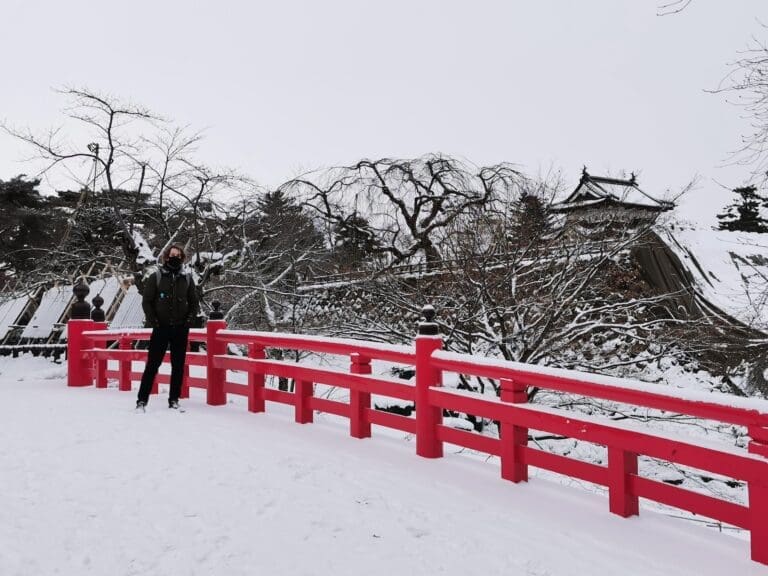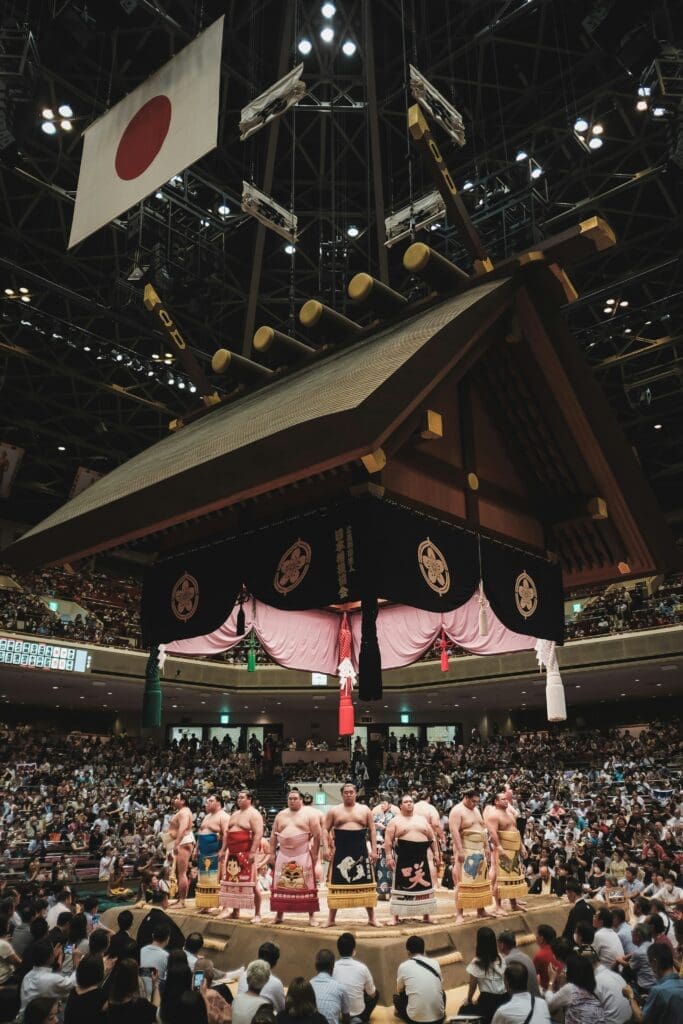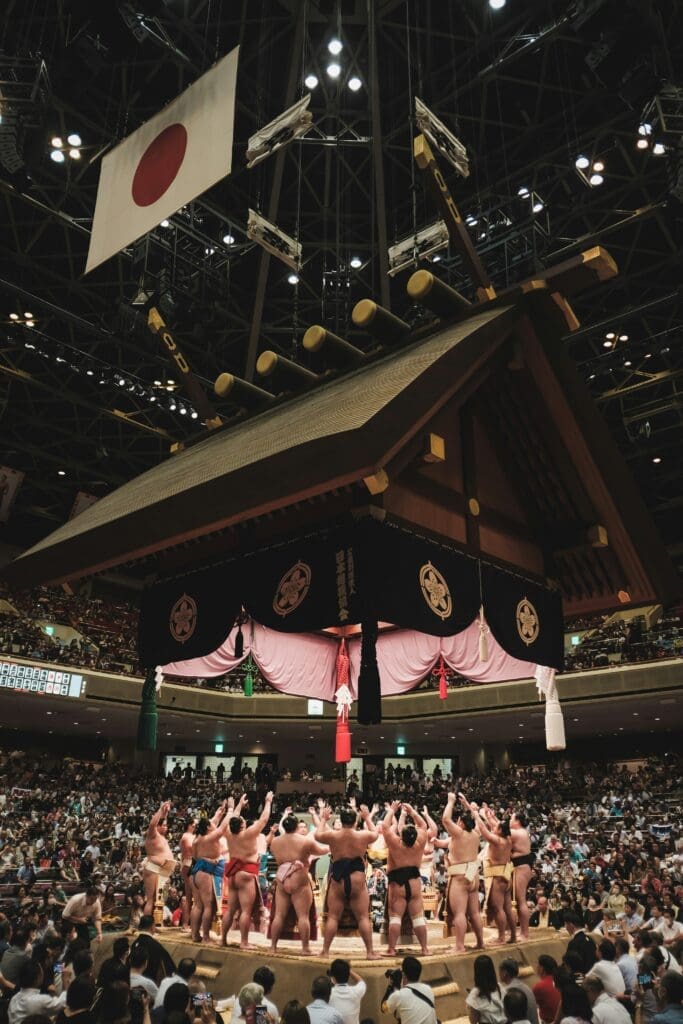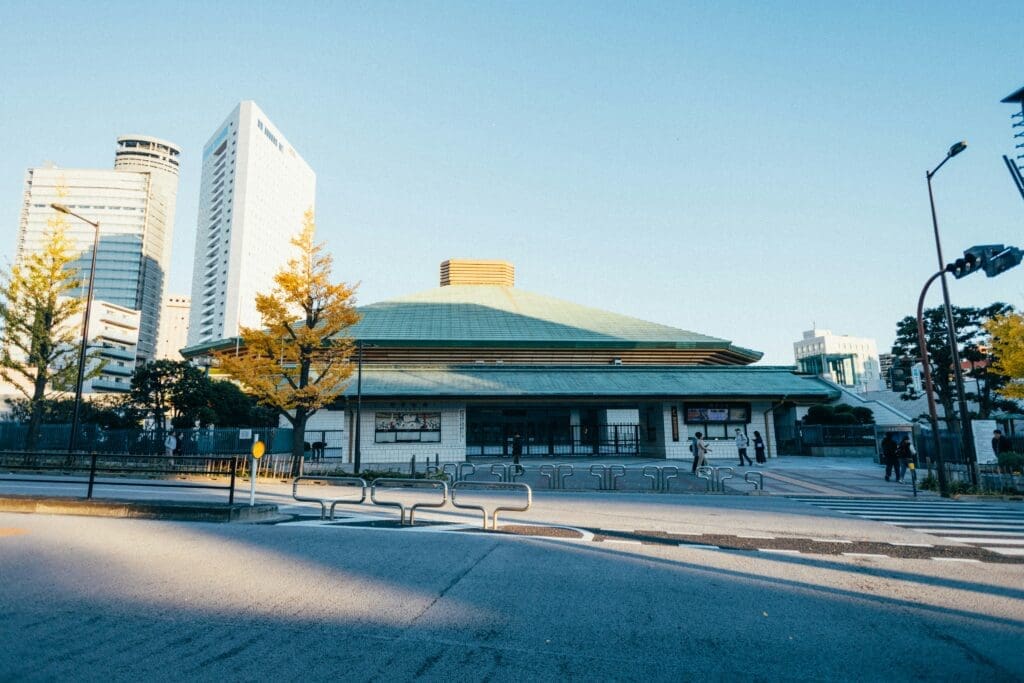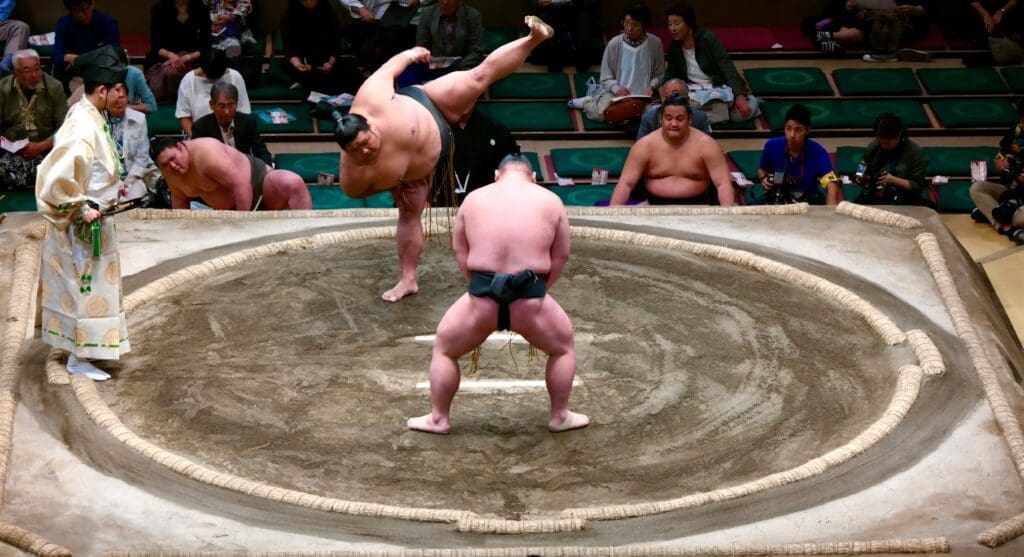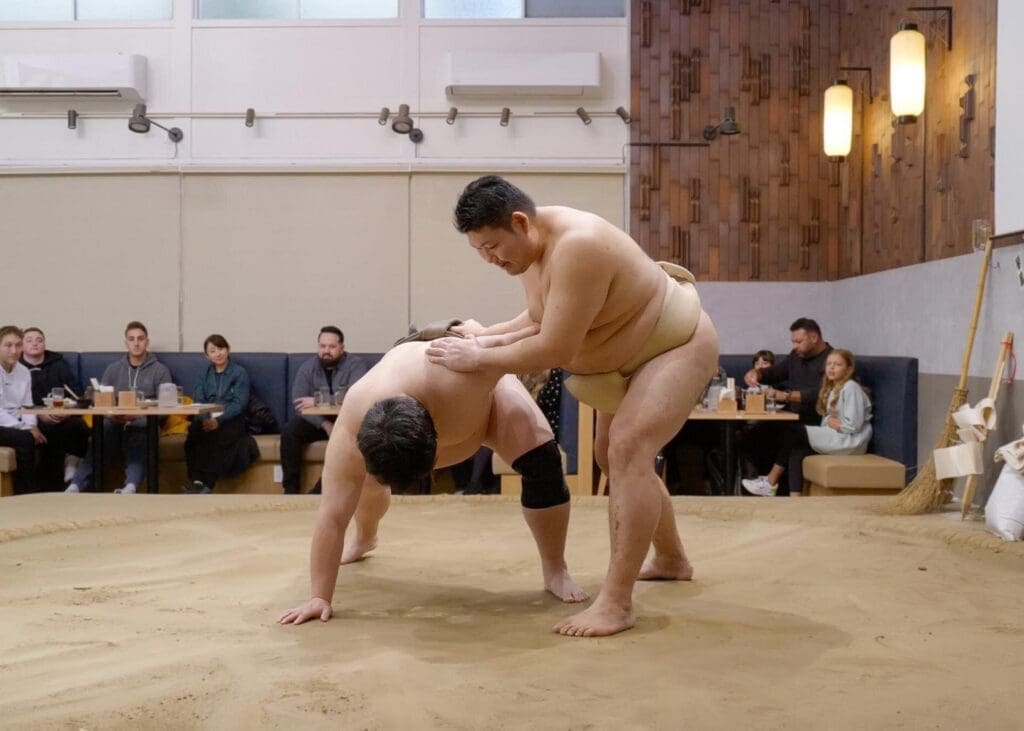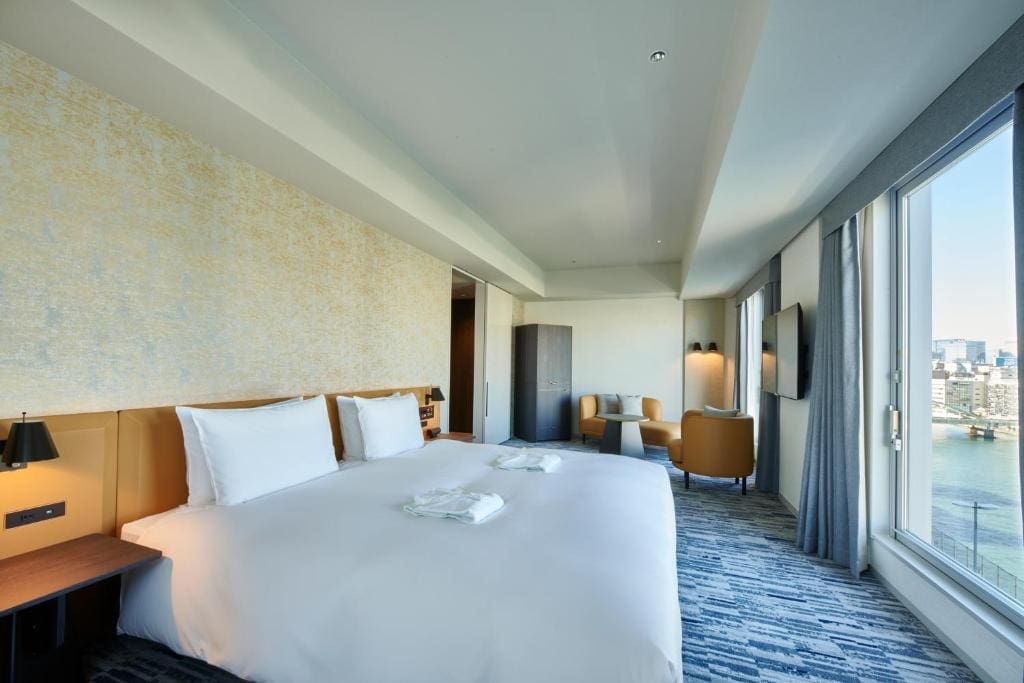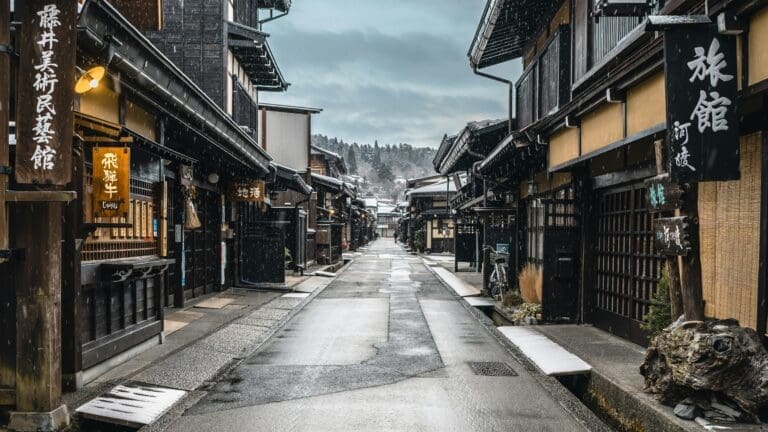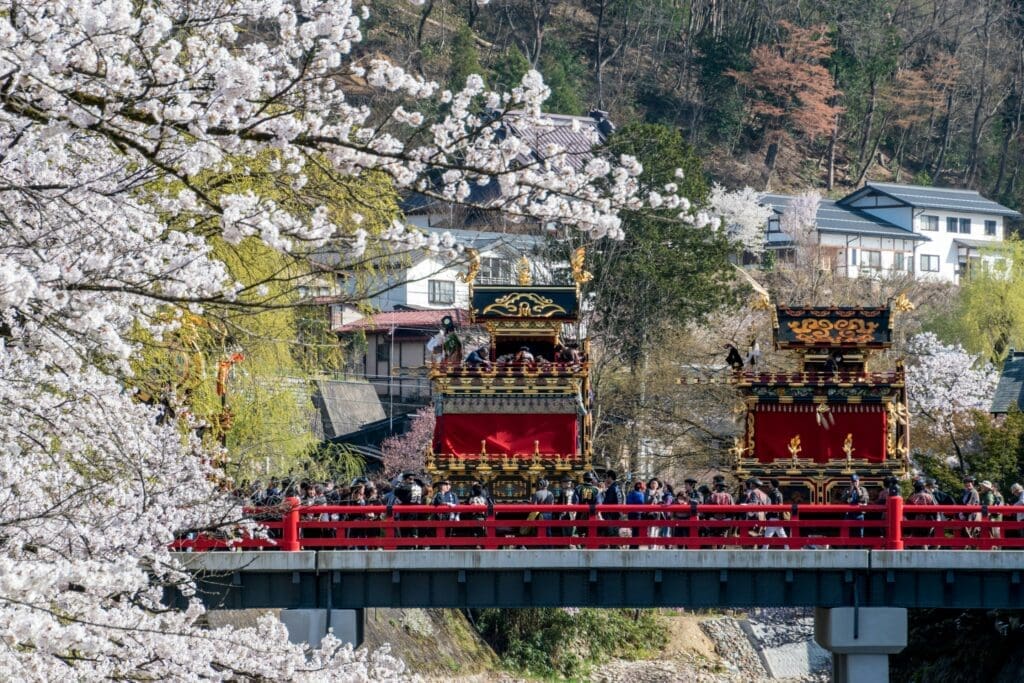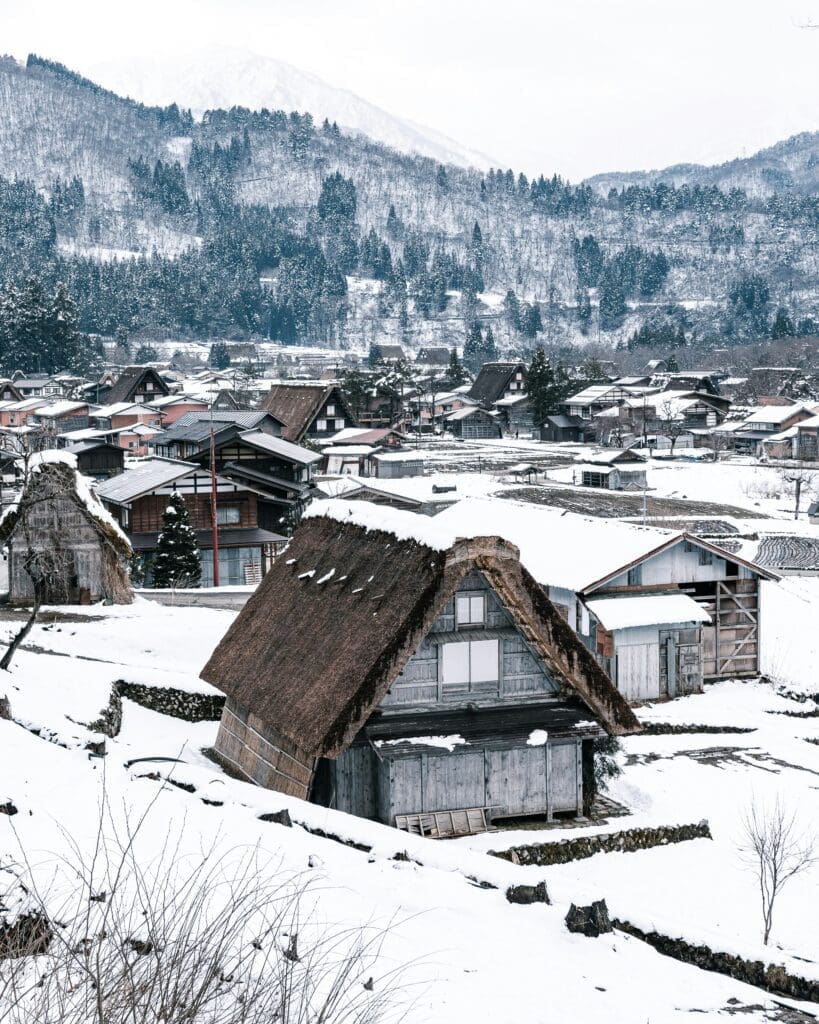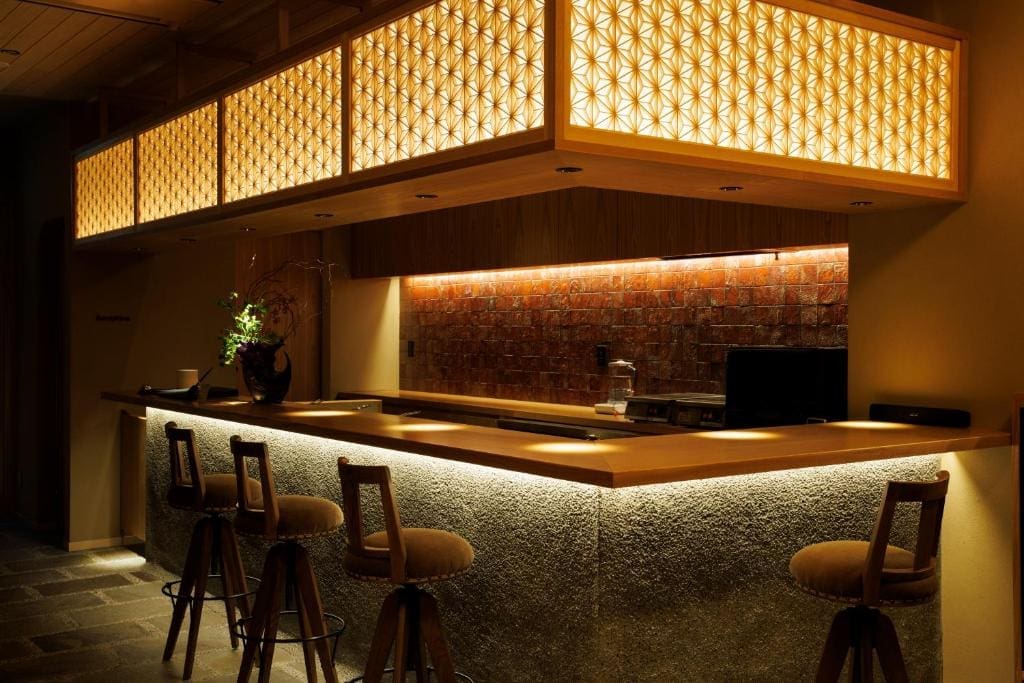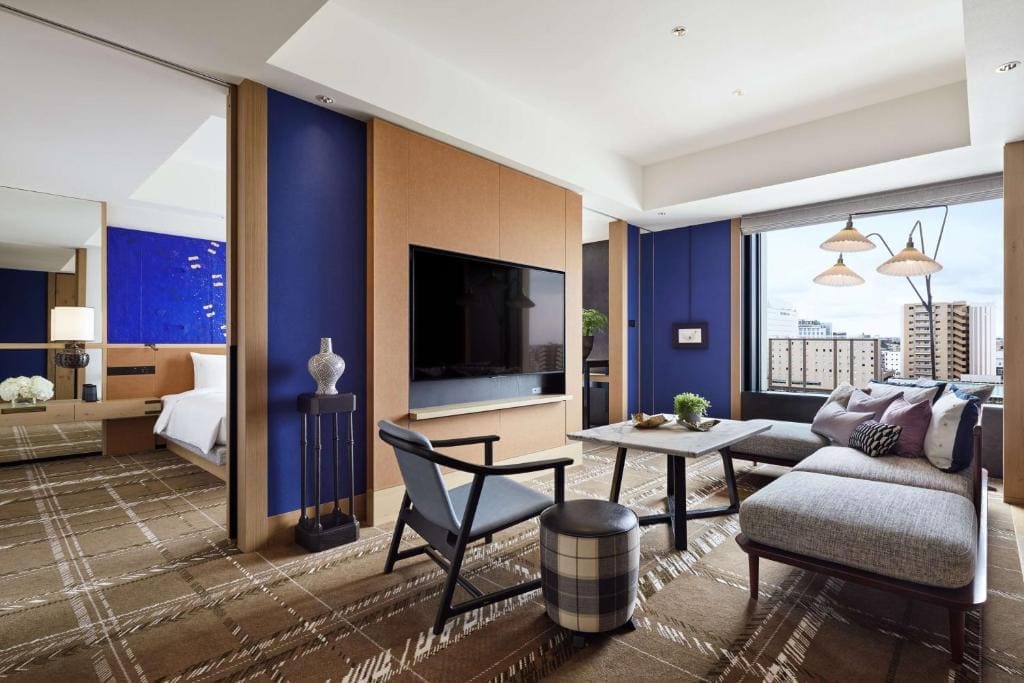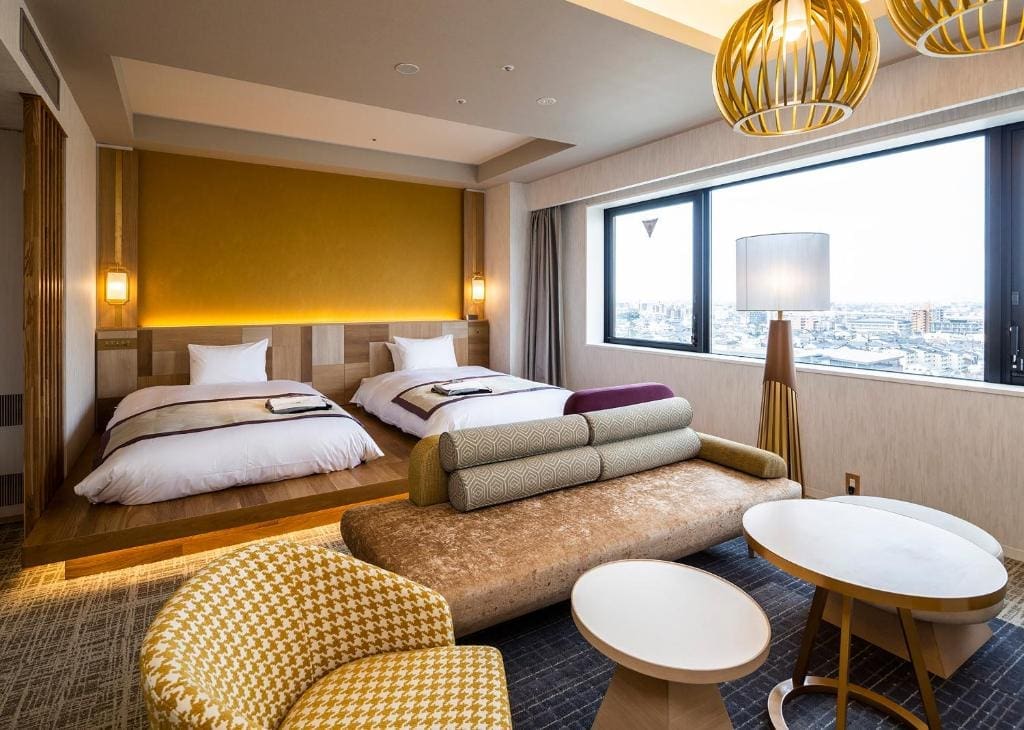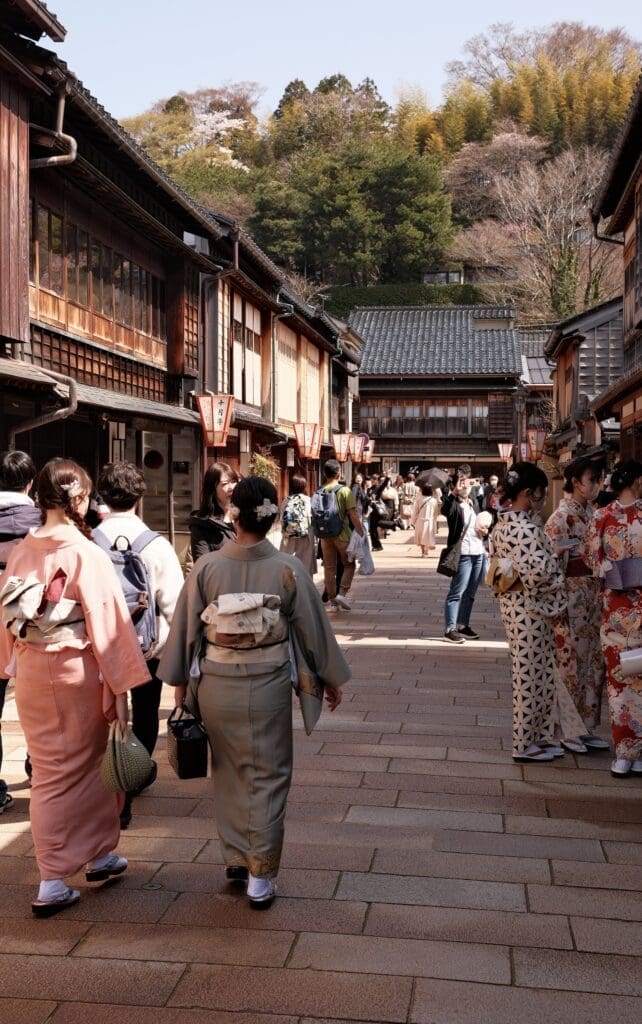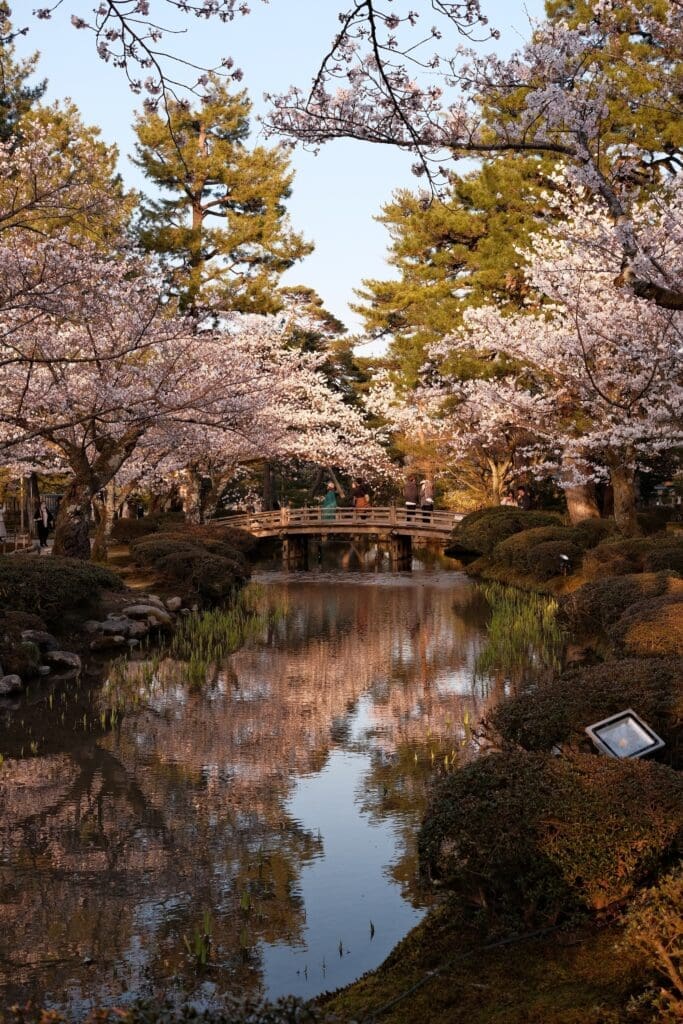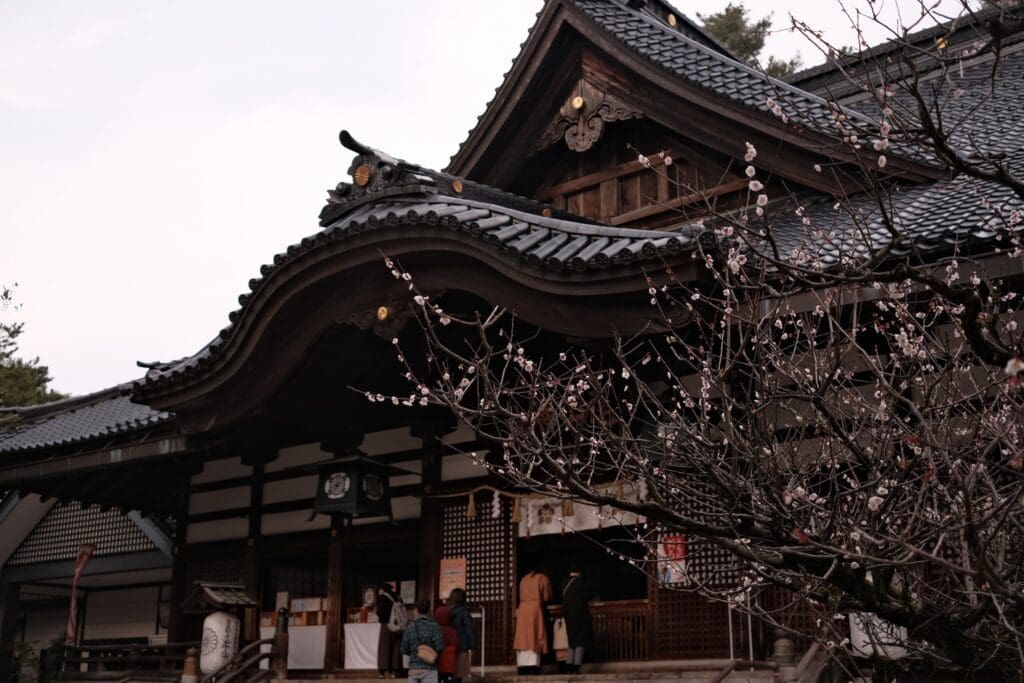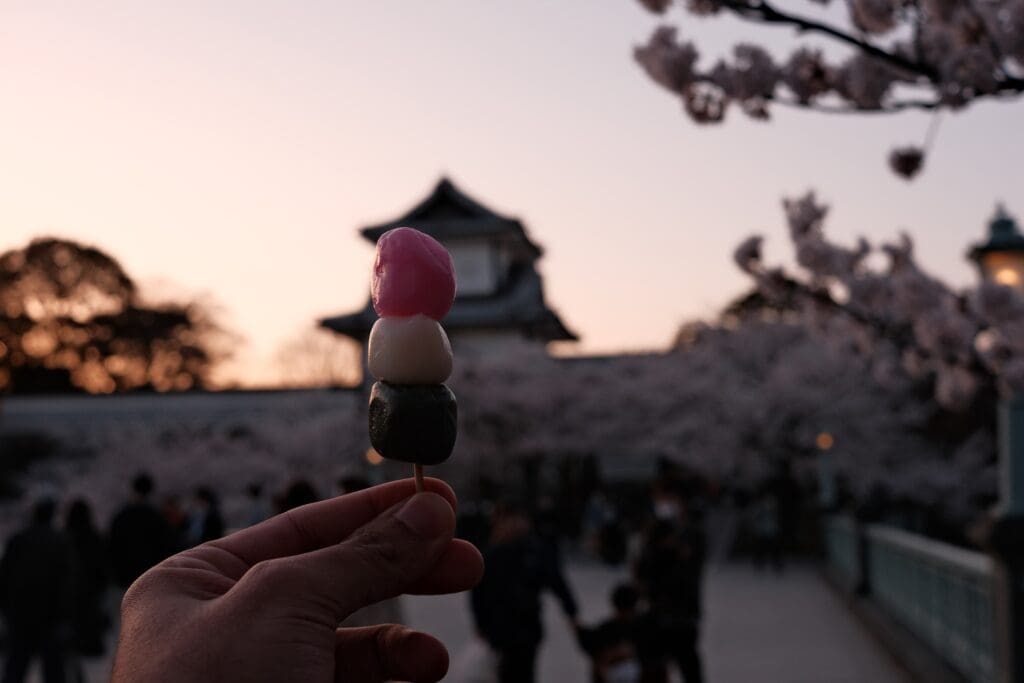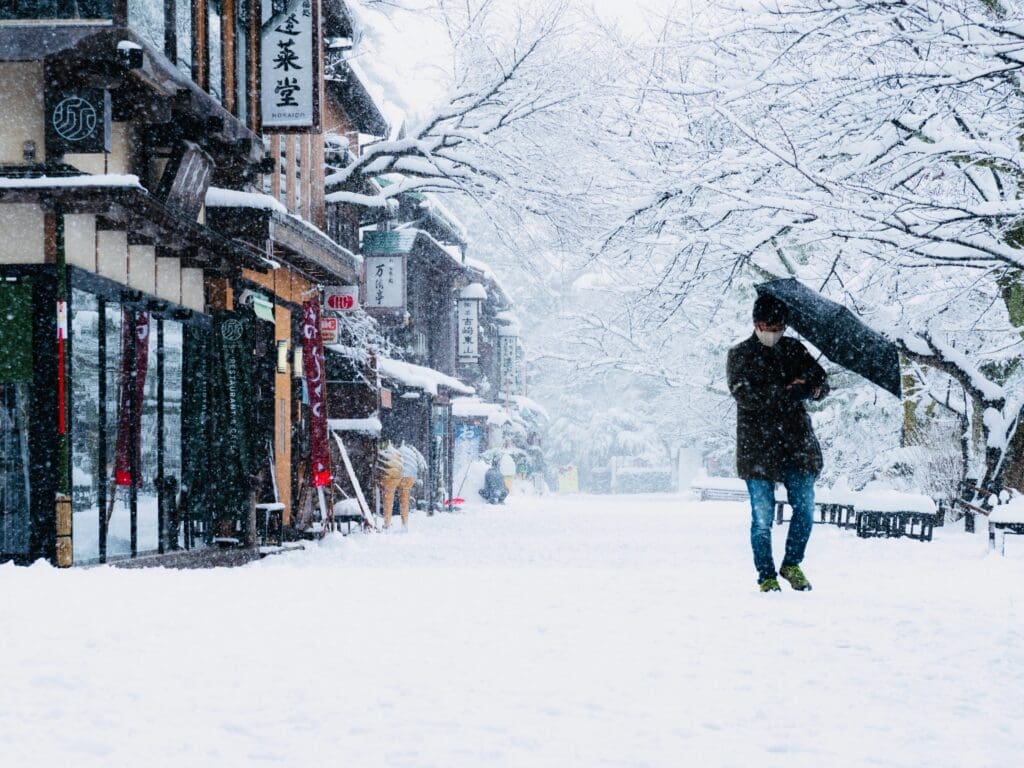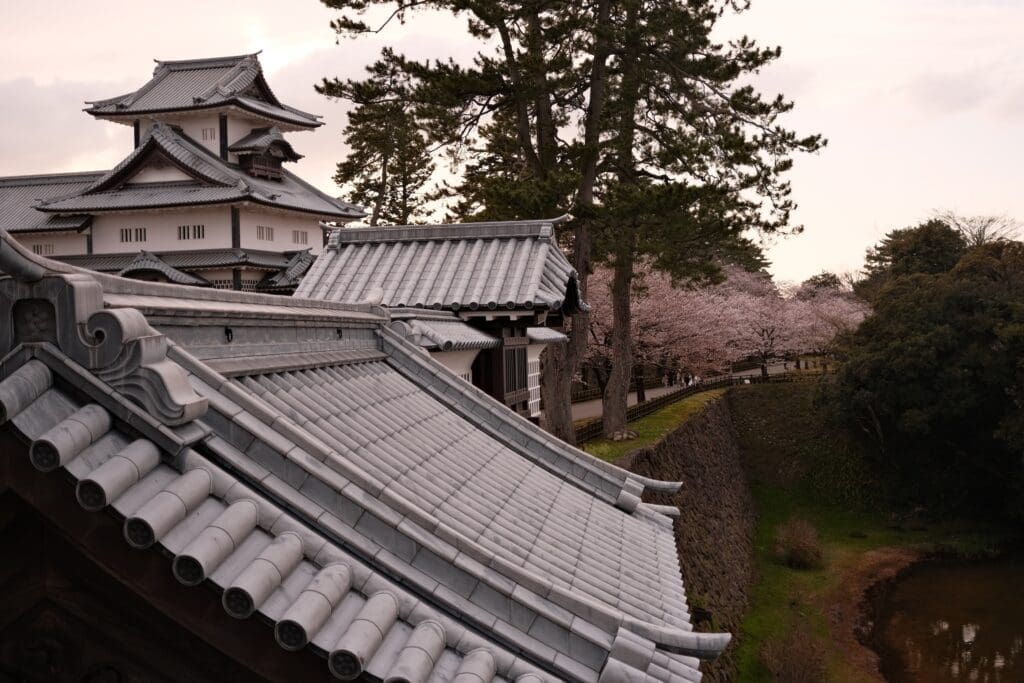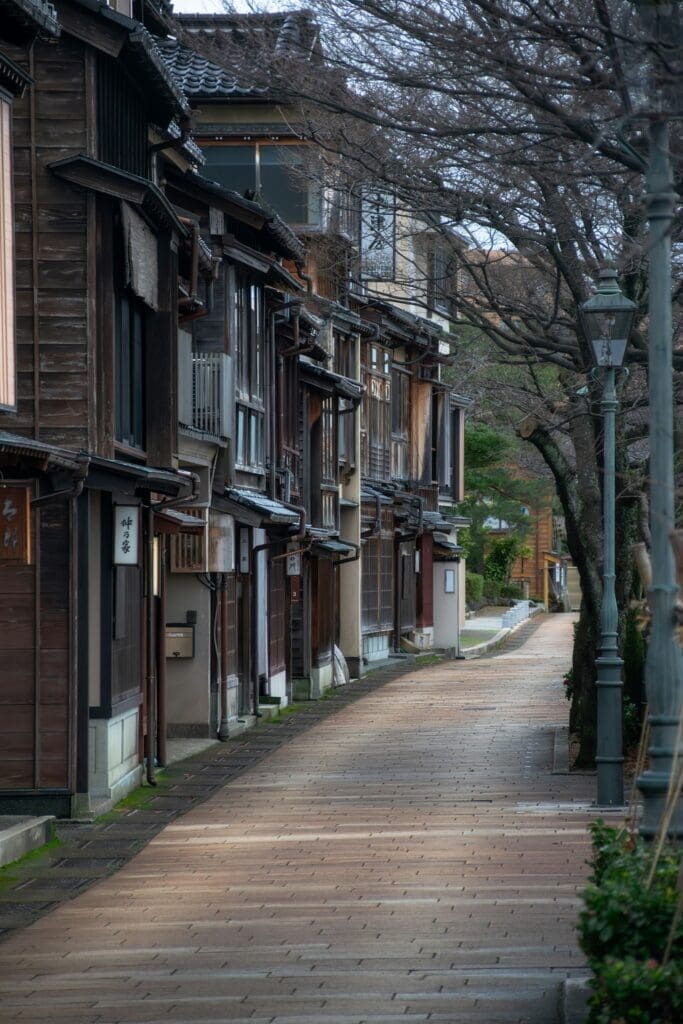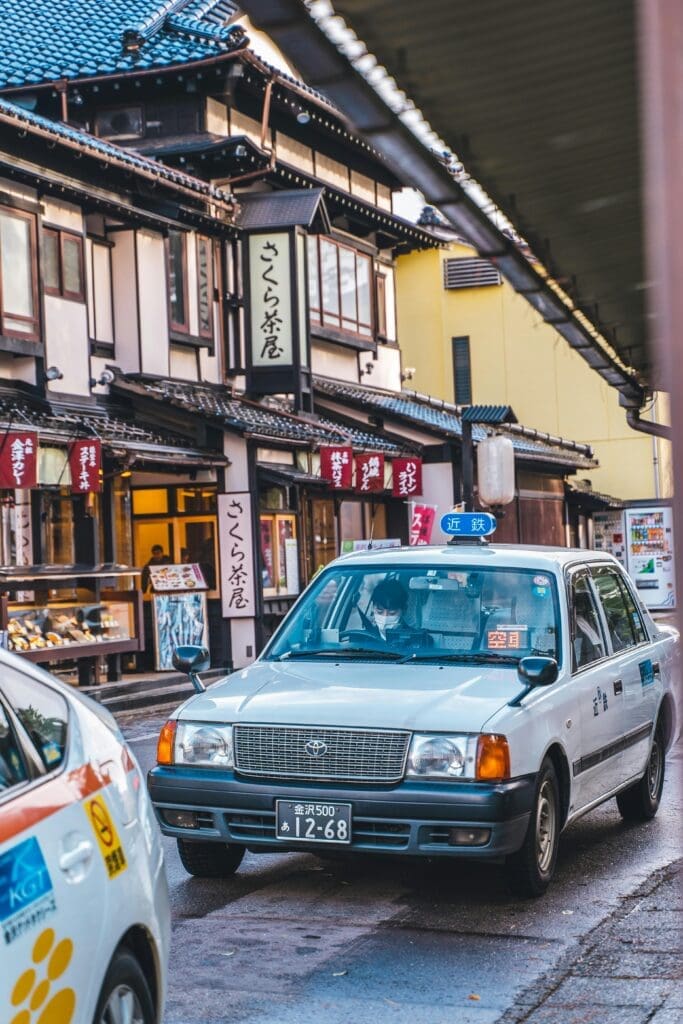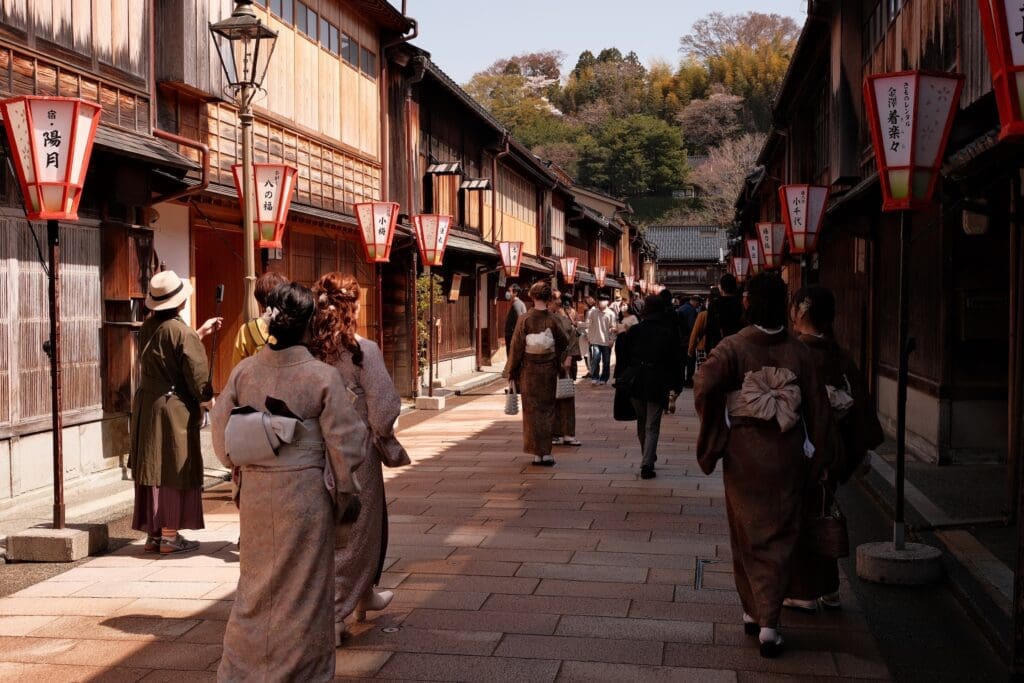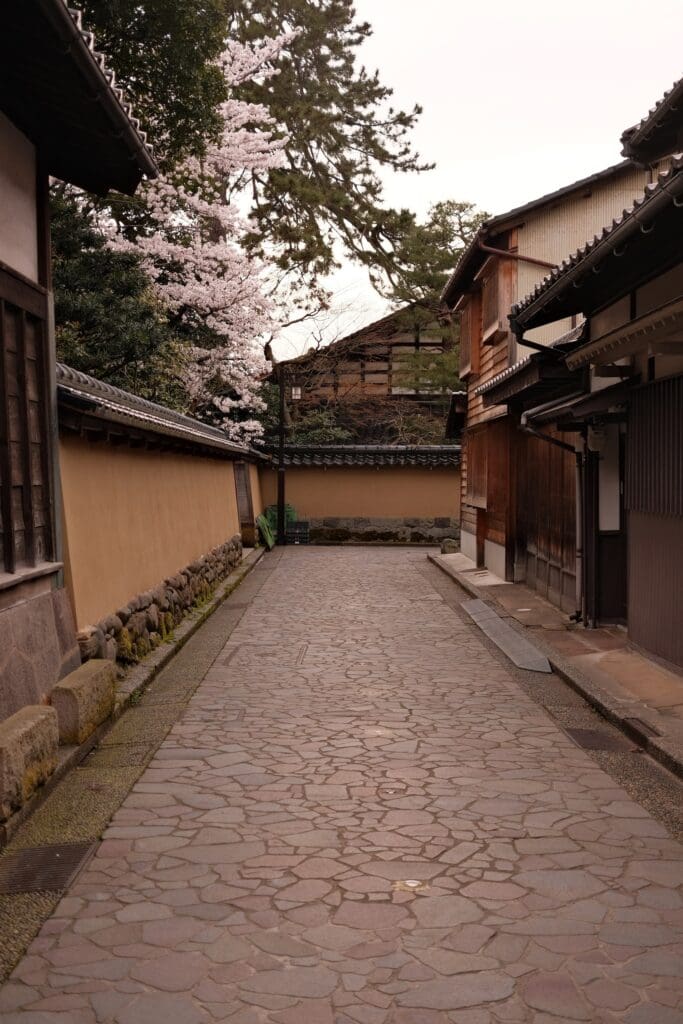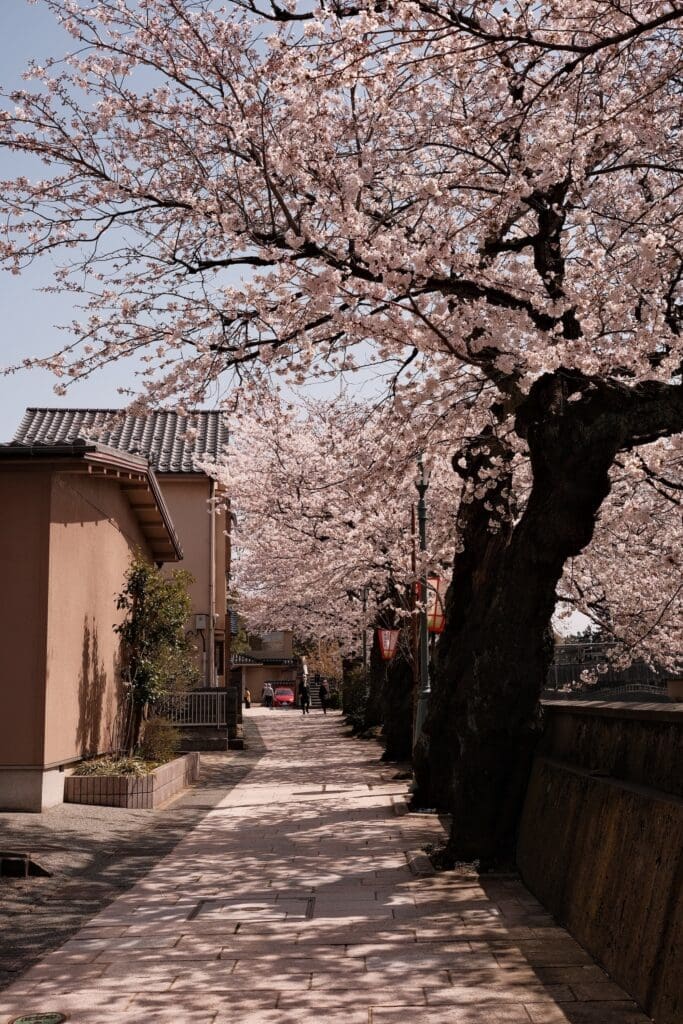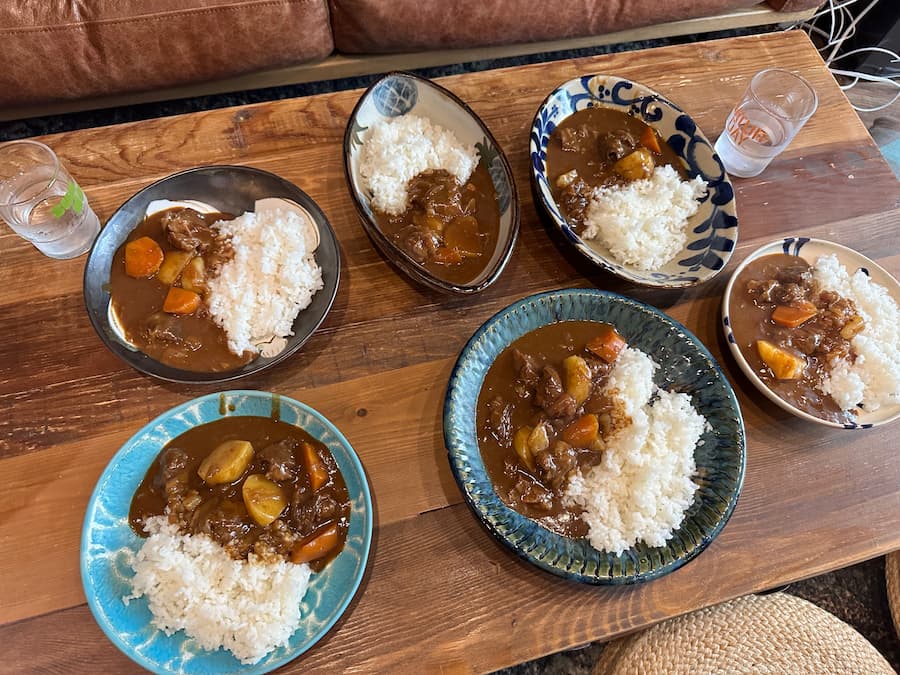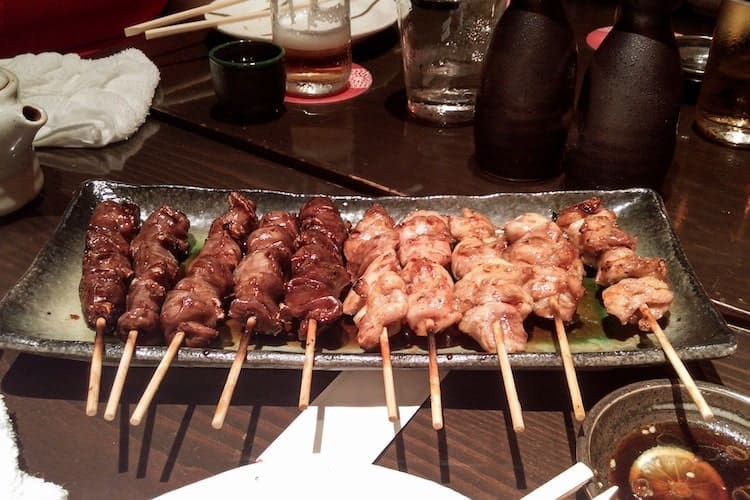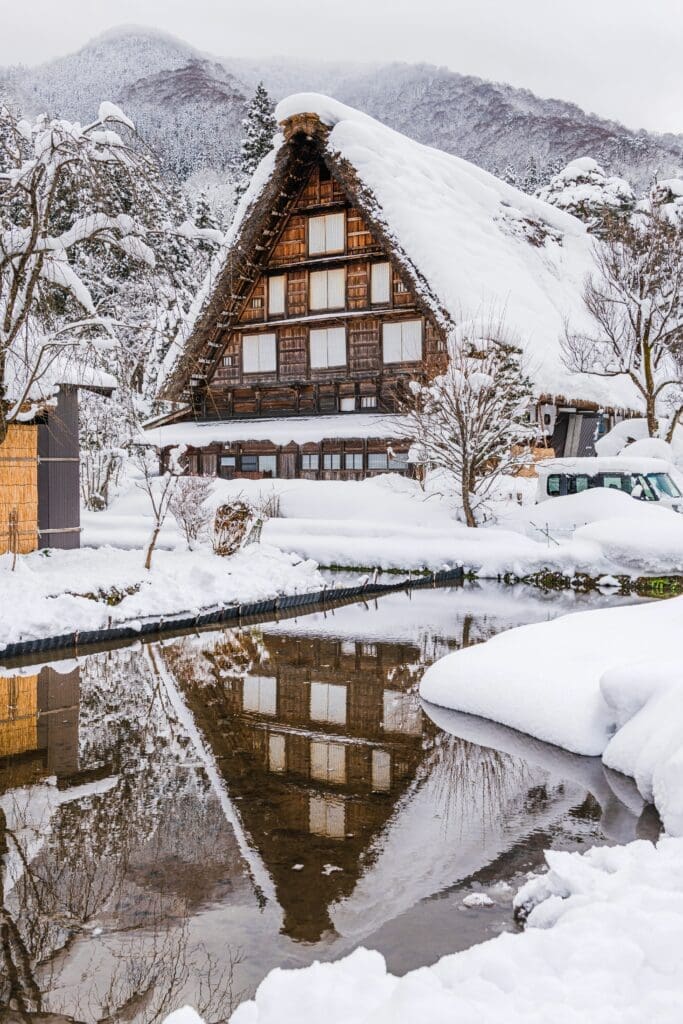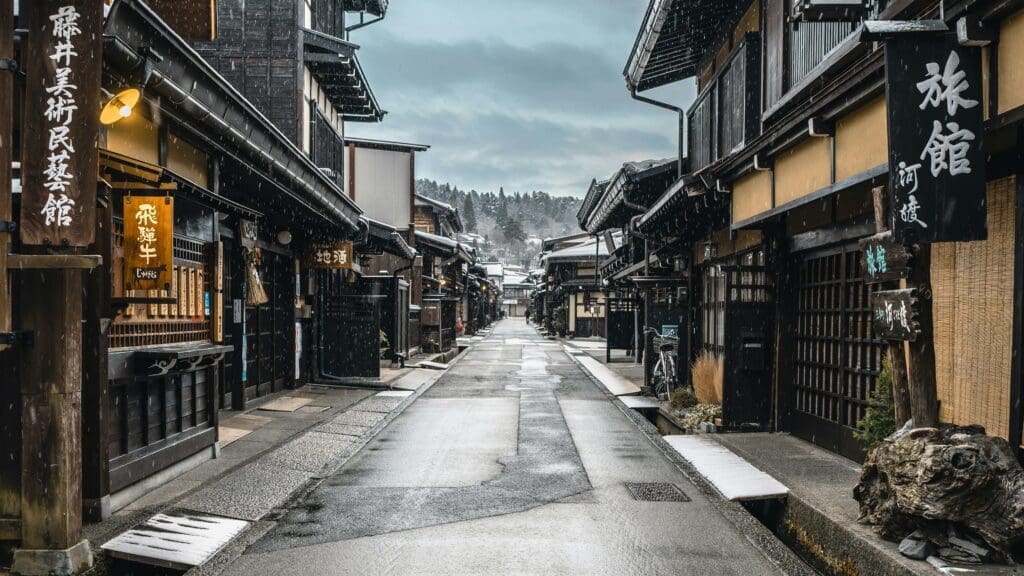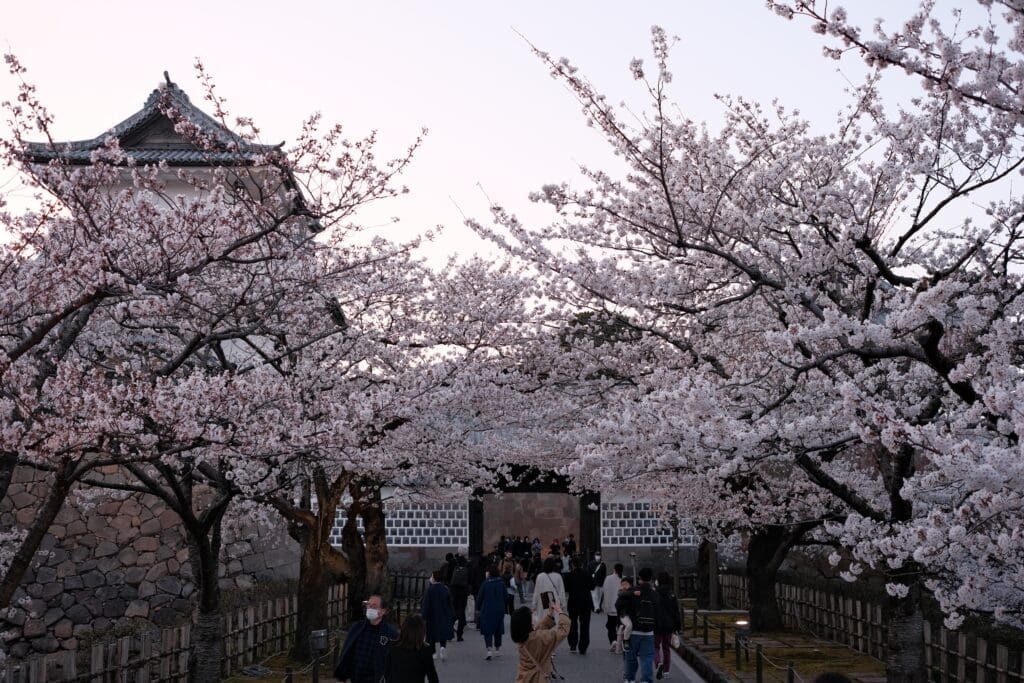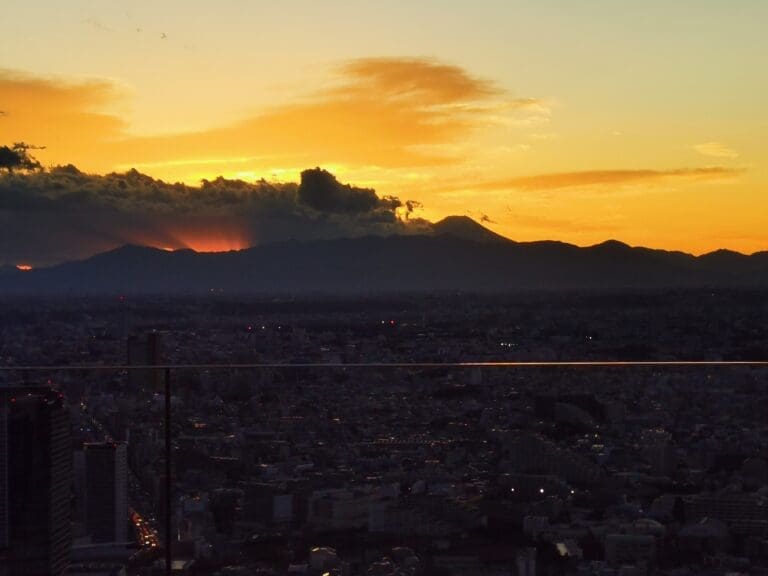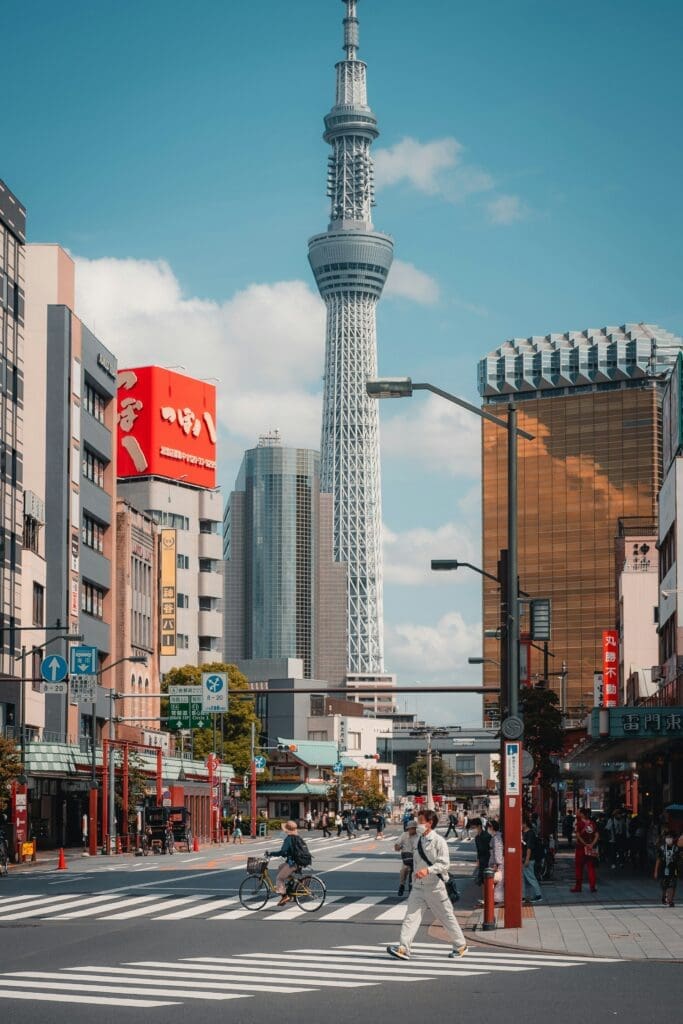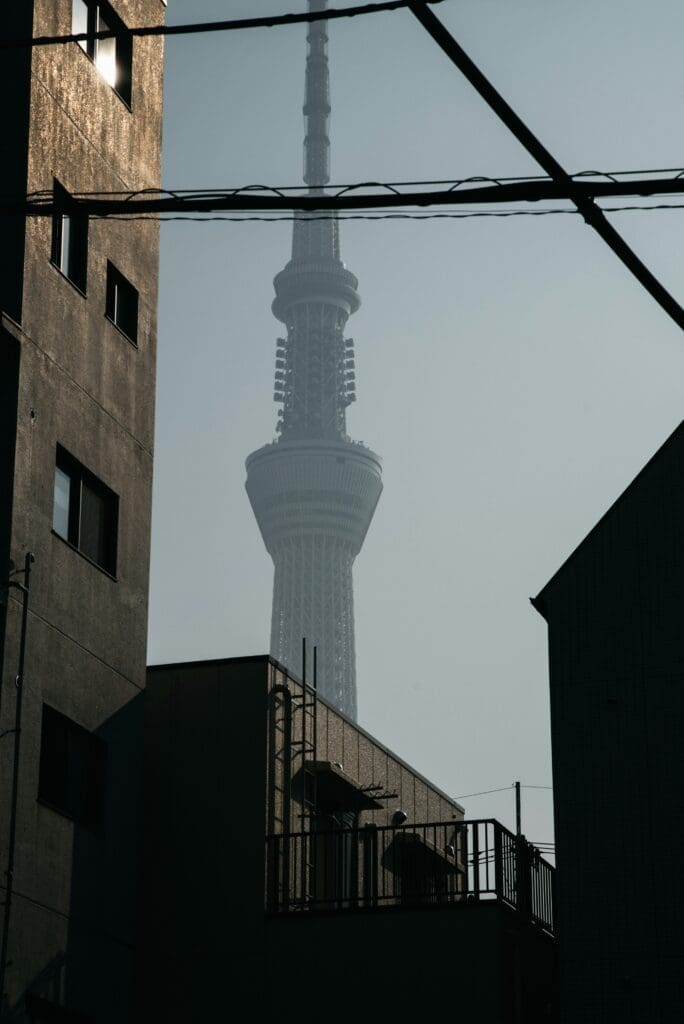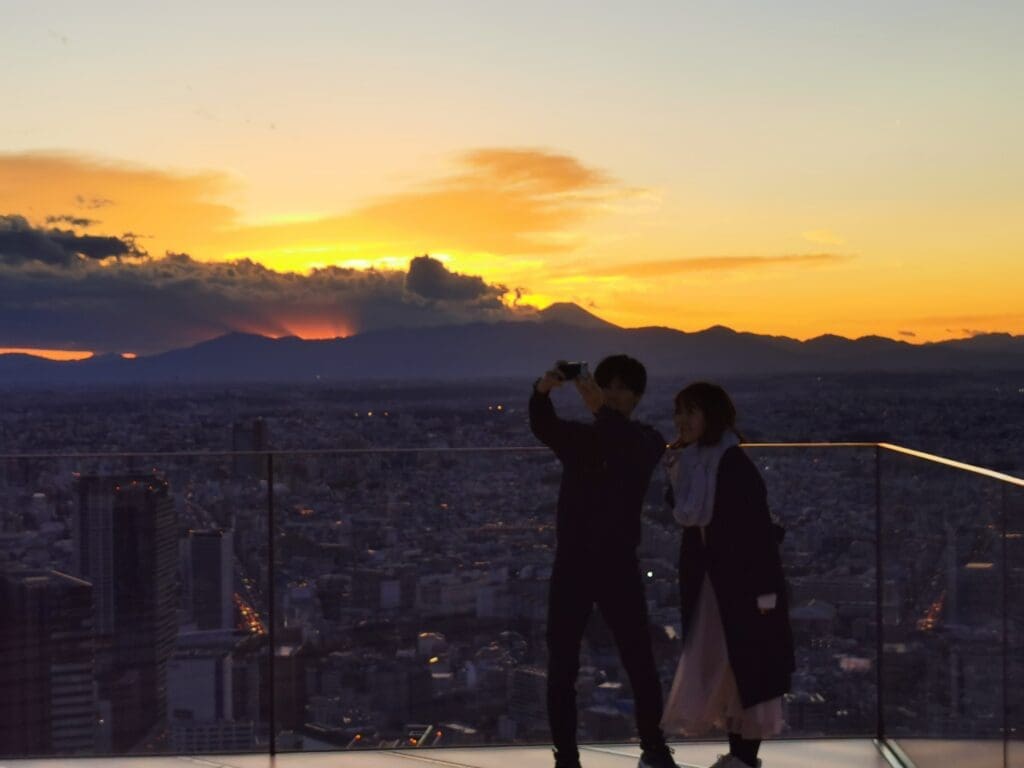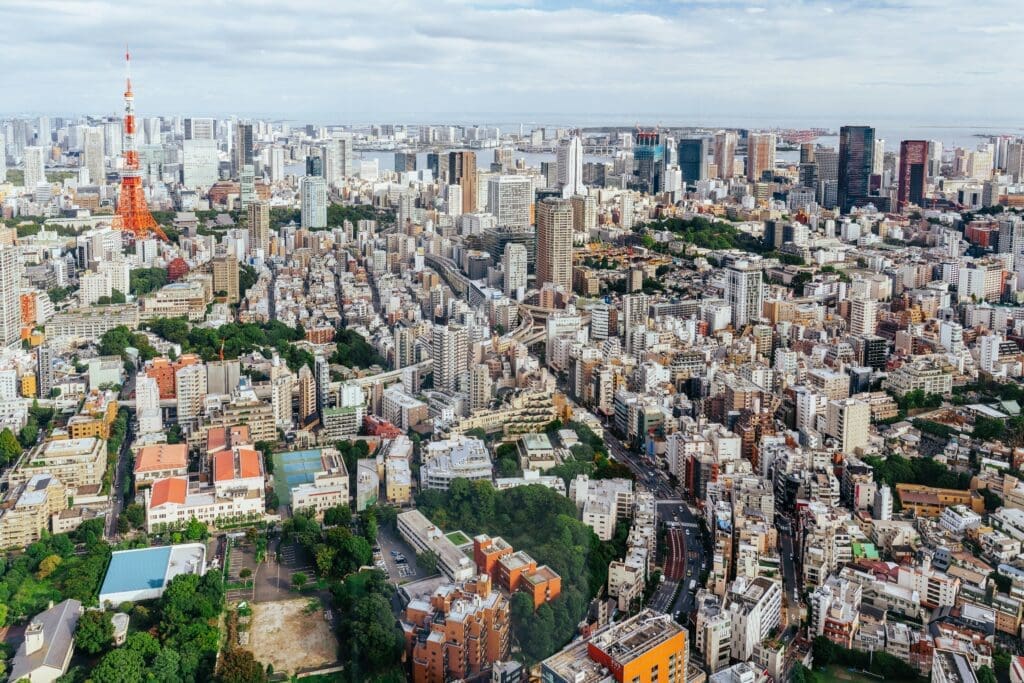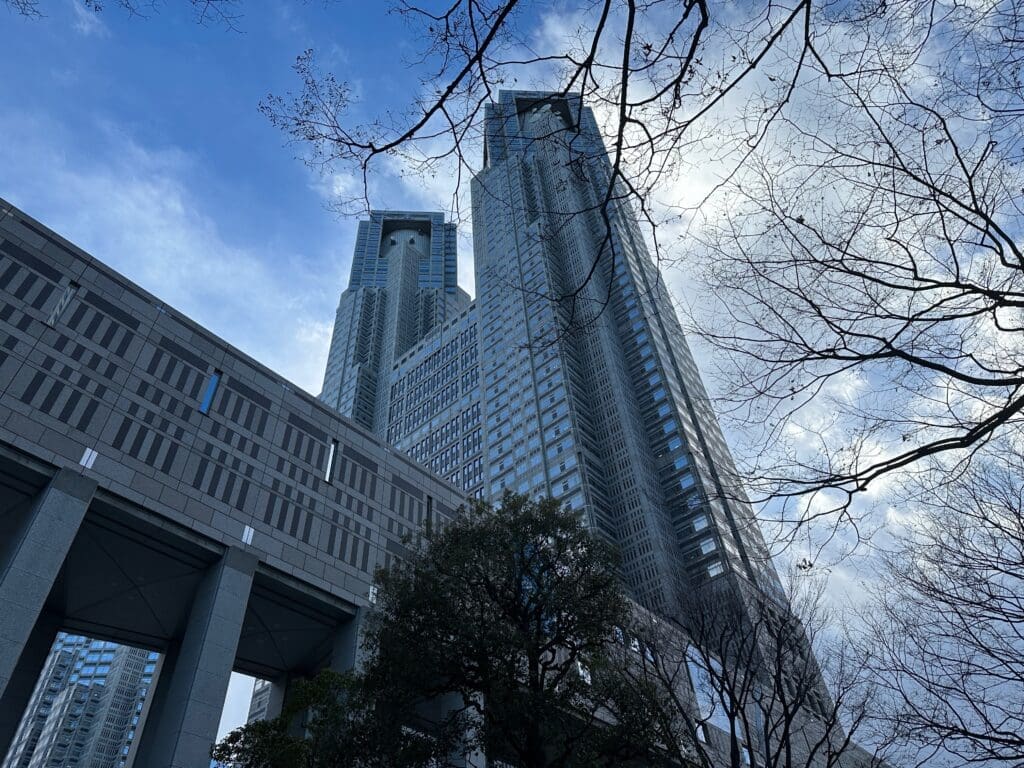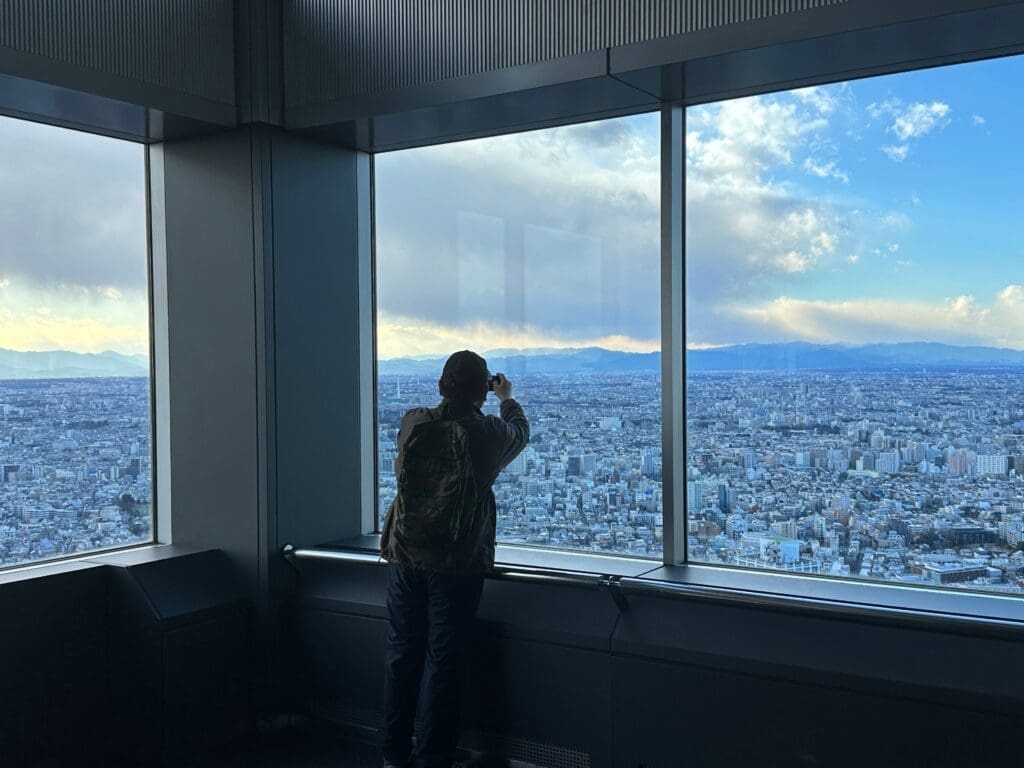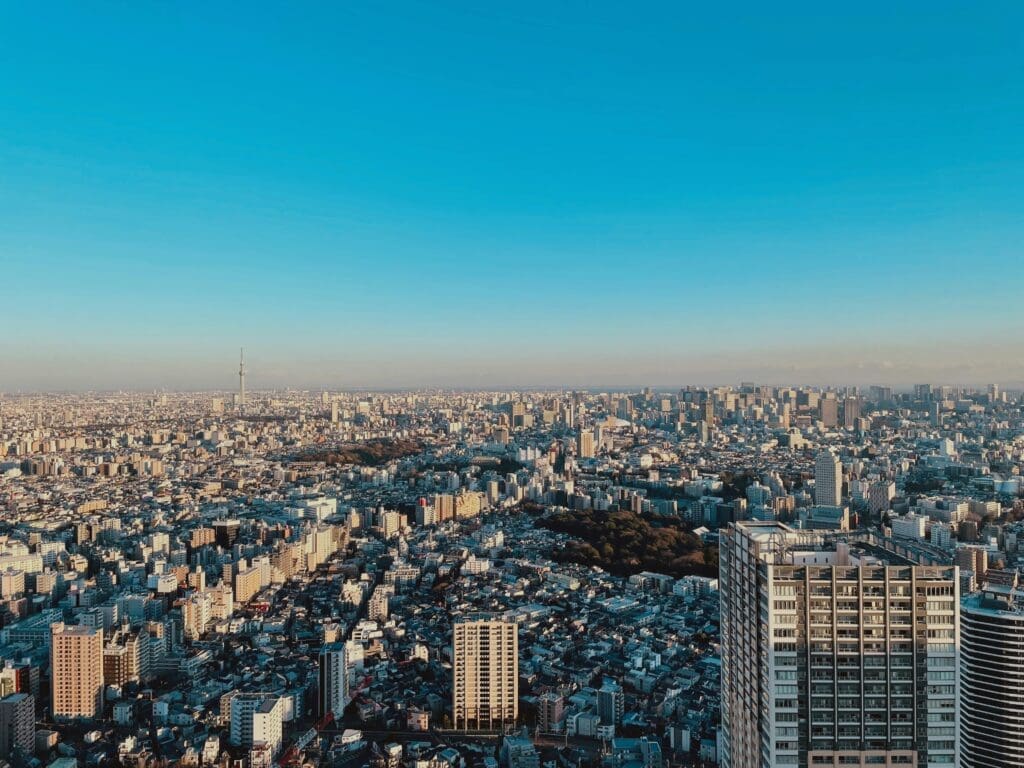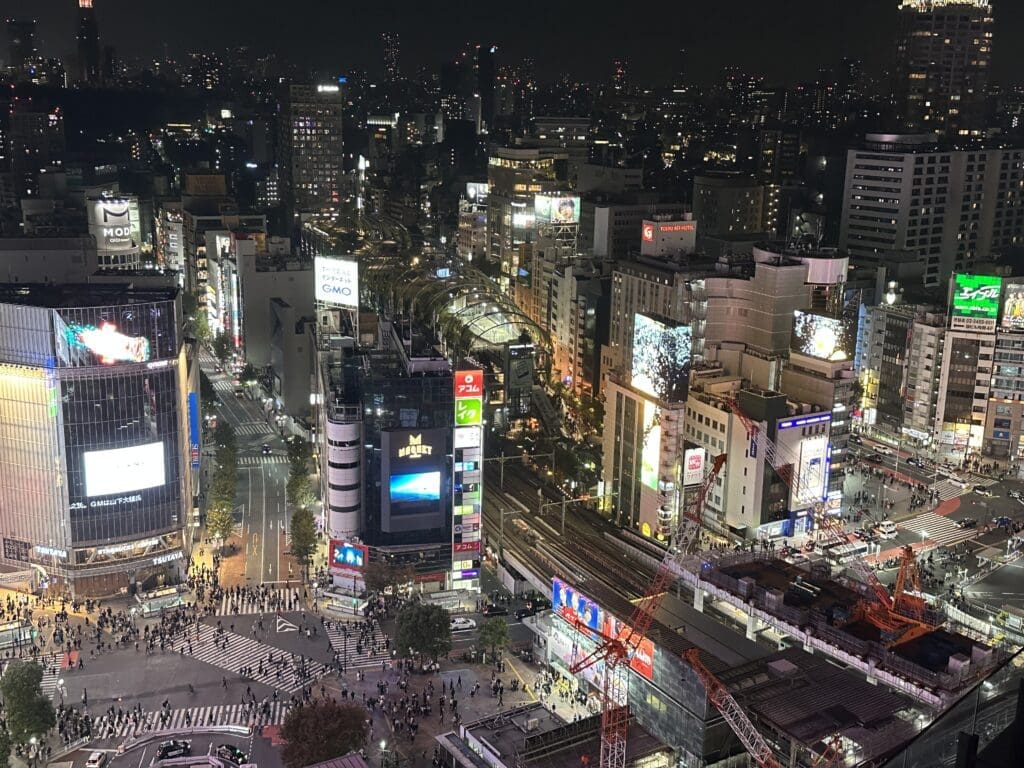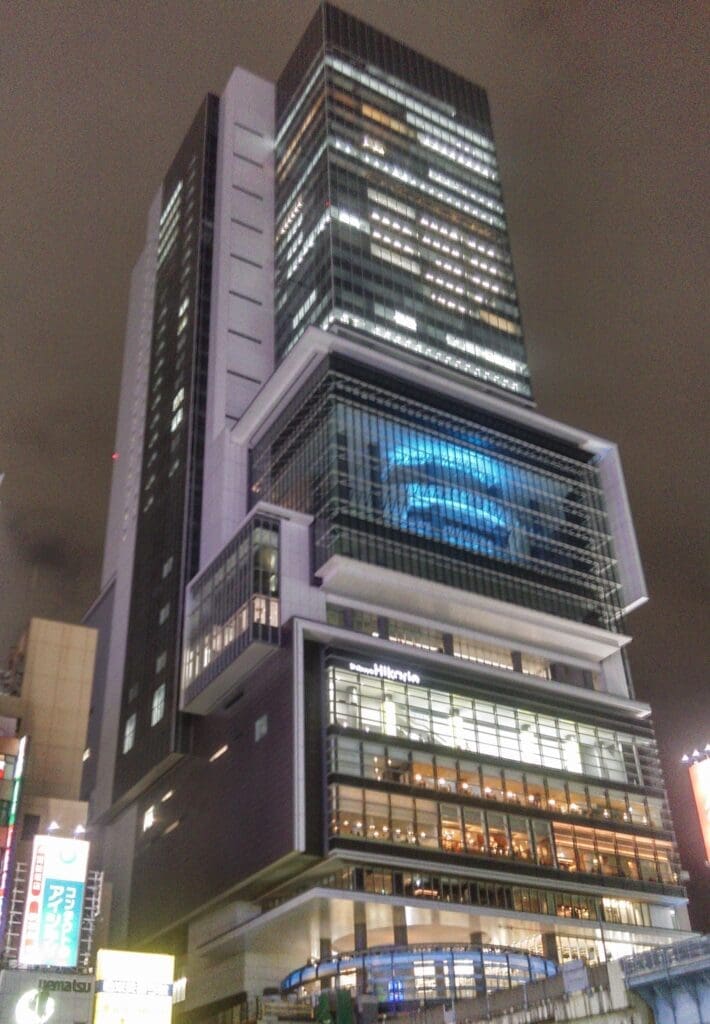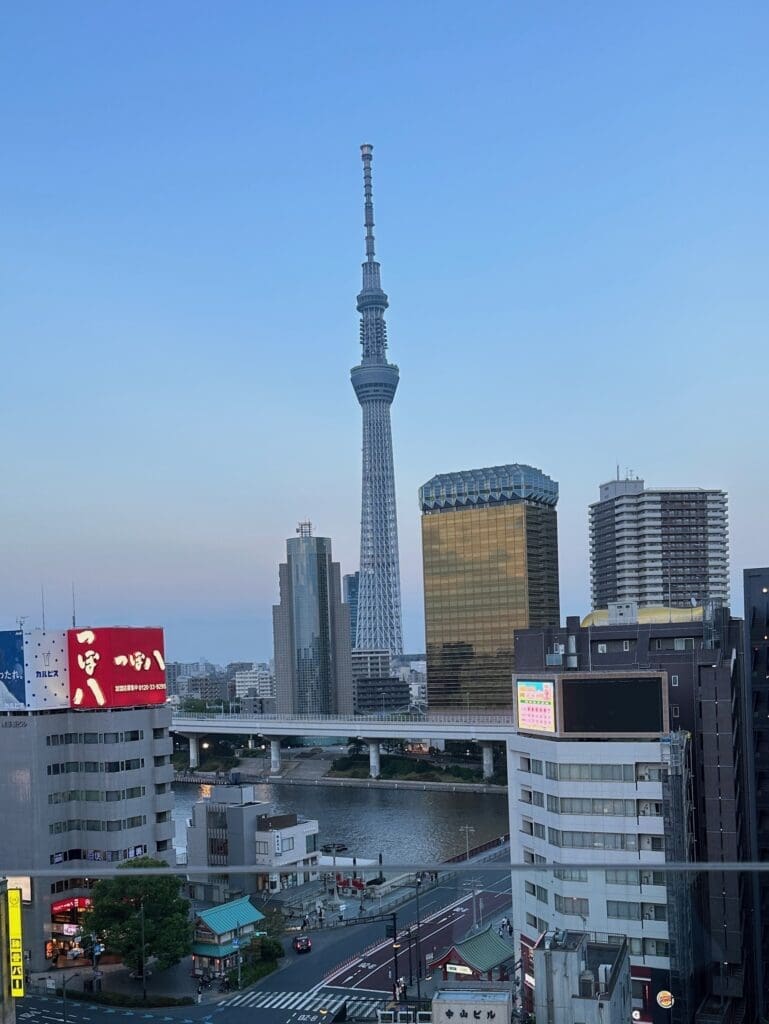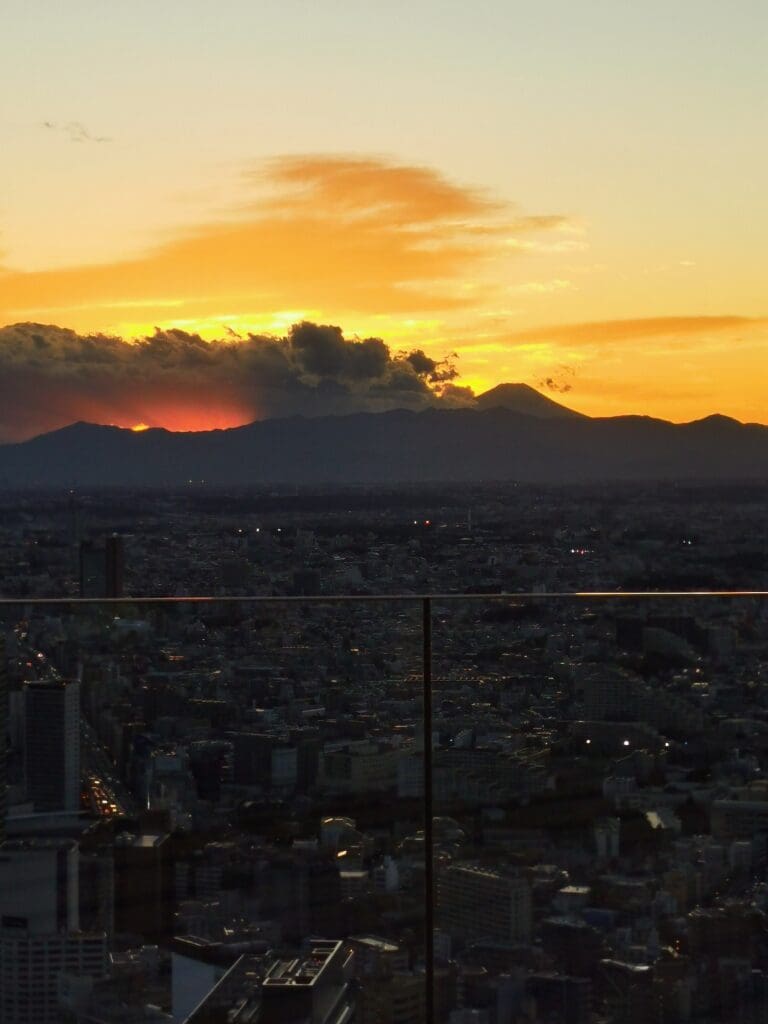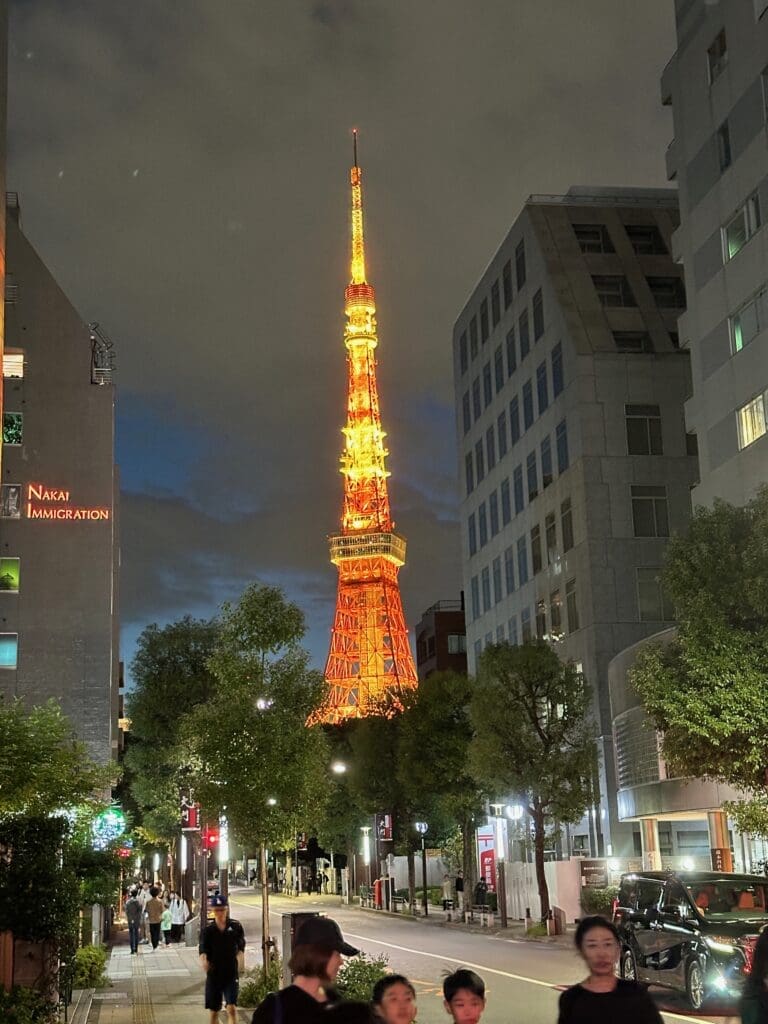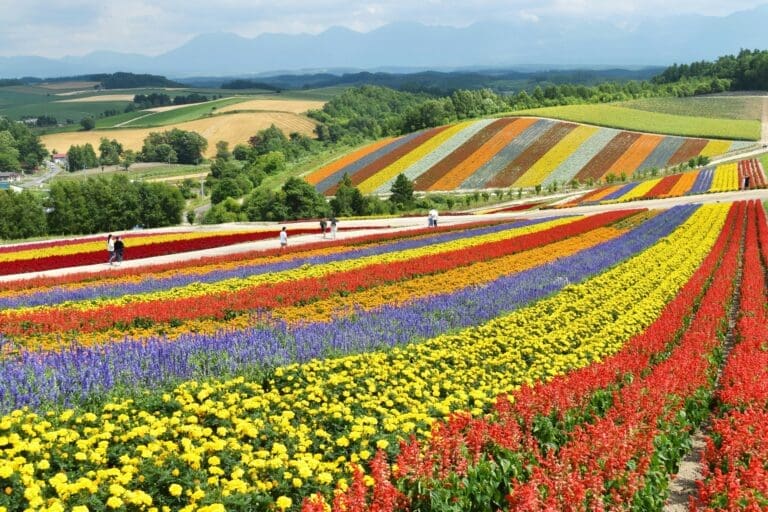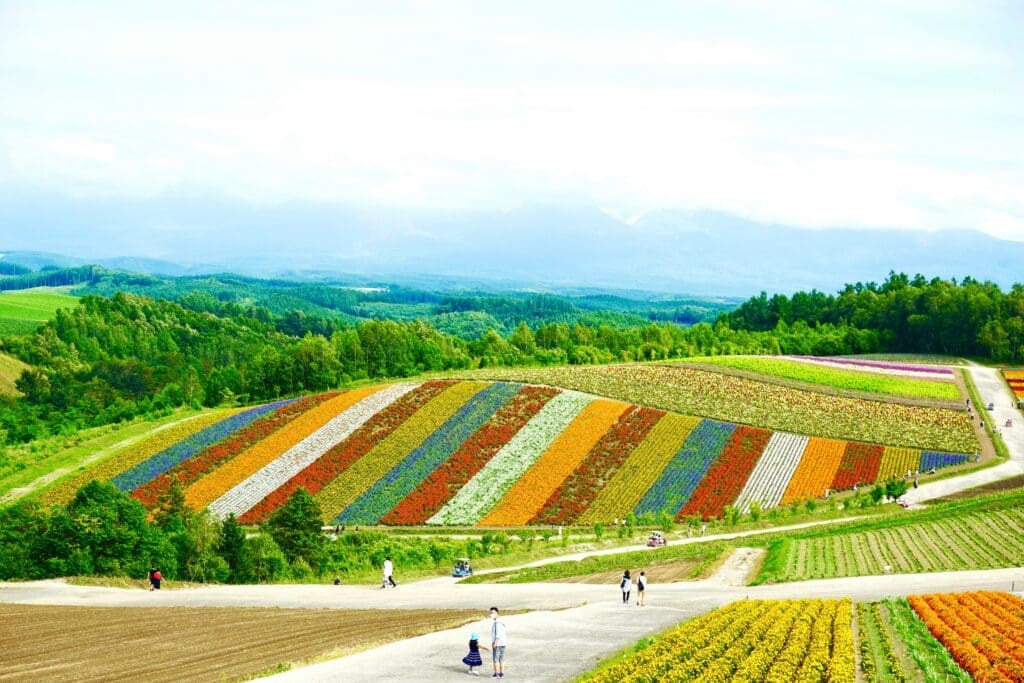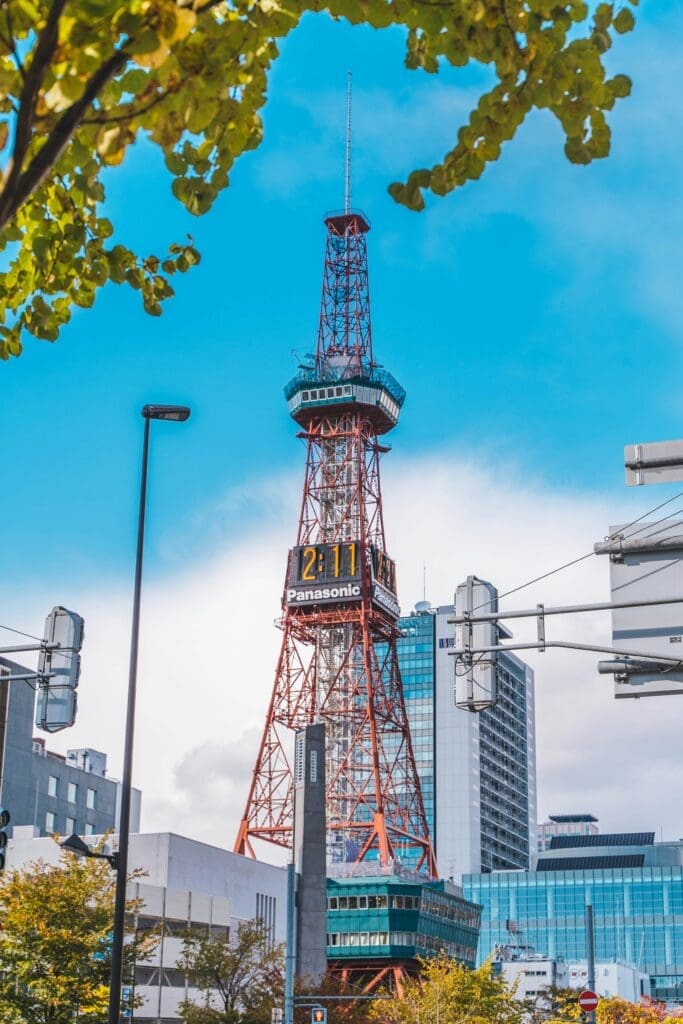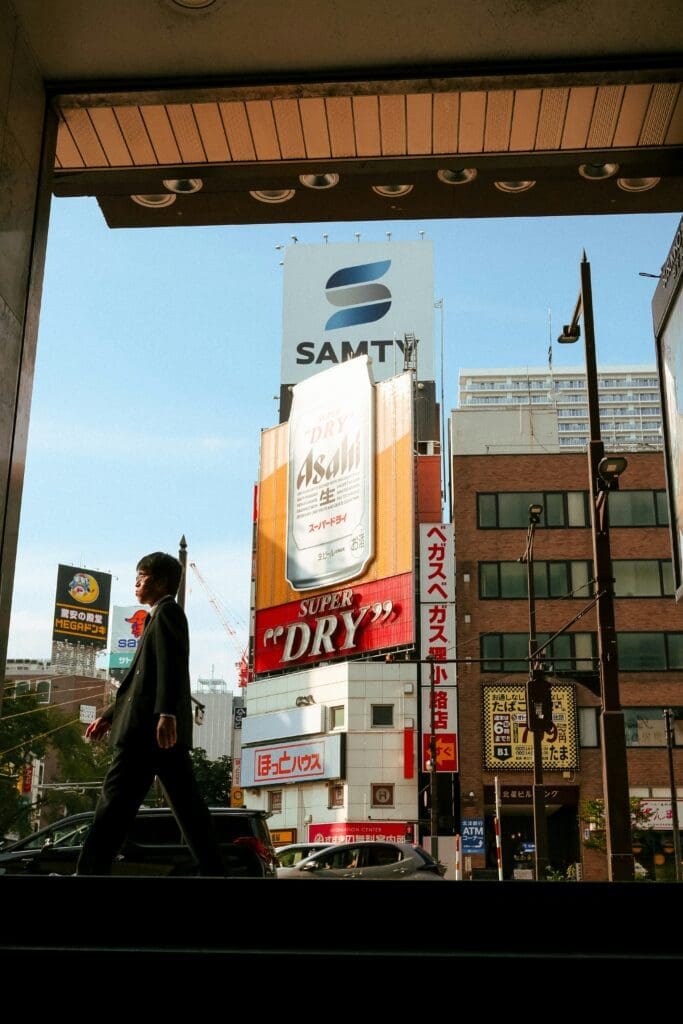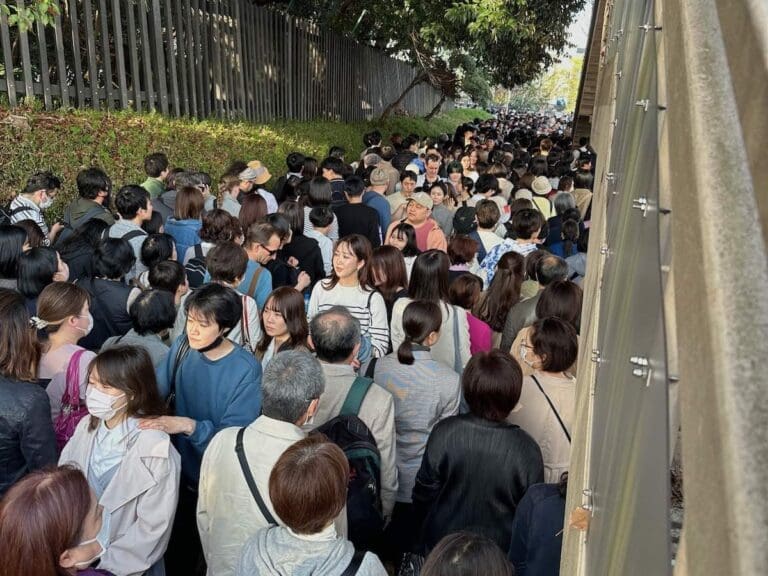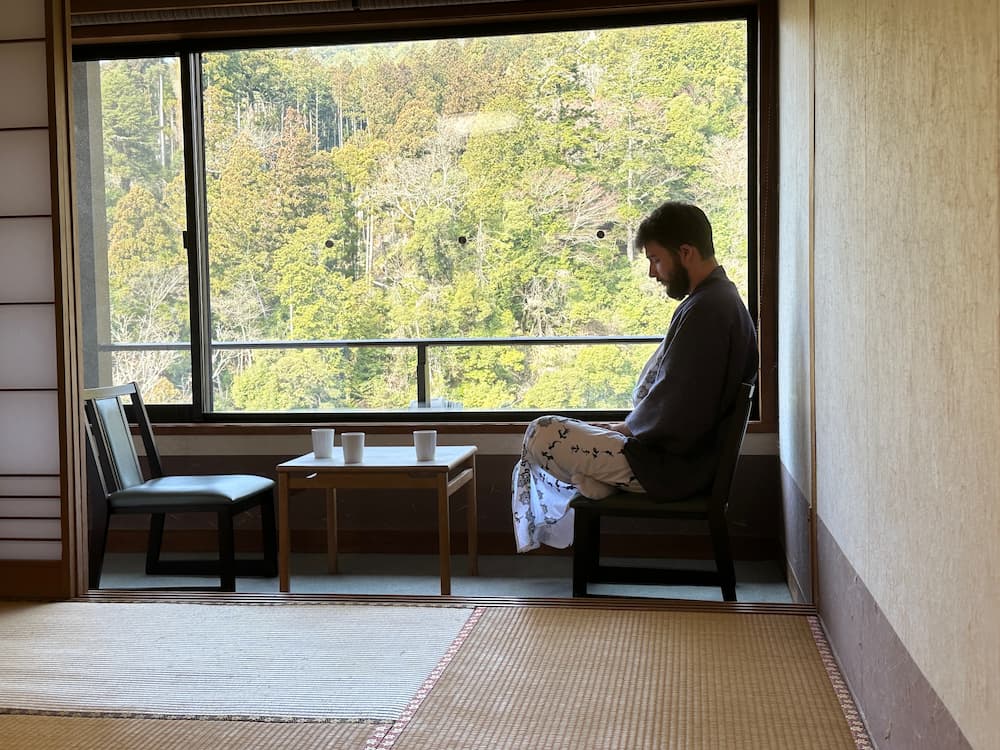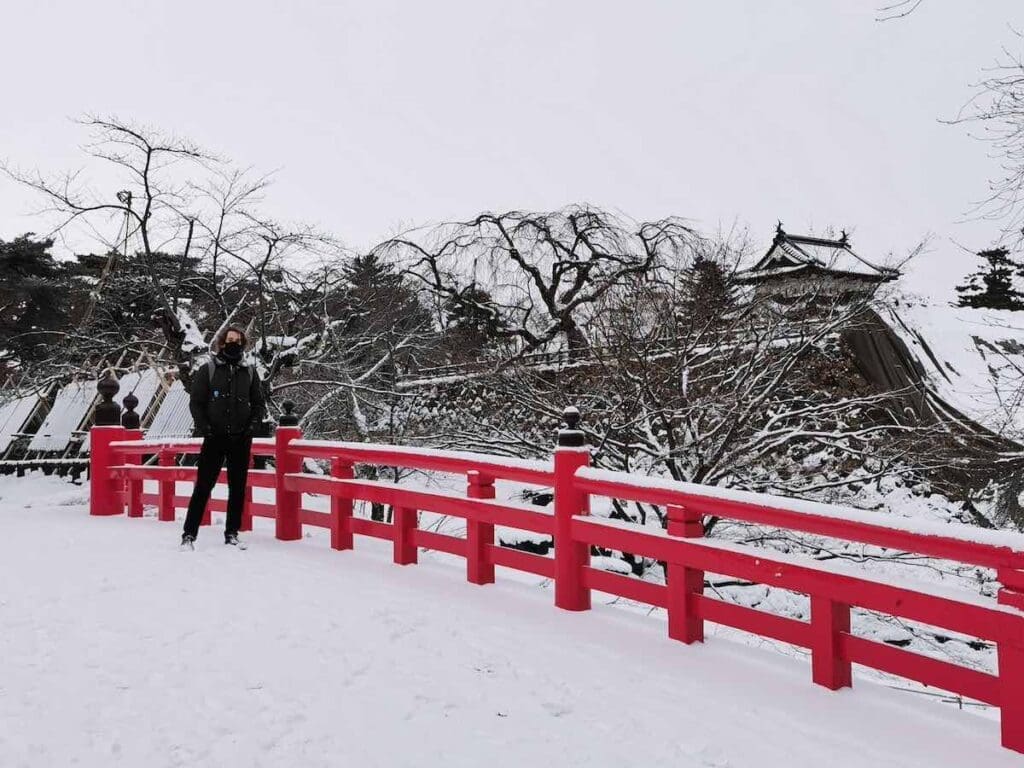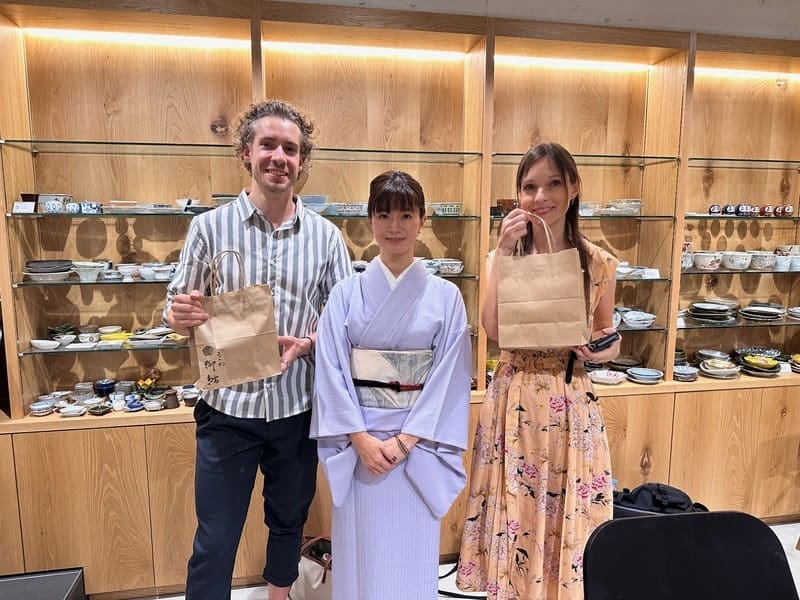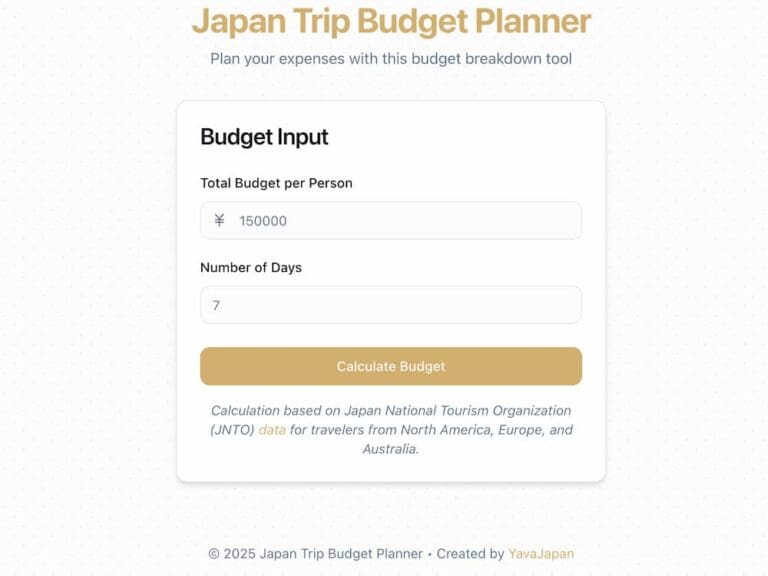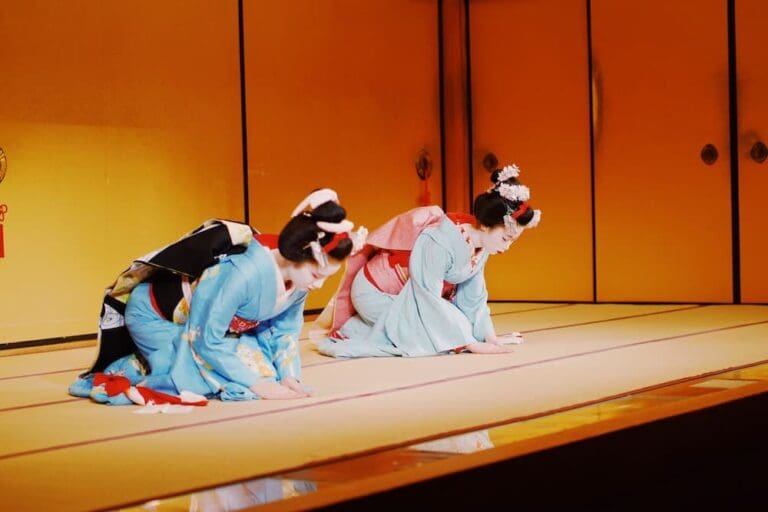If you’ve done Tokyo and Kyoto and wondered where the rest of Japan hides its big views and quieter sides you see on Instagram, Tohoku is where I suggest you point next. Living in Japan and working with travelers since 2019, I’ve seen how this region surprises people: wild coasts, lost-in-time onsen, festivals that aren’t just staged for cameras, and food that’s worth the journey in itself. Yet most guidebooks only give Tohoku a handful of pages. That’s why I put this together. This guide covers how to travel Tohoku well: when to come, what’s worth seeing and eating, how each season changes the game, and the simple tips that actually make a difference up north. You’ll find everything you need to plan a smooth trip here.
- Why Visit Tohoku?
- Essential Information for Tohoku Travelers
- Top Places to Explore in Tohoku
- Seasonal Highlights and When to Visit
- Culture, Heritage, and Local Experiences
- Food and Drink of Tohoku
- Where to Stay
- Getting Around Tohoku
- Practical Tips for Visiting
- Responsible and Sustainable Travel
- The Bottom Line
Why Visit Tohoku?
If you want the Japan everyone imagines but rarely finds, go north. Tohoku gives you big landscapes, deep traditions, and room to breathe. It is closer than it looks on the map: the bullet train gets you from Tokyo to Sendai in about 90 minutes, and to Aomori in around three hours.
The scenery is the hook. On one side you’ve got the rugged Sanriku Coast and bright-blue coves. On the other, quiet rice country and cliffs facing the Sea of Japan. In between are volcanoes, beech forests, and clear rivers. Think Lake Towada’s mirror surface, the waterfalls of Oirase Gorge, the gorges of Geibikei and Naruko, and winter “snow monsters” at Zao that feel otherworldly when you float past them in a ropeway cabin.
Culture here hasn’t turned into theater for tourists. You can walk centuries at once: the gold halls of Hiraizumi, cliff-temples like Takkoku no Iwaya, the 1,000-step climb at Yamadera, the pilgrim peaks of Dewa Sanzan. Samurai streets in Kakunodate still feel lived-in, not staged, and Aizu-Wakamatsu wears its castle-town history on its sleeve. Festivals aren’t just photo ops either. Nebuta in Aomori, Kanto in Akita, and Tanabata in Sendai have a raw energy that stays with you.
Onsens are reason enough to come. Tohoku does hot springs the old way: milky pools in the snow at Nyuto Onsen, the huge mixed bath at Sukayu, cedar-scented tubs at Tsuta, and steamy lanes winding through Zao Onsen village. After a hike, a ski day, or a cold walk by the sea, nothing beats stepping into 40-degree water under the stars. I recommend planning your days around a soak. It just fits how this region moves.
You eat well up here, and without queuing an hour for it. Sendai’s beef tongue is smoky and tender. Morioka’s “three great noodles” are fun and filling. Akita’s kiritanpo shows up grilled or in hotpot. Aomori’s apples are everywhere, from cider to pies, and Oma’s tuna is as good as it gets. In winter, Matsushima’s oysters are fat and briny; in summer, fresh soba and mountain vegetables taste like the season.
Tohoku is a true four-season destination. April brings vast cherry-blossom scenes like the moat at Hirosaki Castle. Summer means hiking ridgelines, the Michinoku Coastal Trail, and cool evenings in lantern-lit alleyways. Autumn color hits hard from the high peaks down to lakes and gorges. Winter stays winter, with proper powder, quiet towns, and ryokan hearths crackling at night. I keep coming back because it changes so clearly with each month.
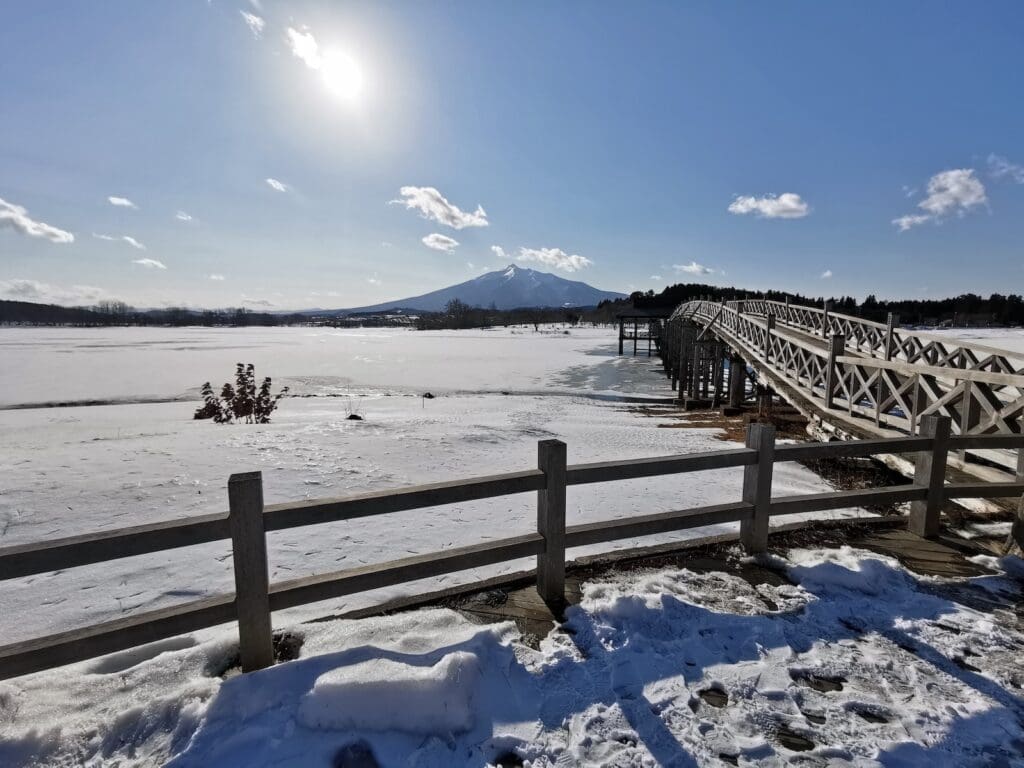
It’s also easy, and safe. Three Shinkansen lines stitch the region together, with Sendai as the main hub. Outside a small, clearly marked exclusion area near the Fukushima plant, radiation is not a factor. English can be limited in the countryside, but people are patient and kind, and prices feel fair compared to the big cities. Visiting coastal towns still rebuilding from 2011 puts your yen to work where it matters.
Most of all, Tohoku gives you space. Space on trails, in temples, at the counter in a family-run restaurant. If you’ve done Tokyo and Kyoto and want the part of Japan that locals whisper about for great winters, mountain air, and honest food, this is where to point your compass.
Essential Information for Tohoku Travelers
Here’s the quick lay of the land so you can plan with confidence before you go.
- Location and size: Tohoku covers the northeast of Honshu, just south of Hokkaido. It’s big, about 25,850 square miles, and distances between places are longer than you might expect.
- Prefectures: Aomori, Iwate, Miyagi, Akita, Yamagata, and Fukushima. Some guides also include Niigata, which pairs well with a Tohoku itinerary.
- People and cities: About 8.3 million people live across the six prefectures. Sendai in Miyagi is the hub with over a million residents and the region’s best transport connections.
- Payments: Cards are widely accepted in cities, though I still carry some cash for rural buses and small shops.
- Safety: Tohoku is extremely safe. Outside the small nuclear exclusion zone on the coast of Fukushima, radiation risk is negligible. Visiting the coast helps support communities still rebuilding from 2011.
How to get there
- Shinkansen: Three bullet train lines connect Tohoku to Tokyo and beyond. As a rule of thumb, Tokyo to Fukushima is about 1 hour, Tokyo to Sendai about 1.5 hours, and Tokyo to Aomori around 3 hours. This is the smoothest way to arrive.
- Airports: Sendai Airport (south) and Aomori Airport (north) are the main gateways, with domestic flights on JAL, ANA, Fuji Dream, Peach, and Skymark. There are no direct flights to Tohoku from the U.S. or U.K.; fly into Tokyo, then train or connect domestically.
- Train vs flight: From central Tokyo, the Shinkansen is often faster than flying when you factor in airport transfers and waiting time.
Getting around once you’re there
- Rail network: JR runs efficient trains across the region. In the cities, you’ll also find handy loop buses like Hirosaki’s 100-yen Dotenmachi Loop Bus and Hiraizumi’s Run Run Loop Bus. In Sendai, I like using the Loople bus to hit the main sights without thinking too much about transfers.
- Passes: The JR East Pass (Tohoku Area) gives flexible multi-day travel on JR lines including the Shinkansen. There’s also a JR East Pass (Nagano, Niigata Area). These passes are available to foreign residents of Japan too. If you’ll cover long distances, they’re worth running the numbers on.
- Car rental: For remote trails, gorges, onsen inns, and scenic drives, renting a car saves hours. Highways are well maintained, but winter driving needs care. I recommend booking a car with winter tires by default from late November to March.
- Rural reality check: In Tohoku, trains and buses are less frequent than in Tokyo or Kansai. Single-track mountain lines can slow or suspend service in heavy weather, and strong winds can halt trains completely. Buses often keep running when the trains pause, so I recommend checking both when planning winter day trips.
- Practicalities: IC cards don’t always work on rural buses, so keep coins handy. Coverage is good around towns, but in valleys or deep mountains your phone signal may drop. Download offline maps if you’re heading remote.
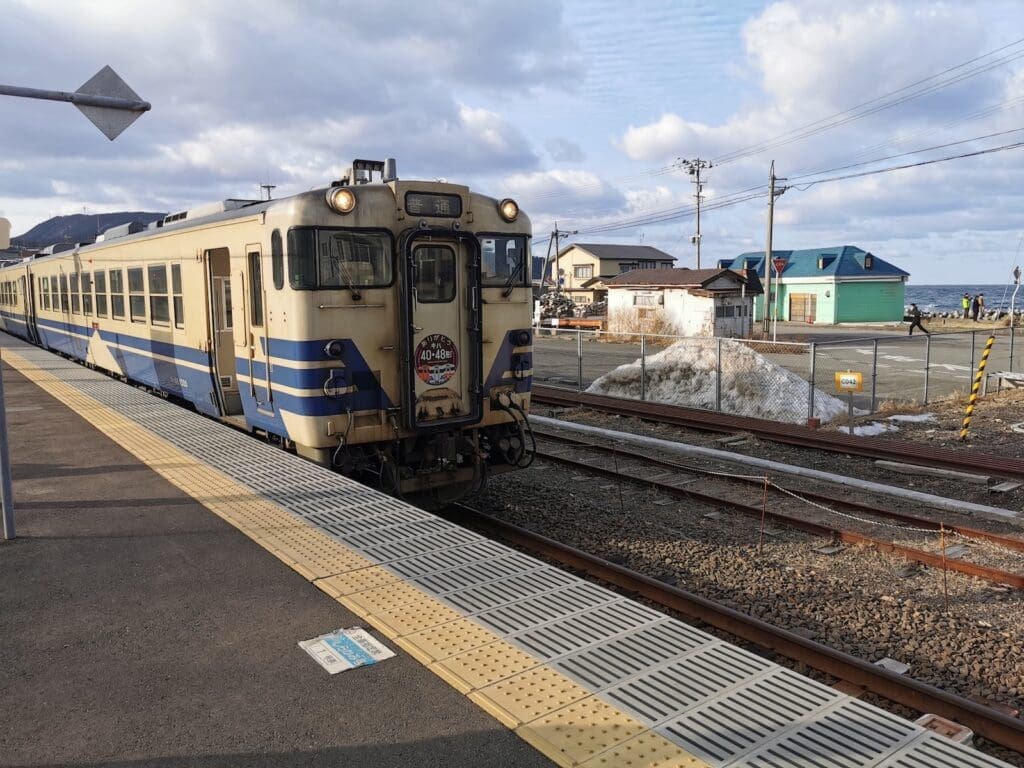
When to go and what to expect
- Spring (April–May): Cherry blossoms bloom later here than in Tokyo. Highlights include Hirosaki Castle’s petal-filled moat and riverside tunnels like Kitakami in Iwate. The Hachimantai Aspite Line opens in mid-April, carving a 17-mile (27 kilometers) “snow corridor” through walls of snow up to 8 meters.
- Summer (June–August): Lush greens, coastal drives, festivals, and great hiking. The Michinoku Coastal Trail has gorgeous stretches you can do as day hikes. Expect rainy season in June–July and the occasional late-summer typhoon.
- Fall (late September–November): Crisp air and spectacular foliage. Lake Towada and Oirase Stream shine from late October into early November, with Naruko Gorge often peaking in early November. Harvest foods like apples and new soba are everywhere.
- Winter (December–March): Deep snow, quiet towns, and serious onsen time. Zao’s rime-covered “snow monsters” and Appi Kogen’s long groomers are winter staples. In heavy snow, I build in buffer time and watch the wind forecast as much as the snowfall.
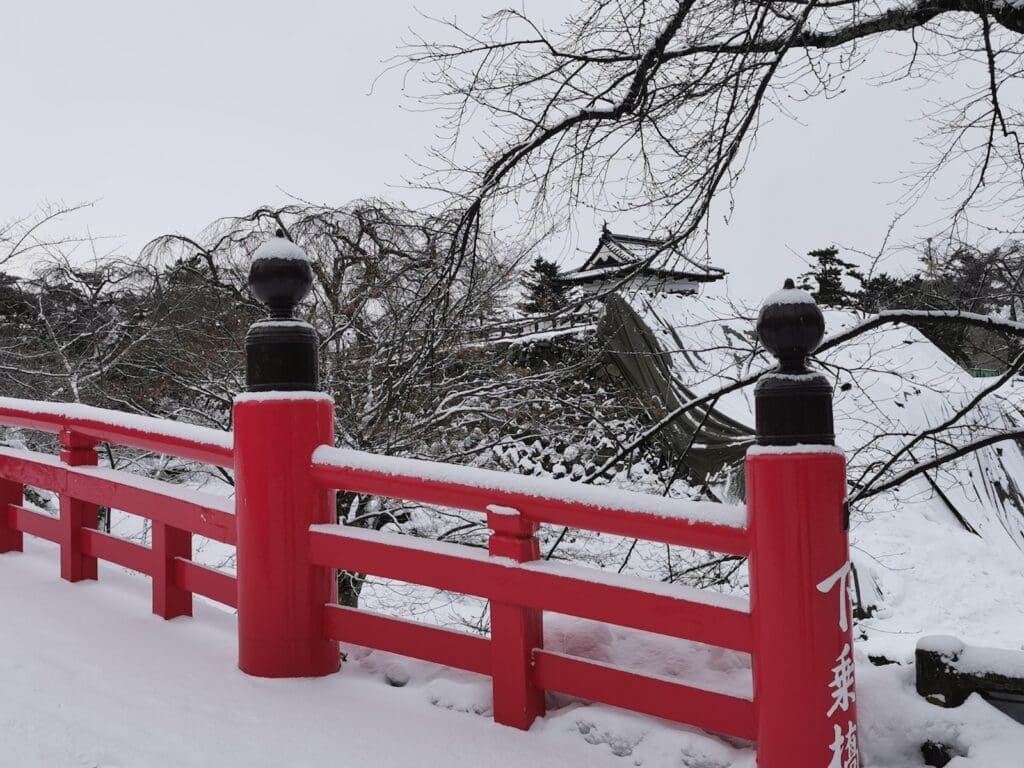
Good bases for first-timers
- Sendai: Best transport hub and food scene; easy access to Matsushima, Aoba Castle ruins, Zuihoden, and side trips to Yamadera.
- Morioka: Calm, elegant city with great noodles and access to Hiraizumi, Geibikei Gorge, and Hachimantai.
- Aomori/Hirosaki: Gateway to Oirase, Lake Towada, Mount Hakkoda, and apple everything in Hirosaki.
- Akita/Kakunodate: Samurai streets, Lake Tazawa, and Nyuto Onsen if you can spare a night.
- Yamagata/Zao Onsen: Warm sulfur baths, snow monsters in winter, and Yamadera nearby.
- Aizu-Wakamatsu (Fukushima): Castle town feel, Ouchi-juku, and the volcanic lakes of Goshikinuma.
My planning advice
- Do fewer sights per day than you would in Tokyo. You’ll enjoy Tohoku more at a steady pace, and you won’t get caught by an hourly train you just missed.
- In winter, start early and keep backup plans. I’ve swapped a rural train for a bus more than once when the wind picked up.
- For remote hikes and onsen, a car transforms what’s possible. For cities and the main sights, trains are easiest.
- Book popular onsen inns early, especially Nyuto Onsen and weekends in ski season.
Tohoku Prefectures at a Glance
I describe in more details each prefecture in the next section, but here is a quick overview for those who just want a quick summary.
- Aomori
Northernmost prefecture of Honshu with rugged coasts, big forests, and serious snow. Think Hirosaki Castle and its legendary cherry blossoms, Nebuta festival floats, Oirase Gorge and Lake Towada, Shirakami Sanchi’s beech forests, Mount Hakkoda’s autumn colors and winter backcountry, and top-notch apples and tuna. - Iwate
Wide open spaces anchored by Morioka and its “three great noodles.” Hiraizumi’s UNESCO temples, scenic river gorges like Geibikei and Genbikei, the dramatic Sanriku Coast, and highland routes around Hachimantai. Appi Kogen is a go-to for long ski runs. - Miyagi
Sendai is the region’s urban heart with easy links to Matsushima Bay, one of Japan’s classic scenic views. Zuihoden and Aoba Castle ruins tell the Date clan story. Zao’s Okama crater lake and Naruko Gorge add natural drama. Look for gyutan (beef tongue), zunda sweets, and seasonal oysters.

- Akita
Samurai-era streets in Kakunodate, the blue waters of Lake Tazawa, rural gorges, and the rugged Oga Peninsula with namahage folklore. Nyuto and Tamagawa Onsens are some of Japan’s most memorable hot springs. Don’t leave without trying kiritanpo. - Yamagata
Zao Onsen’s steamy streets and winter “snow monsters,” Yamadera’s mountainside temple, and the sacred peaks of Dewa Sanzan. Kamo Aquarium’s jellyfish halls and quiet, photogenic Ginzan Onsen round things out. Yonezawa wagyu has a loyal following. - Fukushima
Aizu-Wakamatsu’s castle town atmosphere, the thatched village street of Ouchi-juku, Goshikinuma’s colorful volcanic ponds, and scenic rail views around the Tadami Line bridges. Most of the prefecture is open, welcoming, and very much worth your time.
Optional add-on: Niigata
Often paired with Tohoku trips. Sea of Japan coastlines, big rice and sake country, fast ski access, and Sado Island’s history and coastal drives. If you’re coming from or returning to Tokyo, Niigata can slot in neatly before or after Tohoku.
Top Places to Explore in Tohoku
Aomori
Aomori rewards you if you split your time between the coast and the mountains. In Aomori City, start with the Nebuta Museum WA RASSE to see the massive festival floats up close (the Nebuta Festival itself runs Aug 2–7). I recommend pairing it with a quick walk through the waterfront area, a stop at A-FACTORY for local products, and the ASPAM building if you want an easy-view observatory. If you’re around Hirosaki, do not skip Hirosaki Castle and Park. It’s one of Japan’s best sakura spots, and when the petals fall the moat turns into a pink carpet. Hirosaki is also apple country; pop into Kimori Cidery for a tasting and wander the old samurai streets and the small but charming city museums.
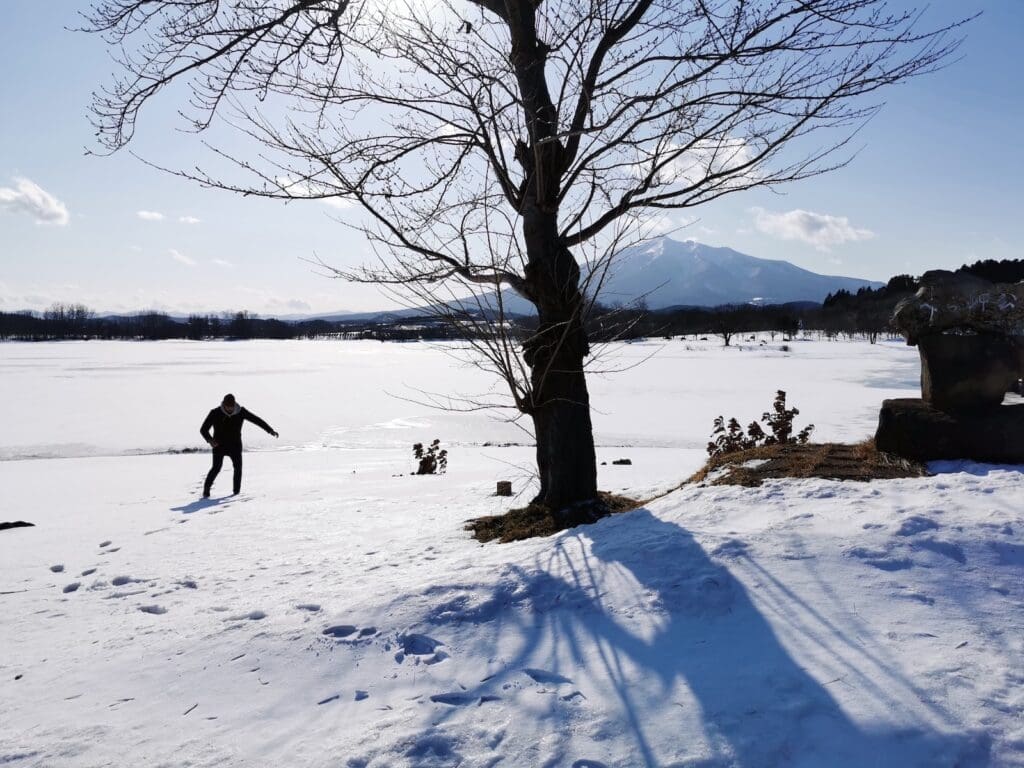
For nature, the Oirase Stream walk into Lake Towada is one of the best easy hikes in Tohoku. Waterfalls, mossy roots, and manageable paths make it a good choice even if you’re not a big hiker. If you’re driving, loop the lake for autumn views; if not, buses connect from Aomori or Hachinohe in season. West of the lake, Shirakami Sanchi’s primeval beech forest is UNESCO-listed and feels untouched. Farther north, Osorezan is one of Japan’s most sacred mountains, otherworldly and worth the detour if you like unusual spiritual sites.
Aomori also does onsens well. Sukayu’s giant mixed bath, Tsuta’s peaceful forest setting, and the lamplit seclusion of Aoni Onsen all offer very different experiences. For coastal food, Oma’s tuna is famous, and in Hachinohe the lantern-lit yokocho alleys (Miroku Yokocho and Tanuki Koji) are great in winter. If you’re into sake, Hachinohe Shuzo is a name to look for on menus. Summer hikers should aim for Mount Iwaki; autumn fans, Mount Hakkoda’s colors are fantastic.
Iwate
Iwate is big and varied, so I suggest a base in Morioka or near the coast. Morioka is a pleasant city under its namesake volcano with three signature noodles: wanko soba (served in lightning-fast mini-bowls), reimen, and jajamen. If you want the full wanko soba experience, go hungry.

The cultural heavy-hitter is Hiraizumi. Chuson-ji Temple’s golden hall and mossy paths hint at the power of the Oshu Fujiwara clan in the 11th–12th centuries. Nearby Motsu-ji is calmer, with a classic garden. If you can, add Takkoku-no-Iwaya, a cliffside temple that feels carved straight out of the rock. South of here, Geibikei Gorge and Genbikei are sister experiences: at Geibikei you drift past soaring rock walls, while Genbikei has a quirky “flying dango” snack delivered by basket on a rope. In winter, some riverboats run with cozy kotatsu tables, which is exactly as fun as it sounds.
For caves and coastline, Ryusendo Cave is an easy adventure with crystal-clear blue pools. On the Sanriku Coast, Jodogahama Beach’s white rock formations and Kitayamazaki’s cliffs give you that dramatic, wind-shaped shoreline this region is known for. I find the Michinoku Coastal Trail very doable in bite-sized sections if you want a few hours on foot. In the mountains, Hachimantai’s “Dragon Eye” forms in early summer as snow melts, and Appi Kogen is the reliable ski base when the snow arrives.
Miyagi
Sendai is Tohoku’s biggest city and a comfortable base for a lot of trips. In town, I like to connect the dots with the Loople bus: Zuihoden (Date Masamune’s ornate mausoleum), Osaki Hachimangu Shrine, and the Aoba Castle ruins for a wide view over the city. Matsushima Bay is about 30 minutes away and deserves the better part of a day: island-dotted views by boat, Zuigan-ji and Entsu-in temples, Godaido on its little islet, and the footpath to Fukuurajima. On the way back, Shiogama Shrine offers an impressive flight of stone steps and excellent sushi down by the port. From October to March, Matsushima’s oysters are in season; the all-you-can-eat grills at the fish market are as straightforward as it gets.
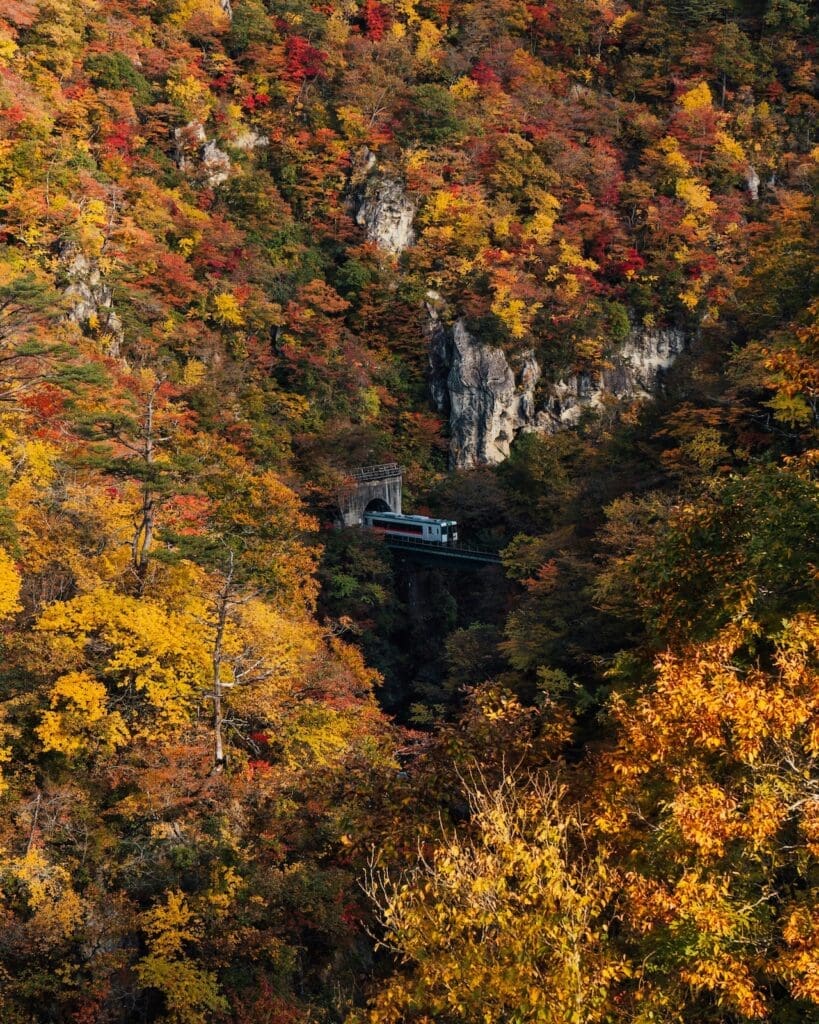
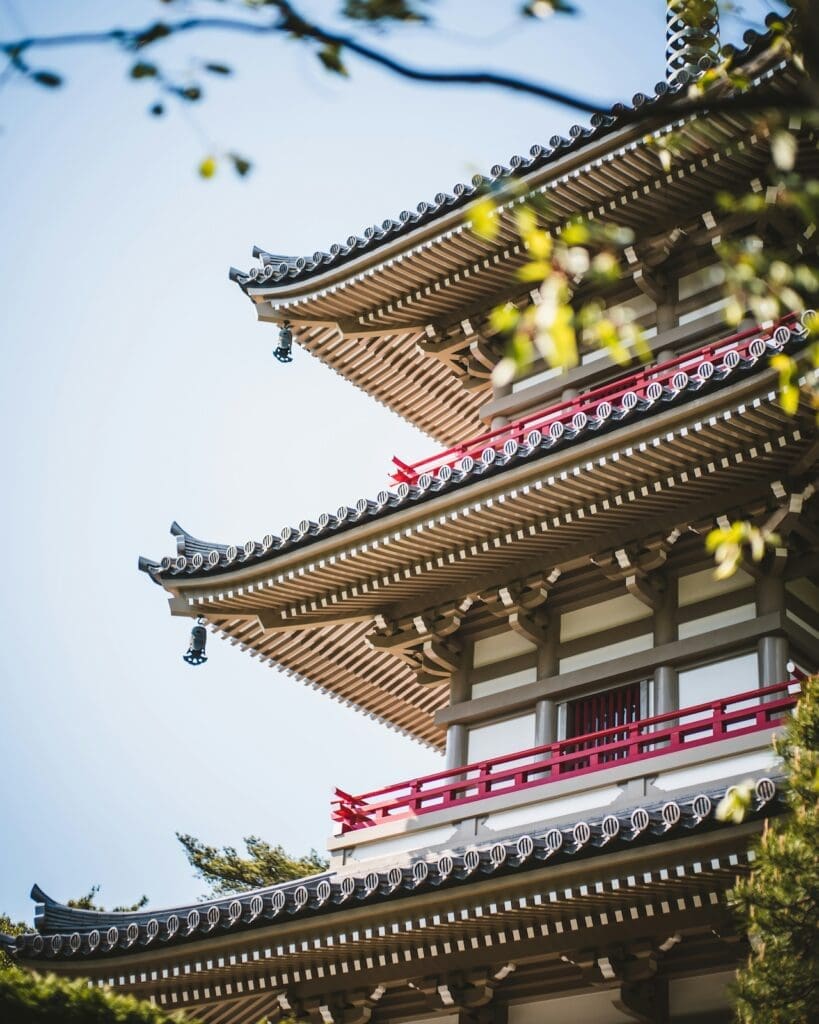
Further out, the Okama crater lake on Zao changes color with the weather. The access road is closed in winter, but the Zao area itself is alive year-round thanks to the onsen village and ski slopes. Naruko Gorge lights up with autumn leaves, and the hot-spring town there is an easy overnight. Offshore, Kinkasan feels far-flung; Tashirojima is the “cat island” if you’re traveling with animal lovers. Ishinomaki has rebuilt with a quiet resilience that’s easy to respect. If you’re a whisky fan, Nikka’s Miyagikyo distillery sits in a green valley near Sendai and offers tours.
Food-wise, gyutan (beef tongue) is a Sendai favorite, best grilled simply, and zunda turns sweet green soybeans into shakes and desserts that sound odd but taste great. One note I often share: the Zao Fox Village exists, but I don’t recommend it due to animal welfare concerns.
Akita
Akita is about quiet samurai streets, deep forest onsens, and a coastline with personality. Kakunodate’s samurai district is remarkably intact. It’s especially atmospheric in spring with weeping cherry trees, but even in winter the main residences typically open with shorter hours. Don’t expect a packed schedule there in January; do expect to slow down and enjoy the streets. From Kakunodate, Lake Tazawa is an easy hop. Circle the lake to see the golden Tatsuko statue, Goza no Ishi Shrine, and a few small viewpoints. If you’re lucky with timing, the Dakigaeri Gorge adds turquoise water and suspension bridges to the mix.

Nyuto Onsen and Tamagawa Onsen are the onsen lovers’ goalposts: rustic open-air baths in the forest at Nyuto, and Tamagawa’s intensely acidic waters that people swear by. If you can spend a night at a traditional inn up here, I recommend doing it. On the coast, the Oga Peninsula hosts the Namahage folklore and museums, plus winter seas that feel wild and photogenic.
For food, kiritanpo (grilled rice cakes) show up in hearty hotpots or brushed with miso. Near JR Akita Station, Kiritanpo-ya is a solid introduction. Takashimizu Brewery’s tasting room is a short ride from central Akita if sake is on your list. Winter visitors should know Akita City’s nightlife clusters around Kawabata, but it’s calm compared to bigger cities. If you ski, Tazawa and nearby resorts offer smaller, friendlier slopes with good snow.
Yamagata
Yamagata is mountains and onsens. Zao Onsen is the star, with sulphuric hot springs in a compact village and a ski area that in midwinter grows “snow monsters,” rime-covered trees that look like frozen waves. If the weather breaks clear, take the ropeway and savor it; on whiteout days, I just soak, stroll to a noodle shop, and try again the next morning. Yamadera, a temple founded in 860, climbs a mountainside with lookouts that make you forget the effort. It’s easy from Sendai or Yamagata City, but trains aren’t super frequent and the steps get icy, so start early and wear real shoes.
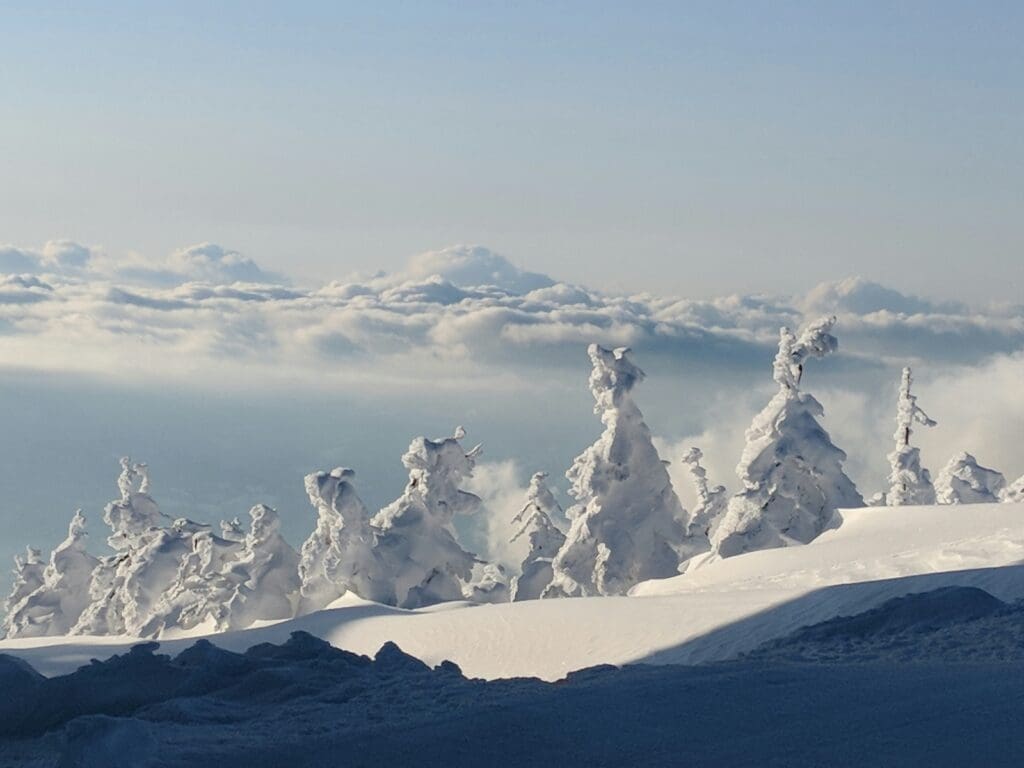
To the northwest, the Dewa Sanzan shrines are a pilgrimage in three acts: Haguro-san (accessible year-round with 2,446 stone steps and a famous five-story pagoda), Gassan, and Yudono-san. Tsuruoka adds another layer with the self-mummified monks at Kaikoji and a surprisingly good aquarium, Kamo, with the world’s largest jellyfish collection. Ginzan Onsen looks like a period film set with riverside inns glowing at night. It’s beautiful, yes, but demand is high and day-trip crowds can kill the magic. Book early if staying is important to you.
On the plate, Yonezawa wagyu is one of Japan’s best, and in early June Sagae’s cherries kick off with farm stands everywhere. If you want a quieter onsen experience without the Zao buzz, Meigetsuso and other smaller ryokan around the prefecture deliver a gentler pace.
Fukushima
Fukushima is big, safe to visit, and full of rewards if you give it time. I recommend basing in Aizu-Wakamatsu, a castle town with samurai history, a good local food scene, and easy day trips. Tsuruga-jo Castle anchors the city with a photogenic tower and spring blossoms, and Sazaedo, a double-helix wooden pagoda from 1796, is one of those structures you remember long after. Sauce katsu (crispy pork cutlet with a tangy sauce) is the local comfort dish to try between sights.
Beyond Aizu, Ouchi-juku is a preserved street of thatched Edo-period houses that feels like a film set, best in the early morning or late afternoon. North of there, the Goshikinuma/Five-Colored Ponds scatter bright blues and greens through the forest in Urabandai. If you’ve seen photos of a train crossing a bridge over a mirror-like river in winter, that’s the Tadami Line at the First Bridge viewpoint. It’s a logistics puzzle without a car, but worth planning if you love that kind of scene. Lake Inawashiro sits at the foot of Bandai; in winter you can ski around Urabandai, and in summer Mount Azuma offers straightforward, rewarding hikes.
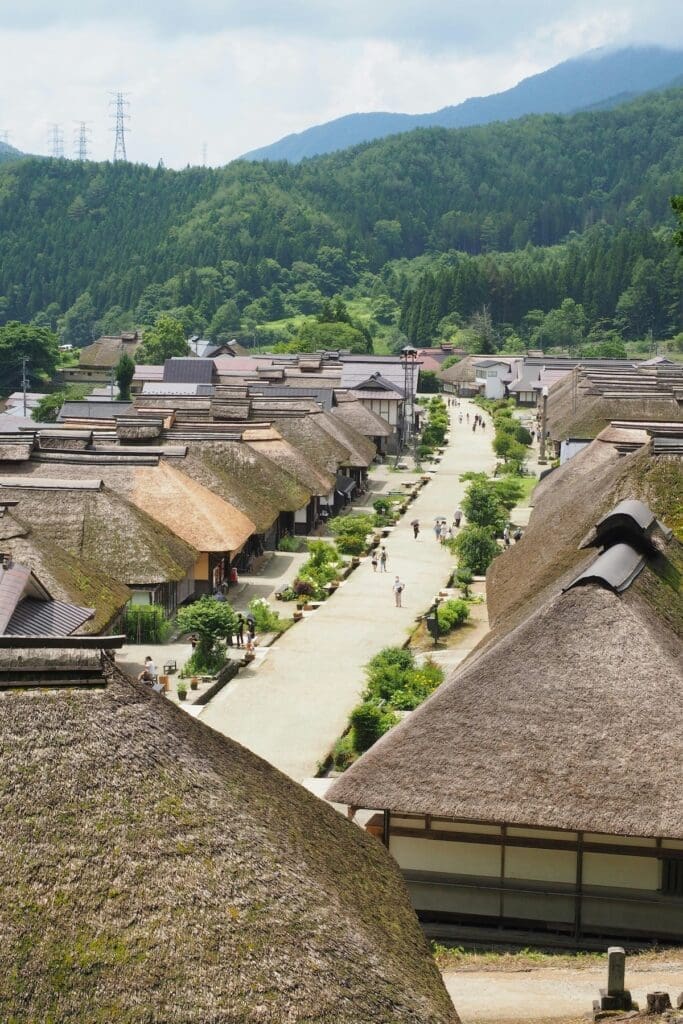
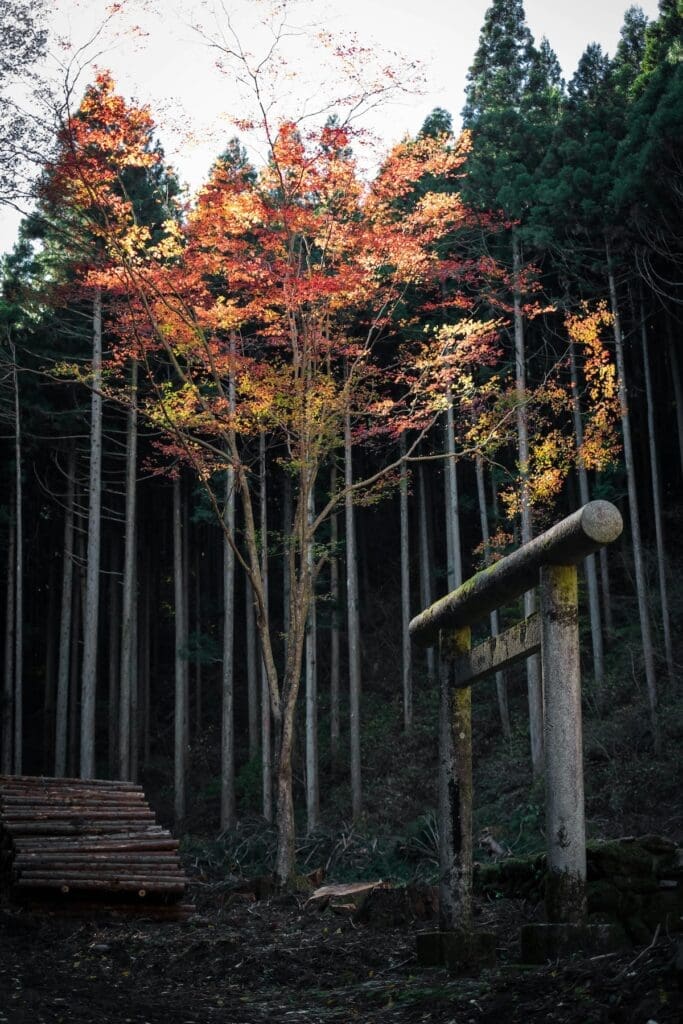
Art lovers have two excellent surprises: the Morohashi Museum of Modern Art in the forest with a major Dalí collection, and the Fukushima Prefectural Museum of Art back in the city, strong on modern Japanese works. For onsens, Tsuchiyu is close and classic. If you’re coming in cherry blossom season, Tsuruga-jo’s grounds make a great picnic base, and in autumn, band together Zao and Fukushima trips to follow the colors across the border as the elevation changes.
Across the prefecture, you’ll find quiet towns, plenty of space, and people who appreciate visitors making the journey. I recommend lingering. Even just one more night in Aizu changes the whole feel of the trip.
Seasonal Highlights and When to Visit
Tohoku is a true four-season region. Spring brings late blooms and thawing mountain roads. Summer is all about hikes and big, loud festivals. Autumn has some of the best foliage in Japan. Winter is deep snow, quiet towns, and steaming outdoor baths. Pick your season based on what you want most, then build a flexible plan. Weather swings are real here, especially wind in winter that can pause trains and ropeways. I usually keep two versions of my itinerary and watch the forecast a few days out.
Spring: Blossoms and Scenic Drives
Spring arrives late. Lowland cherry blossoms tend to peak from mid to late April, sometimes into early May the farther north you go. If you’ve seen Tokyo’s early April bloom before, this is your chance to catch a second round.
- Hirosaki Castle Park is my favorite spring spot in Japan. The timing is late April to early May, and when petals fall they form the famous “pink moat.” Book accommodation early and give yourself two days if you can.

- Kitakami Tenshochi Park (Iwate) lines the river with blossoms and carp streamers for Children’s Day, which makes the riverside look alive in the wind.
- Tsuruga-jo Castle in Aizu-Wakamatsu (Fukushima) has textbook castle-and-cherry-blossom views with a relaxed castle town around it. I like basing here to explore Ouchi-juku and the nearby onsen areas.
- The Hachimantai Aspite Line typically reopens in mid-April as a snow corridor, with walls that can tower over you. Drive or join a local bus, then walk a short section for scale. It is one of those “only in Tohoku” sights.
- Skiing often runs into April at Zao and other resorts, so you can literally ski in the morning and see blossoms in the afternoon some days.
Practical spring notes:
- Golden Week (late April to early May) brings crowds to blossom hotspots. If that’s a concern, I recommend trying for the week before or the tail end after the peak if possible.
- Weather flips between warm sun and chilly rain. Pack layers and a light shell. In early April, some mountain paths still have ice. If you plan to climb Yamadera early in the season, wear real traction footwear.
Summer: Hikes and Vibrant Festivals
By June, everything is green. The rainy season is lighter up here than in the south, but June and early July can be wet. From mid-July through August, Tohoku turns into festival country and hiking heaven. It does get hot and humid, though usually several degrees cooler than Tokyo.
- The big three August festivals are a blast:
- Aomori Nebuta Matsuri (Aug 2–7): giant glowing floats, taiko, and energy that shakes the streets.
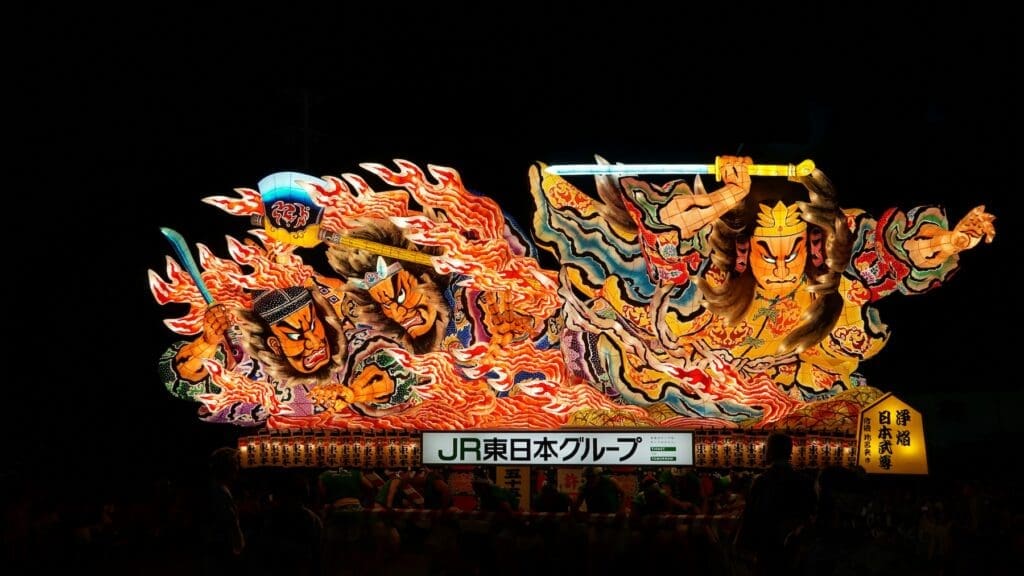
- Sendai Tanabata (Aug 6–8): colorful streamers downtown and a festive city vibe.
- Akita Kanto (late July to mid-Aug): performers balance towering lantern poles with hands, hips, even foreheads.
Book months in advance and arrive early each day to find good viewing. - For hikes, I recommend:
- Dewa Sanzan (Yamagata): tackle Haguro, Gassan, and Yudono for a powerful three-peak experience. Haguro’s stone stairway is great even if you only do one.
- Mount Iwaki (Aomori) and Mount Iide (Yamagata–Fukushima–Niigata border) for committed day hikes and big views.
- Oirase Gorge to Lake Towada for a beginner-friendly waterfall walk; go early to avoid crowds.
- The Michinoku Coastal Trail runs 620 miles along the Sanriku Coast. You do not need to thru-hike. I like picking a half-day segment around Jodogahama Beach or Kitayamazaki for cliffs, pines, and sea air.
Practical summer notes:
- Obon week in mid-August is peak crowds and peak heat. If you’re festival-focused, it’s worth it; otherwise I’d aim for late July or late August.
- Start hikes early, carry insect repellent, and plan transport carefully in rural areas where buses are infrequent.
- Coastal breezes make Sanriku more comfortable than inland basins on hot days. I often recommend basing in Sendai or Morioka and day trip out.
Fall: Spectacular Autumn Leaves
Autumn is when Tohoku shines. Cooler, clearer weather arrives, and foliage rolls south and downhill over six to eight weeks. You can chase color by adjusting elevation and latitude as you go.
- Early to mid October: high mountains first. Zao’s upper slopes and Aomori’s Hakkoda start turning. On a bright day at Hakkoda, the colors feel endless.
- Late October to early November: Lake Towada and the Oirase Stream peak with mirror-like reflections. This is one of the best foliage walks in Japan, full stop.
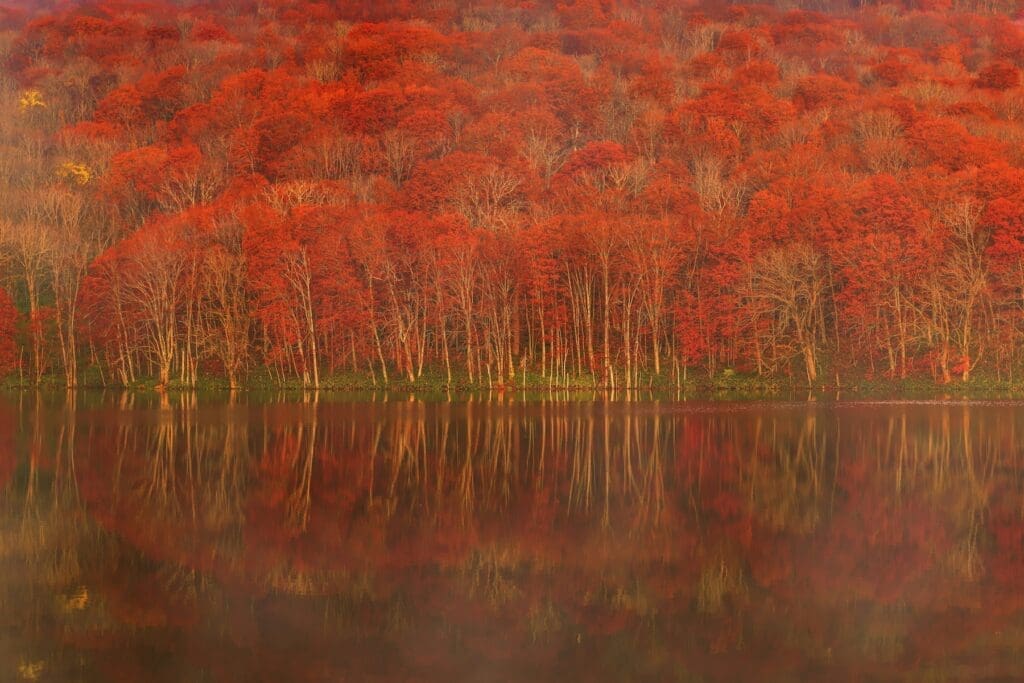
- Early November: Naruko Gorge in Miyagi lights up with red bridges and rock walls. It gets busy, so go early or late in the day. Naruko Onsen is a classic base.
- Fukushima stays colorful later than the far north. I like Tsuchiyu Onsen for leaf-viewing around Mount Azuma and the Bandai–Urabandai area, with lake views and easy trails.
- Seasonal flavors make fall extra good: fresh soba, Aomori apples (cider too), and oyster season beginning in Matsushima Bay from October.
Practical fall notes:
- Late November in the north can already be bare. If you travel then, aim for southern Tohoku like Aizu, Urabandai, or lowland Miyagi.
- Popular roads like the Zao Echo Line can close for weather late in the season. Check road status the morning of your drive.
- Clear, crisp mornings are best for photos. I often plan two dawns at a key spot in case one is cloudy.
Winter: Onsen and Snow Adventures
Winter in Tohoku is the real deal. Deep snow, quiet towns, and some of Japan’s best hot springs. It is also the season to build in buffers and check conditions daily. Trains run well in snow, but strong winds can pause single-track mountain lines and ropeways. Buses are sometimes more reliable when wind picks up.
- Zao’s “snow monsters” are surreal rime-covered trees that you can see from the ropeway or ski through when visibility allows. I recommend watching the weather and going at the first clear window; whiteouts happen, and ropeways can close for wind. There are nighttime light-ups on select days that feel otherworldly.
- Ski options are wide: Appi Kogen (Iwate) for long groomers, Zao Onsen (Yamagata) for the monsters, Lake Tazawa/Kamakura area (Akita), Nekoma (Fukushima) with great powder, and easy Shinkansen access to GALA Yuzawa if you’re including Niigata.
- Onsen I keep coming back to: Nyuto Onsen (Akita) with mixed outdoor baths in the snow, Sukayu Onsen (Aomori) with its legendary “thousand-person bath,” and Aoni Onsen’s lamp-lit ryokan for a proper unplug. These places get snowed in with atmosphere you cannot fake.
- Winter festivals warm things up:
- Yokote Kamakura Festival (Akita, Feb 15–16): candlelit snow huts and steaming amazake.
- Sendai Pageant of Starlight (December): hundreds of thousands of LEDs on Jozenji-dori create a calm, glowing tunnel.
- For food and cozy nights, I like Hachinohe’s lantern-lit alleyways (Miroku-Yokocho, Tanuki-Koji), slurping hot bowls between little bars. Matsushima’s oysters are at their best from October to March.
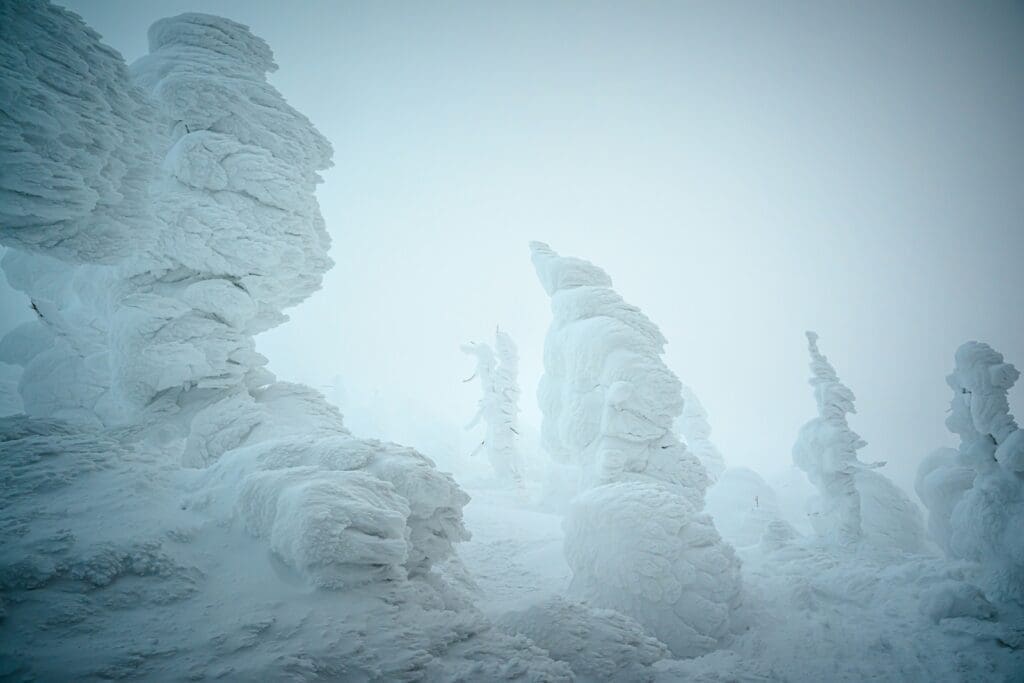
Practical winter notes:
- Footwear matters. I carry microspikes for icy temple stairs like Yamadera and wear insulated boots with real tread.
- If you ski alone at Zao, you will be fine sticking to marked runs. The resort layout snakes around the mountain, so keep an eye on the trail map and Uhr timeline for the last ropeways.
- Build backup plans for days with high winds. Swap Yamadera for a museum day in Sendai, or trade an exposed viewpoint for an onsen. Flexibility is your friend.
- Scenic winter drives are possible with a rental car and proper tires, but check road advisories each morning. Some mountain roads fully close until spring.
If you want color and calm, go fall. For festivals and hikes, go summer. For a late blossom season and that snow corridor magic, go spring. And for quiet towns, deep baths, and those wild snow monsters, winter is hard to beat. I’ve loved Tohoku in every season, but I plan differently each time: a bit slower than I would in the big cities, and always with a weather plan B tucked in my pocket.
Culture, Heritage, and Local Experiences
Tohoku’s culture isn’t on a stage for visitors. It’s lived, seasonal, and usually local-first. If you slow down, introduce yourself, and join in where it’s invited, you’ll be welcomed. I recommend learning a few simple phrases, asking before taking close-up photos of people, and carrying small coins for shrine offerings or festival donations. The region values quiet, tidy behavior and clear queues. It’s simple stuff, but it goes a long way here.
Festivals and Traditional Events
- Aomori Nebuta Matsuri (Aug 2–7)
Giant illuminated floats drift through the streets to taiko drums and flutes. You can go beyond watching. Rent a haneto outfit, follow the rules, and you’re allowed to join the parade yelling “rassera.” It’s the most fun way to experience the festival. I suggest booking accommodation months ahead and leaving town by local train or foot, as traffic gets locked up around the route. Final night fireworks are excellent if you can stay.

- Sendai Tanabata (Aug 6–8)
The shopping arcades fill with huge paper streamers. Write a wish on a tanzaku slip at many shops and hang it with everyone else. If you’re around in December instead, the Pageant of Starlight turns Jozenji-dori into a tunnel of lights. Both are easy to pair with a day in town. During Tanabata, go early before lunch if you want photos without crowds. - Akita Kanto Festival (early to mid Aug)
Performers balance 12-meter poles with swaying lanterns on their palms, shoulders, and forehead. It feels impossible until you’re standing right under it. Look for hands-on corners where visitors can try a smaller kanto pole between the performances. Street food runs late, but I recommend earplugs if you have sensitive hearing. - Yokote Kamakura (Feb 15–16)
Candlelit snow huts pop up around town. Local kids invite you in for sweet amazake and mochi. Bring coins for small donations; it supports the neighborhood groups that build the kamakura. Dress warm and waterproof, then plan to linger. The best part is chatting inside. - Donto-sai at Osaki Hachimangu, Sendai (mid Jan)
Residents bring their New Year decorations and watch them burn in a towering bonfire. You’ll see men in traditional loincloths making shrine visits in the cold. It’s intense and beautiful. Keep respectful distance from the procession and follow staff instructions around the fire. - Spring hanami standouts
Hirosaki Castle’s late April festival is famous for the “petal moat.” If you want a quieter vibe, go first thing on a weekday. Kitakami’s riverside park hangs lines of carp streamers for Children’s Day; it’s lovely with a bento on the grass. In Aizu, the grounds of Tsuruga-jo Castle are great for sakura and easy to mix with local food in town.
Winter lights and snow
Many resorts and towns host small snow events and illuminations. Zao’s snow monsters are not a festival, but if you time a clear evening the ropeway night viewing feels ceremonial. Check for wind closures and keep your plan flexible.

On the practical side: Tohoku distances are large and bus or train frequency can drop in winter. For night events, I suggest staying within walking distance or confirming your last bus and taxi availability in advance. If wind picks up, some trains stop. Buses often keep moving.
Temples, Shrines, and Historic Towns
- Hiraizumi, Iwate
Chuson-ji’s gold-leaf Konjikido is a must, and Motsu-ji’s Pure Land garden is peaceful even when bare in late autumn. If you have time, Takkoku-no-Iwaya is a striking cliffside temple nearby. I recommend using short taxi hops between the sites to save daylight. In winter, the snow adds charm but slows everything down. - Yamadera (Risshaku-ji), Yamagata
The climb is 1,000-plus stone steps through cedar forest to small halls perched on the cliff. I’ve done it in snow and it’s doable with proper footwear, just slower and more careful. Allocate three hours station-to-station if you like to take photos. Warm up with soba at the base when you’re done.
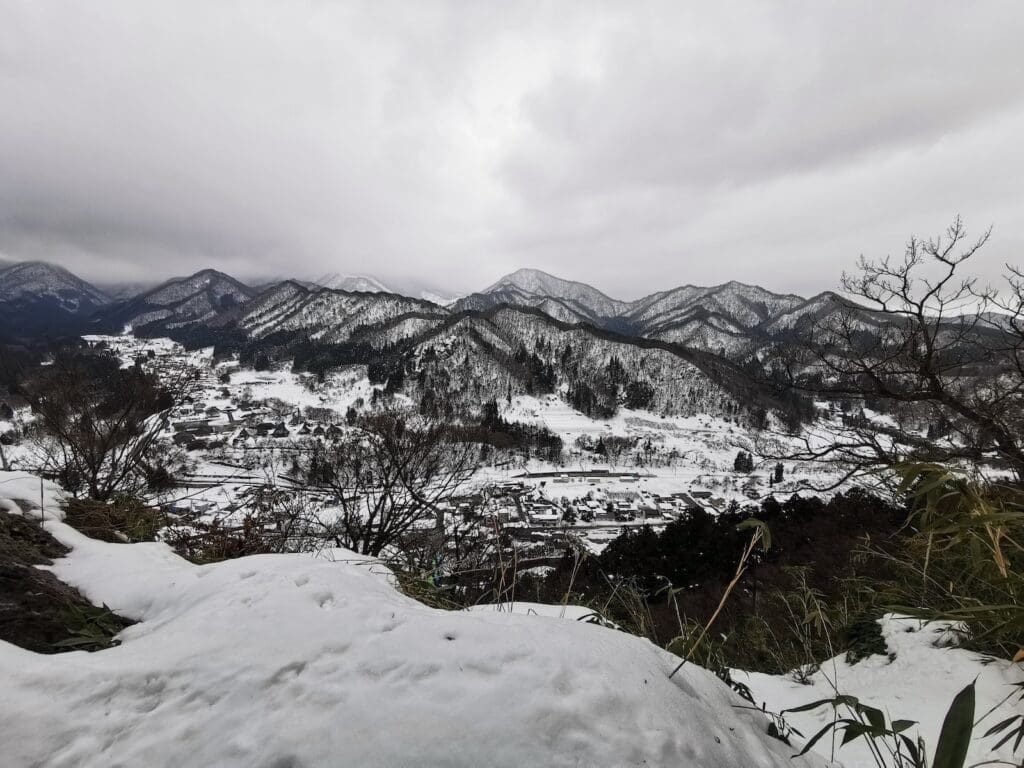
- Dewa Sanzan, Yamagata
The three sacred mountains are a classic summer pilgrimage. Mt. Haguro is the most accessible year-round by road, and its ancient cedar stairway and five-story pagoda are unforgettable. In season, you can stay at a shrine lodging and eat shojin ryori (traditional Japanese Buddhist cuisine). I suggest calling ahead, or having your hotel help reserve in Japanese. - Aizu-Wakamatsu, Fukushima
Tsuruga-jo Castle houses a solid museum. Don’t miss Sazaedo’s double-helix staircase, which twists in a way that makes you feel you’ve stepped into a story. Ouchi-juku, a preserved post town nearby, serves famous negi-soba eaten with a leek as your “chopstick.” It’s touristy but still worth it outside peak hours. - Kakunodate, Akita
The samurai district preserves wide streets and stately homes. The Aoyagi and Ishiguro residences are open year-round, though winter hours can be shorter and the town is quiet. Honestly, that quiet is part of the charm. Walk carefully on icy sidewalks and leave extra time. - Hirosaki, Aomori
A compact castle park with a photogenic keep and moats. In spring it’s packed; in winter it’s crisp and serene. Pair it with a stop for apple treats in town, since Hirosaki is famous for them.
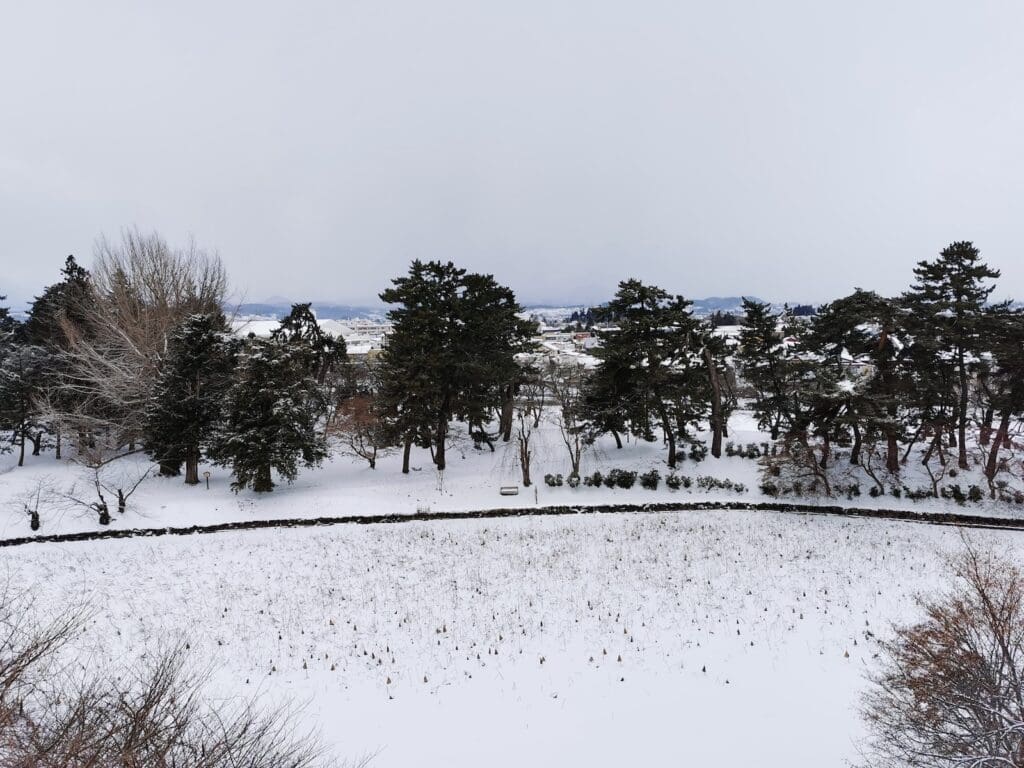
- Matsushima and Sendai, Miyagi
Around Matsushima Bay, Zuigan-ji, Entsuin, and Godaido make a good trio. Back in Sendai, Osaki Hachimangu is a National Treasure, and Zuihoden (Date Masamune’s mausoleum) shows flamboyant Momoyama style. They’re spread out, so the Loople sightseeing bus helps. I like starting at Zuihoden, then working downhill.
Wherever you go, consider collecting a goshuin stamp. Buy a goshuincho notebook at a temple or shrine, offer the small fee, and watch the monk or attendant brush your page with beautiful calligraphy. It’s a respectful, memorable souvenir.
Crafts, Folklore, and Customs
- Hands-on crafts
Naruko Onsen in Miyagi is known for kokeshi dolls. You can paint your own at local studios and learn the differences between regional styles. In Morioka, visit Iwachu to see Nanbu tekki ironware and browse seconds for good deals. Aizu is strong for lacquerware and painted candles; small workshops often welcome visitors. In Akita’s Odate, magewappa cedarware makes elegant bento boxes and trays. Up in Aomori, keep an eye out for Tsugaru kogin sashiko stitching, a geometric embroidery that looks great on modern bags and coasters. - Traditional stages and tastings
Kosaka’s Kourakukan in northern Akita is the country’s oldest operating kabuki theater and offers guided visits. In Sakata, Somaro hosts daytime dances in a beautifully restored teahouse. If you like tasting culture, book Nikka’s Miyagikyo distillery near Sendai, try sake flights at Takashimizu in Akita or Hachinohe Shuzo in Aomori, and sample apple cider at Kimori Brewery in Hirosaki. - Folklore in the wild
The Oga Peninsula’s namahage are horned “deities” who visit homes in winter, shouting and rattling doors to scare kids into good behavior. It’s loud and playful and deeply local. The Namahage Museum explains the ritual without sensationalizing it, and demonstrations are frequent. In Iwate’s Tono, folklore lives in everyday places: the Kappa-buchi pool, thatched farmhouses at Tono Furusato Village, and the stories from Tono Monogatari. I suggest renting a bicycle for a slow loop on a clear day. - Onsen and shrine manners
Tohoku is onsen heaven. Always wash thoroughly before you get in, keep towels out of the water, and soak quietly. Tattoos are increasingly tolerated but still restricted in some baths; check ahead or look for “kashikiri” private baths. At shrines and temples, bow once at the torii gate, purify hands and mouth at the basin, and step aside after praying to give others space. Photography is fine outdoors but avoid flash inside halls and never touch festival equipment or private altars. - Joining in, respectfully
If a festival or neighborhood invites you to participate, do it. Rent the proper outfit, follow the rules, and ask a staff member when unsure. Buy snacks from local stalls, return your trash, and donate where boxes are placed. I like carrying a small stash of ¥10 and ¥100 coins for this. In smaller towns, a simple “konnichiwa” while you walk past a house does wonders.
Tohoku rewards curiosity and patience. Pick one or two traditions you really want to experience, give them time, and let the weather decide the rest. When you do, you’ll feel why people here hold these customs close, and you’ll leave having been part of them in a small but real way.
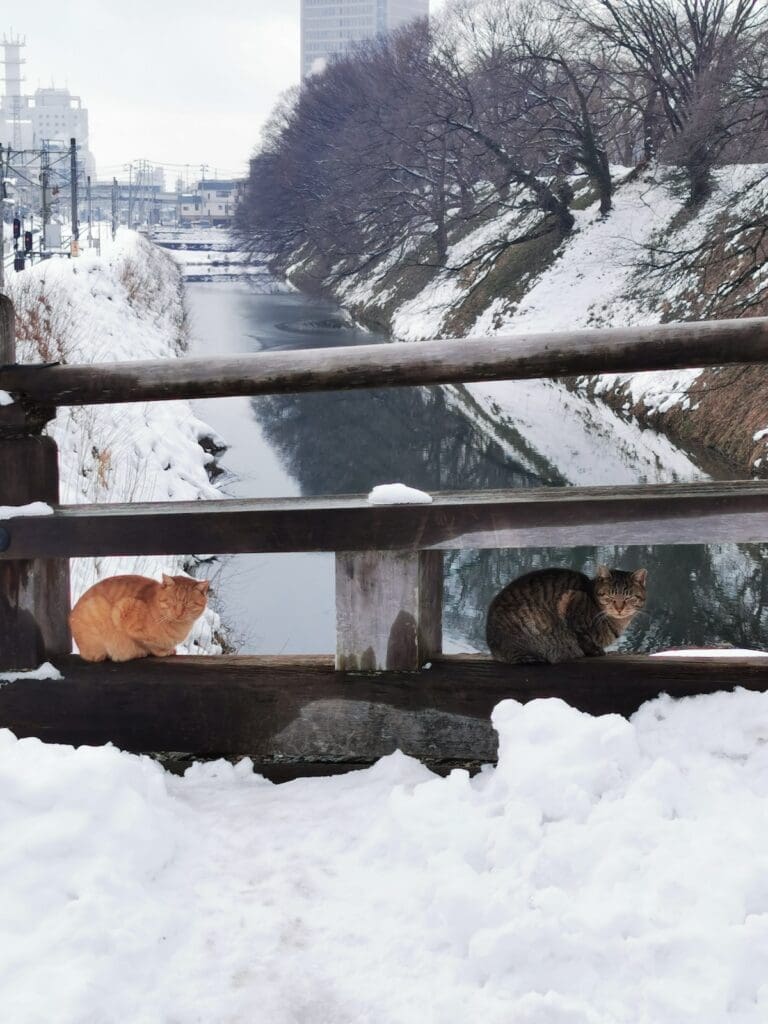

Food and Drink of Tohoku
Tohoku cooks with seasons first. Snow country comfort in winter, bright produce and seafood in summer and autumn, and simple dishes that make sense in the cold. You’ll find hearty hotpots, charcoal-grilled specialties, fantastic noodles, and some of Japan’s best sake. I love this region for how unpretentious the food is. It’s everyday-good, often family-run, and you rarely have to queue.
Regional Specialties
- Gyutan (Sendai): Sendai’s signature is beef tongue, sliced thick, salted, and charcoal grilled. It’s tender with a slight chew and a smoky edge. A set usually comes with barley rice, oxtail soup, and pickles. I recommend trying a dedicated gyutan shop near Sendai Station so you get the classic style; specialty spots like Tanya Zenjirou or a yakiniku place like Sansuien will set you right.
- Zunda (Sendai): Zunda is sweetened edamame paste. You’ll see it on mochi, in parfaits, and as a Shake. It sounds odd, tastes clean and nutty, and somehow works. I recommend grabbing a quick Zunda Shake at Zunda Saryo inside Sendai Station between trains.
- Morioka’s “Three Great Noodles” (Iwate): This city eats noodles three ways. Reimen are cold, springy noodles with a light, tangy broth. Jajamen are thick noodles with meat-miso and cucumber; mix well, then at the end crack an egg into the bowl and add hot broth for “chi-tan-tan.” Wanko soba is an experience: bite-sized portions of soba refilled over and over until you yield. It’s fun with friends and surprisingly filling. If you want the classic wanko soba setup, Azumaya is the old standard.
- Kiritanpo (Akita): Pounded rice shaped around sticks, grilled, then served two ways: lacquered with miso or simmered in a chicken-and-burdock hotpot (kiritanpo nabe). On a freezing night, this is exactly what you want. Near Akita Station, Kiritanpo-ya does a solid introduction.
- Aomori Apples and Apple Cider: Hirosaki grows Fuji apples by the truckload, and you feel it in the bakeries and roadside stands. Beyond pies and tarts, try the cider. I like the casual tasting flights at Kimori Brewery by Hirosaki Apple Park, where you can compare styles while looking at the orchards.
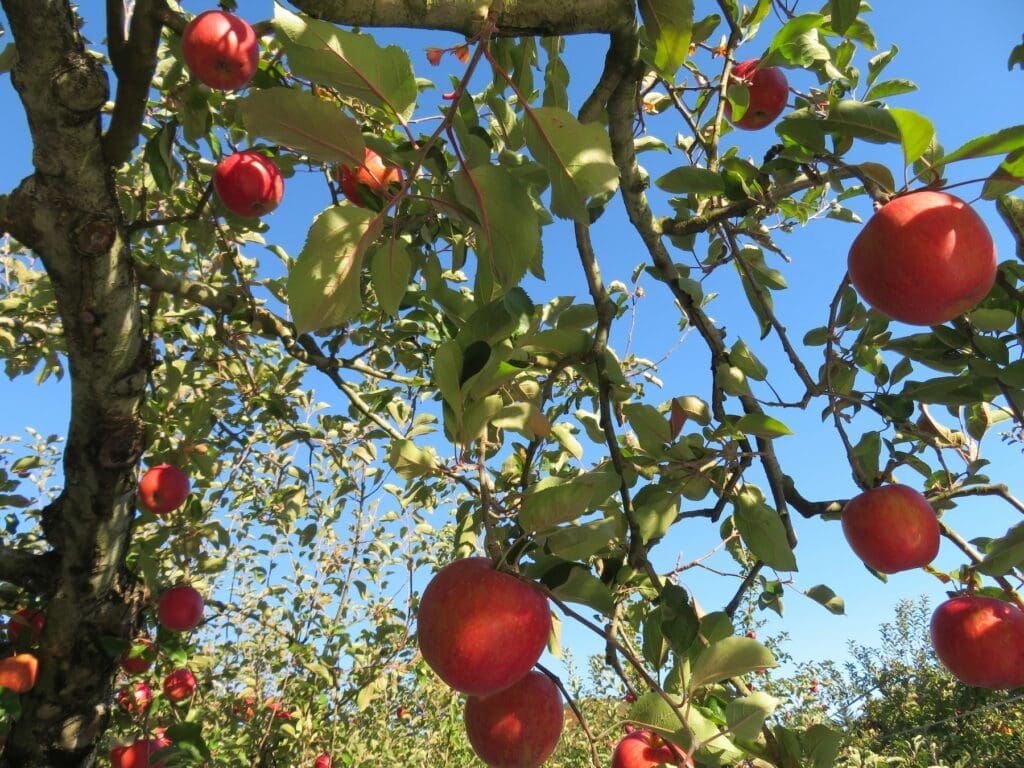
- Aomori’s B-class Classic: “Miso Curry Milk Butter Ramen”: Aomori City’s comfort bowl is a rich, slightly sweet miso broth punched up with curry, milk, and a knob of butter. It’s a nostalgia dish locals love and a warm-up from winter wind.
- Yonezawa Wagyu (Yamagata): One of Japan’s top wagyu brands. Yonezawa beef is known for fine marbling and clean flavor, whether as steak, sukiyaki, or yakiniku. If you’re splurging once in Yamagata, make it this.
- Sauce Katsu-don (Aizu-Wakamatsu, Fukushima): A breaded pork cutlet dipped in a tangy Worcestershire-style sauce, laid over rice. It’s simple diner food done right, and every shop has its own sauce ratio. I usually go at lunch; portions are generous.
- Soba and Autumn: New-crop buckwheat is a big deal across mountain areas of Tohoku. If you visit in late autumn, duck into a countryside soba-ya for freshly milled noodles. It’s one of those quiet, perfect meals you remember.

Drinks to look for
- Sake: Tohoku’s cold climate and clean water produce elegant, aromatic sake. In Akita, Takashimizu is an easy place to learn styles. In Aomori, Hachinohe Shuzo pours excellent Mutsu Hassen. If you’re heading west to Niigata (often paired with Tohoku trips), Obata Shuzo on Sado Island and Taiyo Sake Brewery in Murakami are standouts. I suggest ordering tasting flights to see what you like before buying bottles.
- Whisky: Near Sendai, Nikka’s Miyagikyo distillery runs tours and tastings. It’s a nice half-day if you’re based in the city. Book ahead when possible.
- Cider: Beyond Hirosaki’s Kimori, keep an eye out for apple ciders in Aomori specialty shops and department store basements. Crisp, low-alcohol, and very drinkable.
If you’re driving, skip tastings and pick up bottles to enjoy later. If not, tasting rooms and brewery shops make it easy to sample a range.
Seafood and Market Experiences
- Matsushima Oysters (Miyagi): From October to March, Matsushima Bay turns into oyster heaven. You’ll find fresh oysters raw, grilled, and in hearty oyster hotpots. Matsushima Fish Market often runs all-you-can-eat oyster sessions in winter. Go hungry and book or go early on weekends. I like to pair a daytime bay cruise with a late lunch of oysters and local beer.
- Shiogama and Kesennuma Sushi (Miyagi): A short hop from Sendai, Shiogama has one of Japan’s highest concentrations of sushi shops thanks to its port. It’s a great place for a relaxed, high-quality lunch. Farther north, Kesennuma’s sushi is similarly excellent; a long-time favorite is Matsubazushi.
- Oma Tuna (Aomori): The bluefin from Oma, at Aomori’s northern tip, is famously rich. You don’t have to go to Oma to taste it; look for “Oma” on the board at good sushi counters in Aomori City, Hachinohe, or even down in Sendai. It’s a splurge cut, so I save it for a last-night treat.
- Hasshoku Center Grill-Your-Own (Hachinohe, Aomori): This big indoor market is seafood playground meets lunch. You buy what looks good from the stalls and take it to the grill area to cook on the spot. It’s casual, warm in winter, and a lot of fun with a group. If you only do one market meal in Tohoku, I’d make it this.
- Morning-to-Night Food Flow in Hachinohe: Start early at the market, then wander back in the evening for small-plate rounds in the lantern-lit yokocho alleys like Miroku Yokocho and Tanuki Koji. It’s a cozy way to sample local seafood, skewers, and sake without a big sit-down.
- Lake and River Fish: In rural areas you’ll see salt-grilled char and trout, sometimes sold at roadside stands or mom-and-pop eateries. If you’re driving between hikes in summer and autumn, I recommend stopping for one on a stick, hot from the coals.
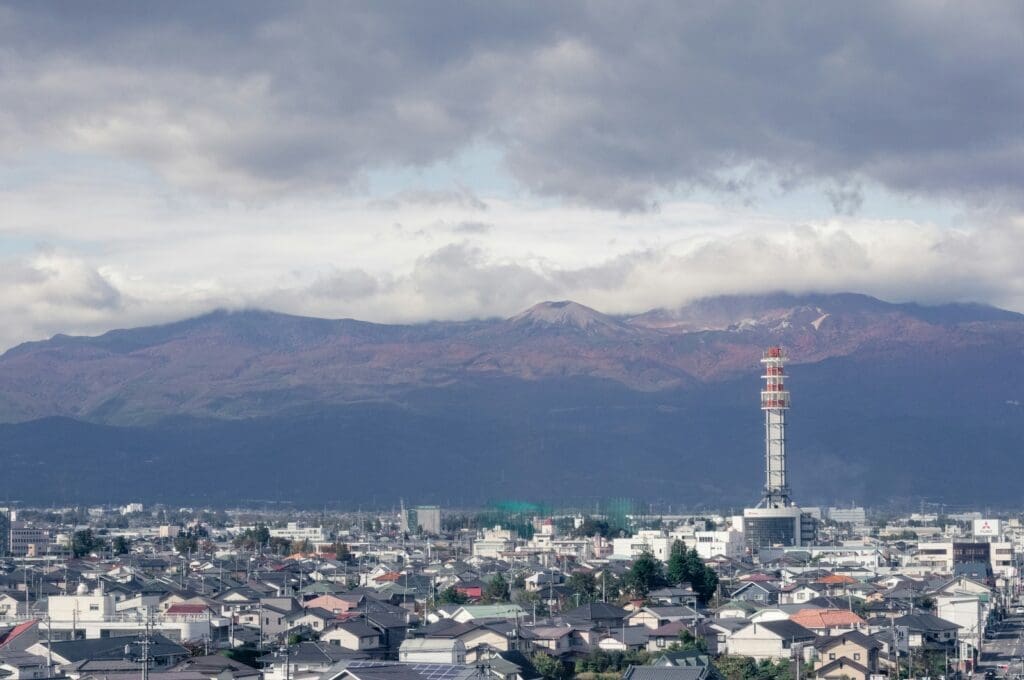
Practical tips for eating well here
- Follow the season. Oysters shine Oct–Mar, apples from autumn, and new soba in late autumn. You’ll eat better by leaning into what’s fresh now.
- Use stations as food hubs. In Sendai Station, I often recommend picking up gyutan bentos or a quick zunda shake between trains. Many Tohoku stations have good local food courts in the basement or upstairs.
- Lunch is prime time. Many shops keep short hours and close early. I like to plan my main meal around 12–1 p.m. and keep dinner flexible.
- Reservations help on weekends, especially for oyster buffets, wagyu dinners, and popular sushi counters.
- Cash still matters at mom-and-pop places and markets, even though cards are more common than before.
Tohoku doesn’t shout about its food, but that’s part of the charm. Eat what the day and the season offer, and you’ll do very well here.
Where to Stay
Plan on two types of nights in Tohoku: easy city bases near train hubs, then a couple of ryokan or onsen stays where you slow down and let the region work its magic. That mix keeps logistics simple and gives you the warm, quiet evenings Tohoku does better than almost anywhere.
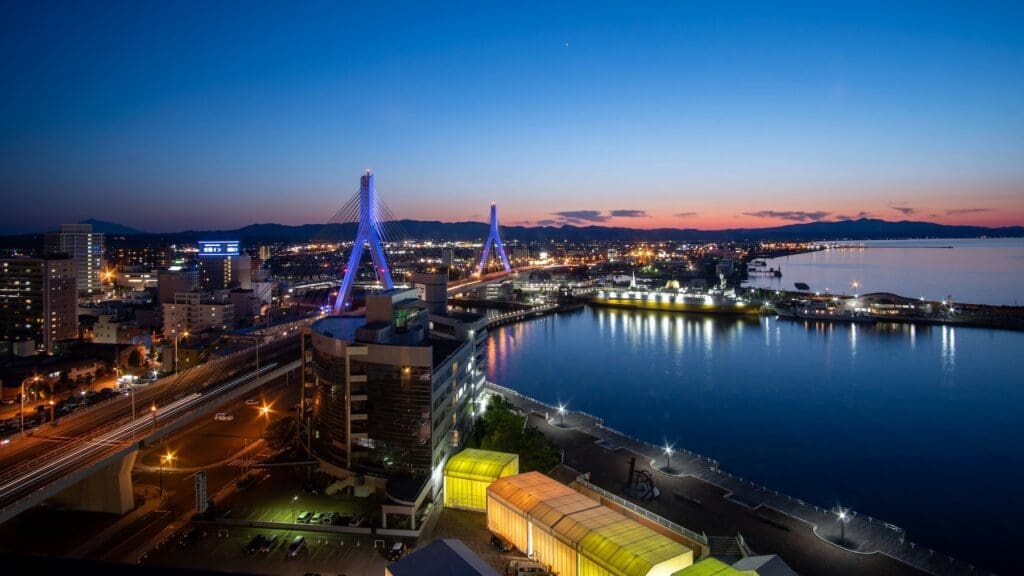
Urban stays: simple, spacious, and near the station
- Cities like Sendai, Morioka, Aomori, Akita, and Yamagata have a ton of clean, good-value business hotels. I usually look for places within a 5–10 minute walk of the main station. You’ll thank yourself when it is snowing or you’re carrying ski gear.
- Rooms in Tohoku tend to be slightly larger than in Tokyo. Two I recommend often: Art Hotel Morioka and Almont Hotel Sendai. Both are reliable, fairly priced, and the rooms are comfortable for a few nights.
- Pricing varies by season, but November and many weekdays are friendly. Expect roughly ¥5,000–10,000 for simple business hotels off-peak, and ¥15,000–25,000 for nicer 3-star hotels in central locations.
- Driving? Confirm parking early. Many city hotels use small mechanical car parks with height limits.
- Watch for smoking vs non-smoking when you book. Some older properties default to smoking rooms.
Ryokan and onsen stays: what to expect
- Dinner and breakfast are usually included, with dinner start times around 6–7 pm. Arrive by late afternoon so you can bathe before eating. If you’ll be late, call the property.
- Baths are gender-separated. Wash first, then soak. Tattoos can be an issue at a few places, but private family baths are common. Ask about kashikiri baths you can reserve by the hour.
- Rooms are often tatami with futon. Staff lay them out while you’re at dinner. If you prefer beds, check room types before you book.
- In winter, remote ryokan may require a bus plus a shuttle. Snow can slow everything down, so keep your arrival window wide.
Ryokan I’d book in a heartbeat
- Matsushima Sakan Shoan, Miyagi: Eleven-room ryokan with pine island views, kaiseki dinners, and hot spring baths. Great if you want a calm base near Sendai and Matsushima Bay. Expect prices in the tens of thousands of yen per night.
- Kakunodate Sanso Wabizakura, Akita: A 200-year-old thatched chalet with samurai-era decor and rooms that have private onsens. It feels like stepping off the grid without losing comfort.
- Osawa Onsen Sansuikaku, Iwate: On the Toyosawa River in Hanamaki with atmospheric baths that have been around for 200 years. Classic tatami rooms and proper futon make it a good first ryokan if you’ve never stayed in one.
- Meigetsuso, Yamagata: Refined, seasonal cuisine and very considered service. Nice pairing with a Zao Onsen or Yamadera visit.
- Nyuto Onsen area, Akita: Not one property, but a cluster of famous rustic inns near Lake Tazawa. Book early. If you can only do one onsen overnight in Tohoku, I’d make it here.

Unique stays that fit Tohoku’s character
- Aoni Onsen, Aomori: “Lamp no Yado,” lit by lanterns at night with no electricity in guest rooms. Quiet, snowy, and memorable in winter.
- Sukayu, Tsuta, and Yachi Onsen, Aomori: Historic mountain baths. Sukayu’s huge mixed bath is a classic, and the snow piles high here.
- Furofushi Onsen, Aomori’s west coast: For sunset soaks on the Sea of Japan. It’s a trek, so stay the night.
- Temple lodging on Mt. Haguro, Yamagata: Shukubo stays serve shojin ryori (traditional Japanese Buddhist cuisine) and put you right on the Dewa Sanzan pilgrimage. Saikan at the summit is the archetype. Reservations require phone Japanese, so I suggest asking a hotel staff member to call for you.
Should you stay in Ginzan Onsen?
It is gorgeous and cinematic, especially with snow, but it’s also very busy and books out far in advance. If you can’t get a room, I don’t recommend the long winter day trip just for photos. Zao Onsen or the Nyuto area will feel more relaxed and you’ll actually have time to enjoy the baths.
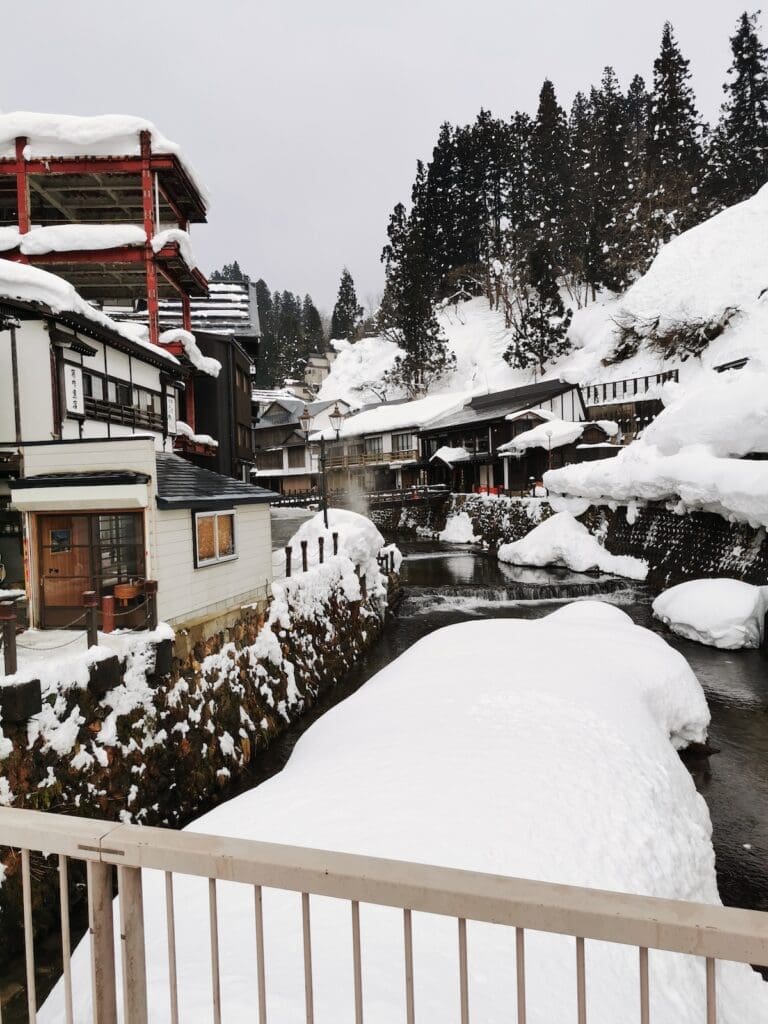
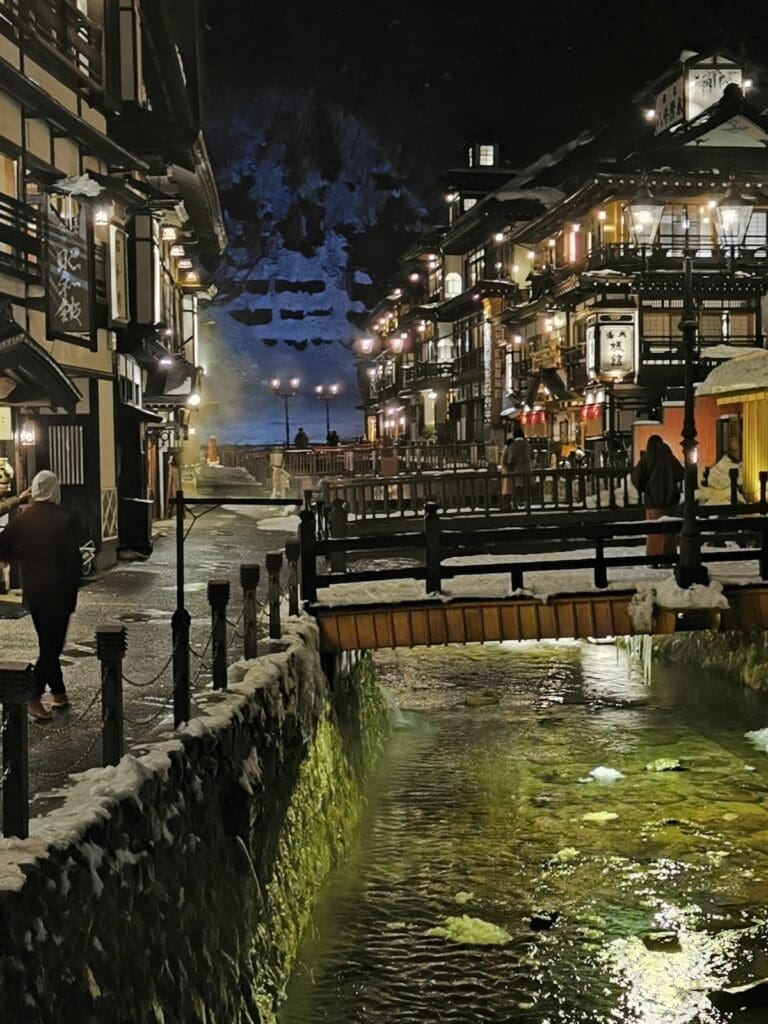
Where to base yourself
- Sendai: Best big-city base with easy food, nightlife, and the Shinkansen. Good for day trips to Matsushima and Zao. I usually start or end here.
- Morioka: Under-the-radar, walkable, with great noodles and quick access to Hiraizumi, Geibikei, and Appi Kogen.
- Aomori or Hirosaki: Aomori for museums and transport, Hirosaki if you want a smaller castle town vibe and apple treats.
- Aizu-Wakamatsu, Fukushima: A solid base for Ouchi-juku and Goshikinuma, with welcoming onsen areas like Higashiyama.
- Akita City or Lake Tazawa/Kakunodate: Use the city for convenience, or stay near Tazawa for easy access to Nyuto Onsen.
- Yamagata City or Zao Onsen: Yamagata for trains and Yamadera access, Zao for ski and snow monsters with baths at your doorstep.
Booking tips that matter in Tohoku
- Book early for festivals and peak seasons. Nebuta in early August, Sendai Tanabata in August, Akita’s Kanto Festival in summer, and Zao’s snow monsters in midwinter all sell out fast.
- Winter is real here. If a property looks remote on the map, assume winter transit requires buffer time, and check last-bus times before you confirm.
- Communicate dietary needs when you book. Kaiseki dinners are seasonal and set. Most ryokan can adjust if told in advance.
- Luggage transfer is your friend. Send big bags between city hotels and ryokan with a next-day service, then travel light on local trains and buses.
- If you’re planning to move every day, I suggest slowing down. Two or three nights per base makes the most of Tohoku’s spread-out sights and reduces the chance that a delayed rural train wrecks your evening check-in.
Budget stays
- Capsule hotels and simple guesthouses are scattered through the larger cities, usually from around ¥4,000 per person. They’re clean, safe, and fine for a quick night.
- In smaller towns, look for minshuku, family-run inns that serve homestyle meals. They can be some of the most personal stays you’ll have.
A quick reality check for winter
Some towns quiet down heavily after dark. Kakunodate in January, for example, feels almost dreamlike at night but there is not much open. If you want more dinner options, base in a nearby city and day trip. If you want silence and snow, book the ryokan and lean into it.
If you only remember one thing, make it this: pick one or two onsen nights and book them early, then fill the rest with easy, station-close hotels. That balance gives you the comfort, the food, and the steamy baths people remember years later.
Getting Around Tohoku
Distances are bigger and timetables thinner than in Tokyo or Kansai, so plan transport first, then stack your sightseeing around it. The good news: once you understand the backbone routes, Tohoku is easy to move through.
At a glance:
- Fastest: Shinkansen. Tokyo to Sendai ~1.5 hours, Tokyo to Fukushima ~1 hour, Tokyo to Shin-Aomori ~3 hours.
- Flexible: Local trains and buses connect most towns, with handy loop buses in popular areas.
- Most freedom: Renting a car, especially for onsen areas, trailheads, and coastal scenery.
- Flights: Useful into Sendai or Aomori from elsewhere in Japan, but from central Tokyo the Shinkansen is usually faster door to door.
Shinkansen: your main artery
- Tohoku Shinkansen runs from Tokyo to Shin-Aomori via Fukushima, Sendai, and Morioka. From Morioka, the Akita “mini-shinkansen” (Komachi) continues to Kakunodate and Akita. The Yamagata “mini-shinkansen” branches from Fukushima to Yamagata and Shinjo. If you’re including Niigata, that’s the Joetsu Shinkansen from Tokyo.
- Hayabusa and Komachi services are all-reserved. Reserve seats in advance, especially during festivals like Nebuta and Tanabata or over long weekends. I recommend booking scenic trains early too, like Resort Shirakami on the Gono Line along the Sea of Japan.
- Use the Shinkansen for long hops, then switch to local trains or buses for the last miles. I like to base in Sendai, Morioka, or Aomori and spread day trips from there. It keeps moving days simple and gives you a buffer if weather turns.
Regional trains and loop buses

- Local trains are reliable but not as frequent. Expect hourly (or less) service on some lines. Build in slack and always check the last return.
- Handy local routes:
- Sendai: Loople bus circles major sights. The 2-day Sendai Marugoto Pass is great value if you’re doing Sendai + Matsushima by train.
- Hirosaki: Dotenmachi Loop Bus (100 yen) for castle/old town hops.
- Hiraizumi: “Run Run” loop bus connects the station with Chusonji and Motsuji (typically seasonal/weekends; confirm dates).
- Rural buses fill gaps where trains don’t go. In winter, they can be more reliable than certain mountain rail lines if strong winds pick up. Pay in cash or with IC cards where accepted; some buses are cash-only.
When winter weather hits
- Northern and inland lines are built for snow, but wind can suspend certain services, especially single-track mountain lines. I recommend keeping a Plan B: swap morning/afternoon activities, pivot to a museum, or use a short taxi hop between sights to save time.
- Example: the Senzan Line to Yamadera is doable in winter, but give yourself more time and wear proper footwear. If trains slow down, it doesn’t ruin your day.
- Mountain roads like the Hachimantai Aspite Line close in winter and reopen mid-April with those huge snow walls. Zao’s crater road also closes seasonally.
Regional rail passes that make sense
- JR East Pass (Tohoku Area): flexible-day pass covering Shinkansen and JR lines across Tohoku. Typically 5 flexible days within a 14-day window; other options sometimes appear seasonally. It’s available to foreign residents in Japan too.
- JR East Pass (Nagano, Niigata Area): good if you’re combining Tohoku with Niigata.
- JR East–South Hokkaido Pass: useful if you want to include Hakodate with Aomori.
- I suggest using pass days for the long jumps (e.g., Tokyo > Sendai > Morioka > Aomori) and paying out of pocket for short local rides. That’s where you get real value.
Driving: when it’s worth it (and how to do it right)
- Car rental gives you freedom for places like Nyuto Onsen, Dakigaeri Gorge, Oga Peninsula, the Sanriku Coast viewpoints, and trailheads around Towada/Oirase or Shirakami Sanchi. I recommend driving if your plans lean rural.
- Practicalities:
- You’ll need an International Driving Permit (1949 Geneva convention) plus your home license, unless you have a Japanese license.
- Reserve a car with winter tires between November and April; 4WD helps on rural roads. Highways are well plowed, but black ice happens.
- Get an ETC card from the rental company for tolls. They’ll charge you at return.
- Service areas are frequent and excellent. Keep your tank healthy in remote areas, especially at night.
- Caution: speed limits are low, wildlife crossings are real, and mountain roads can shut suddenly in storms. If you don’t feel good about winter driving, don’t. I would just lean more on trains/buses and pick bases near the places you want.
Flights and airports
- Gateways: Sendai Airport (south) and Aomori Airport (north). From Tokyo, the Shinkansen often beats flying once you add airport transfers.
- Sendai Airport Access Line runs straight to Sendai Station in about 25 minutes. Aomori Airport has a frequent bus to Aomori Station.
- Flights are useful if you’re arriving from elsewhere in Japan (Okinawa, Kyushu) and want to drop right into the region quickly.

Ferries and coastal links (optional)
- If you include Niigata, Sado Kisen runs ferries to Sado Island. On the Miyagi coast, boats connect to Tashirojima (Cat Island) from Ishinomaki or Onagawa. Check seasonal schedules and sea conditions.
Simple tools that make Tohoku easier
- IC cards: Suica works across JR East trains and most city buses; rural buses can still be cash-only, so carry coins.
- Luggage: use a delivery service to jump your big bag ahead a day or two. I usually forward luggage when I know I’ll be changing bases with a lot of local transfers.
- Taxis: great for last-mile hops, especially around Hiraizumi (temples) or between gorge stations when connections are awkward. Not cheap, but time well spent.
How I’d stitch it together
- Use the Shinkansen for the spine: Tokyo > Sendai > Morioka > Aomori (or the reverse). Layer in side trips to Matsushima, Hiraizumi/Geibikei, Kakunodate, Zao Onsen, and Towada/Oirase using local trains/buses or a rental car where it makes sense.
- In winter, I recommend building a little elasticity into each day. Aim your must-do outdoor activity at the first good weather window, then fill the rest with flexible city sights, onsen, or food stops.
- If you prefer a driver’s trip, start in Sendai, loop up the Sanriku Coast, cross to Towada/Oirase, down through Hirosaki and Akita to Nyuto/Kakunodate, then back via Yamagata and Zao. It’s a beautiful circuit and easy to trim if the weather turns.
Bottom line: use trains for speed, buses for reach, and a car for the remote corners. I book Shinkansen seats early, keep a light bag, and don’t fight the weather. Tohoku rewards the traveler who plans just enough, then stays flexible.
Practical Tips for Visiting
Tohoku is easy to love and a little slower to navigate. Distances are bigger, trains and buses are less frequent, and winter weather can change plans. Build in buffers, keep a flexible day plan, and you’ll have a smoother trip.
- Plan fewer stops per day than you would in Tokyo or Kyoto. I recommend aiming for one anchor activity and one nice-to-have.
- In winter, strong winds can suspend mountain or single‑track train lines even when snow looks manageable. Buses often keep running. Check live service updates in the morning and have a Plan B.
- Carry cash. Small restaurants, rural buses, and family-run inns still prefer yen. 7‑Eleven and Japan Post ATMs work with most foreign cards.
- IC cards like Suica work in cities, but some rural buses take cash tickets only. If there’s a numbered ticket machine when you board from the rear, grab a ticket and pay at the front when you get off.
- Luggage logistics matter. Snow and slush make rolling bags painful. I recommend sending a suitcase ahead with takuhaibin and using a backpack for 1–2 nights.
- Screenshots are your friend. I save bus timetables, platform numbers, and last departure times in case I lose signal in the mountains.
- Onsen rules are strict. Shower first, no swimsuits, keep towels out of the tub. If you have tattoos, bring a cover patch or ask at check-in. I also keep a small pack towel in my day bag.
- Eat on the early side in smaller towns. Many places stop taking orders around 7:30 or 8 p.m. Convenience stores fill the gaps.
- For winter walking, simple slip-on traction spikes make temple stairs and icy sidewalks much safer. Yamadera and castle parks can be slick.
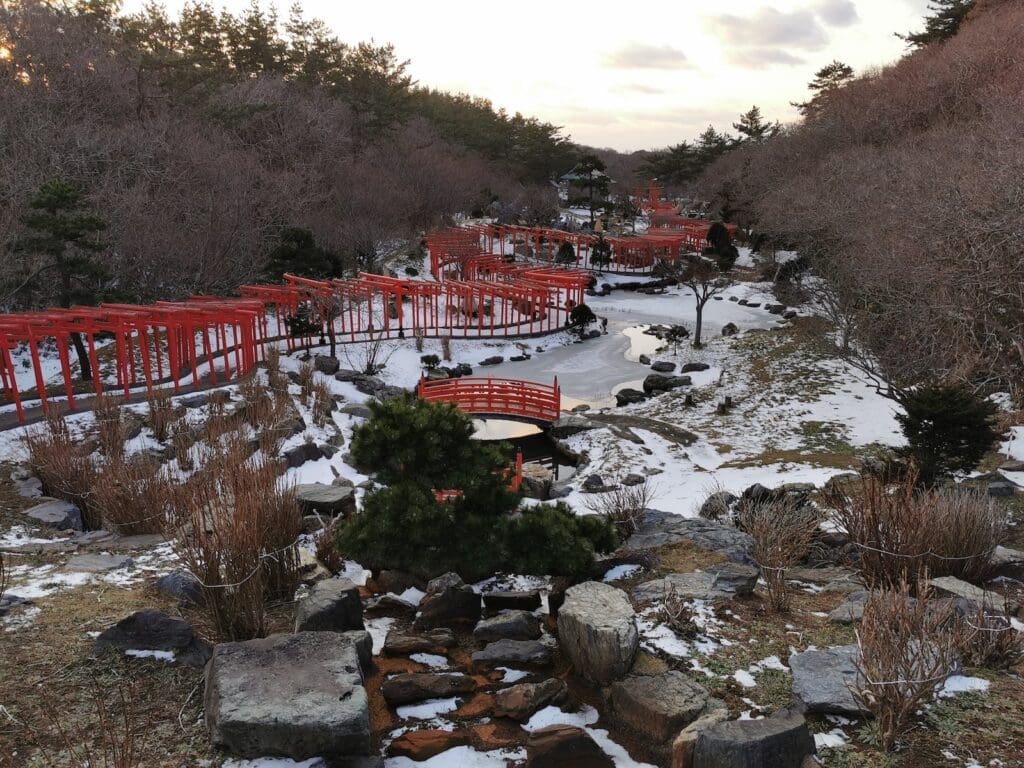
Language and Communication
English is limited outside major hubs like Sendai, Aomori, and Morioka. People are kind and try to help, but simple Japanese plus good tools goes a long way.
- Tourist information centers in larger stations are excellent. If I need bus details, I go straight there and confirm the return times on the spot.
- On local buses, announcements can be Japanese only. Sit near the front, show the driver the stop name on your phone, and they will usually give you a nod when it’s time to get off.
- Trains: Shinkansen have bilingual announcements. Local lines sometimes don’t. I suggest checking the departure board carefully and confirm with staff if I’m unsure.
- Phone coverage is strong in towns, but some valleys and gorges have patchy signal. I recommend keeping offline maps for Oirase Gorge, Hachimantai, and rural lake areas.
Useful phrases that actually help:
- Sumimasen: Excuse me or sorry. Polite and versatile.
- Onegaishimasu: Please. Good for ordering or asking for help.
- Arigatou gozaimasu: Thank you.
- X wa doko desu ka?: Where is X?
- Ikura desu ka?: How much is it?
- Kippu: Ticket. Noriba: Bus stop platform.
- Suica tsukaemasu ka?: Can I use Suica?
- Genkin: Cash.
When talking in English, slow down your speech, smile, and point to the exact item on the menu. It sounds small, but it smooths 90 percent of interactions.
If you want to learn more Japanese before your trip, I recommend downloading my Japanese for Travelers course. It contains hundreds or words, expressions, and kanji (Japan’s writing system) that you will 100% encounter during your trip. This will be especially in a region like Tohoku, where English signs are less frequent and most people don’t understand English at all.

Etiquette, Tipping, and Operating Hours
Etiquette
- Keep voices low on trains and in small restaurants. Queue neatly and don’t block doors.
- Garbage cans are scarce. Carry a small bag for trash and sort it at your hotel or convenience store.
- Remove shoes at homes, ryokan, and some restaurants. Use the provided slippers. If you see separate toilet slippers, switch to them for the bathroom only.
- Onsen basics: rinse thoroughly before soaking, no swimsuits, no cameras or phones in bathing areas, tie up long hair, towels stay out of the water.
- Money handling: place cash on the small tray by the register and receive change with two hands.
Tipping
- No tipping. Service staff will chase you down if you leave money on the table. A simple “arigatou gozaimasu” is perfect. Some ryokan include a service charge in the bill — that’s standard.
Operating hours
- Sights like castles, museums, and gardens typically open around 9 a.m. and close by 4 or 5 p.m., with last entry 30–60 minutes before closing. In winter, hours are often shorter.
- Many museums and smaller attractions close on Mondays or Tuesdays, and some gorges or mountain roads shut seasonally. I recommend double-checking websites the night before, especially for ropeways and lake cruises.
- Lunch is usually 11:30–14:00, dinner 18:00–20:00 for regular restaurants. Izakaya in cities run later, but in rural towns kitchens often close early. I try to sit down by 7 p.m.
- Trains and buses run less frequently than in big cities, and the last service can be earlier than you expect. Confirm the final departure back to your base, and don’t count on catching “the next one” without checking.
- Festival days change everything. Streets get busy and some stores close. If you are visiting during a major event, book meals and transport earlier than usual.
A few more small things I do that help
- Keep some 100‑yen coins for lockers and buses.
- Carry a lightweight umbrella and a compact warm layer year‑round. Weather flips fast on the coast and in the mountains.
- If you are renting a car, bring an International Driving Permit, ask for an ETC card for tolls, and make sure the car has winter tires from late fall. Mountain passes can close without much notice.
Follow these basics and you will find Tohoku easy to navigate, even when plans flex a little. It is a region where simple prep pays off.

Responsible and Sustainable Travel
Traveling in Tohoku can be low-impact and high-benefit if you plan with intention. The region relies on tourism revenue to protect parks and keep small towns alive, especially along the Sanriku Coast that rebuilt after 2011. I recommend thinking in two directions at once: reduce your footprint and increase your positive spend locally.
Move thoughtfully
- Favor trains over flights. The Shinkansen is fast, comfortable, and cleaner than hopping a short domestic flight. Regional passes help you cover long distances while keeping plans flexible.
- Build margin into winter itineraries. Up here, strong winds can pause certain train lines even when roads and buses are fine. Have a Plan B and be patient with staff if schedules shift.
- Go slower, stay longer. Using places like Sendai, Aizu-Wakamatsu, or Morioka as bases for 2–3 nights cuts transport emissions and puts more money into a single community rather than skimming many.
- If you drive, avoid idling, keep speeds steady, and park only in designated lots. In snow country, carry chains when required and don’t block plows.
Respect nature and seasons
- Stick to marked trails at Zao, Dewa Sanzan, Towada-Hachimantai, and Oirase. In winter, stay on groomed routes. The “snow monsters” at Zao look tough but the rime can be fragile.
- Pack out your trash. Bins can be scarce, and locals notice who leaves places clean.
- Keep noise low in forests and temple areas. Drones are often banned near shrines and national parks.
- In mountain towns, bears are a real consideration. Obey closure signs and avoid early dawn or dusk walks in wooded areas.
- Onsen etiquette matters for both hygiene and rivers downstream. Wash well before bathing, never add soap to a tub, and keep towels out of the water.
Support communities, not just sights
- Choose locally owned stays. Family-run ryokan and minshuku are common across Tohoku. Your room rate pays staff who live right there, and dinner is usually seasonal and sourced nearby.
- Eat what the region is proud of. Aomori apples, Matsushima oysters in season, Morioka’s noodle trio, Aizu sauce katsu, Yonezawa beef, Akita kiritanpo. Ordering local specialties puts money into producers, not just chain restaurants.
- Buy direct. Cider from Hirosaki, sake from breweries in Hachinohe, Akita, or Sakata, crafts from Kakunodate. Even small purchases add up.
Be a good guest at festivals and shrines
- Follow staff instructions. Don’t touch floats or portable shrines. Keep to the sides during parades.
- Ask before photographing people, especially performers and residents in smaller towns.
- Carry a small bag for your own litter. Festival areas get crowded, and bins fill fast.
- Drop a coin or small note in the offering box at shrines and temples you visit. It helps with upkeep more than you think.
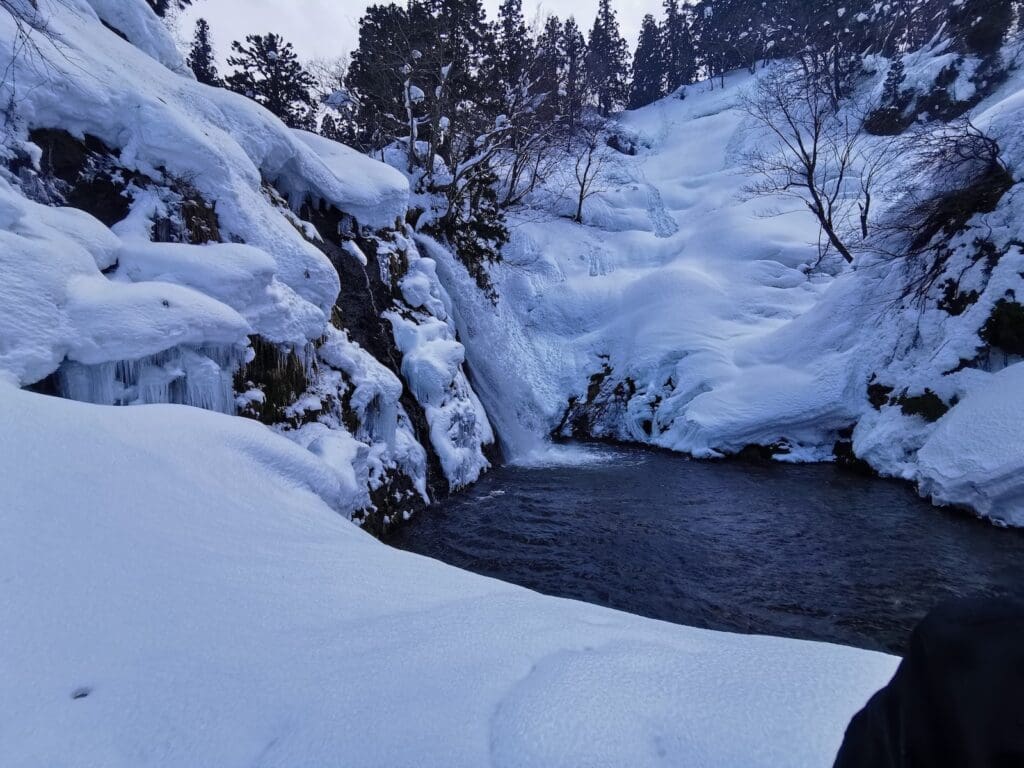
Animal welfare and wild spaces
- Do not feed wildlife or stray cats, on islands or anywhere else. It changes behavior and can harm animals.
- I personally skip attractions that use animals in ways that raise welfare questions and instead spend that time in national parks or on guided nature walks.
Energy and water sense
- In winter, many inns use kerosene heaters. Keep doors and windows closed and turn heaters down when you leave the room.
- Reuse towels, take shorter showers, and bring a reusable bottle. Tap water is safe across Tohoku.
Plan for safety so locals don’t have to rescue you
- In snow and on icy steps (Yamadera is a classic example), wear proper footwear or simple microspikes. Falls are common, and mountain rescue is not the souvenir you want to bring home.
- On ski days at Zao or Appi, check the forecast and go for the first clear weather window. If visibility collapses, call it and enjoy the hot springs instead.
Simple ways to give back during your trip
- Choose at least one night in a small ryokan with dinner. That meal alone supports multiple local suppliers.
- Join a short guided walk on the Michinoku Coastal Trail or a community-run tour in Hiraizumi or Matsushima.
- Visit a sake brewery or orchard and pay for tastings. Buy a bottle to take home if you liked it.
- Drop a small donation at national park visitor centers that maintain trails.
Japan is pushing hard for cleaner energy and better conservation. Travelers can help by doing the obvious things well: ride the train, sort your trash, spend your money with locals, and treat every village like it’s your own neighborhood. In Tohoku, that approach goes a long way.
The Bottom Line
Tohoku isn’t about ticking off a checklist of sights—it’s about the feel of space, the rhythm of slow mornings, and the honesty that comes from places not shaped by mass tourism. The best trips here are built by leaving some gaps, taking chances on local food, staying a little longer in one place, and being ready to swap your plans if the weather or a local festival pulls you in a new direction. What you put in—curiosity, patience, respect—comes back multiplied. If you give Tohoku real time instead of rushing through, you’ll leave with memories that stick. That’s the value here, and I haven’t found it anywhere else in Japan.

